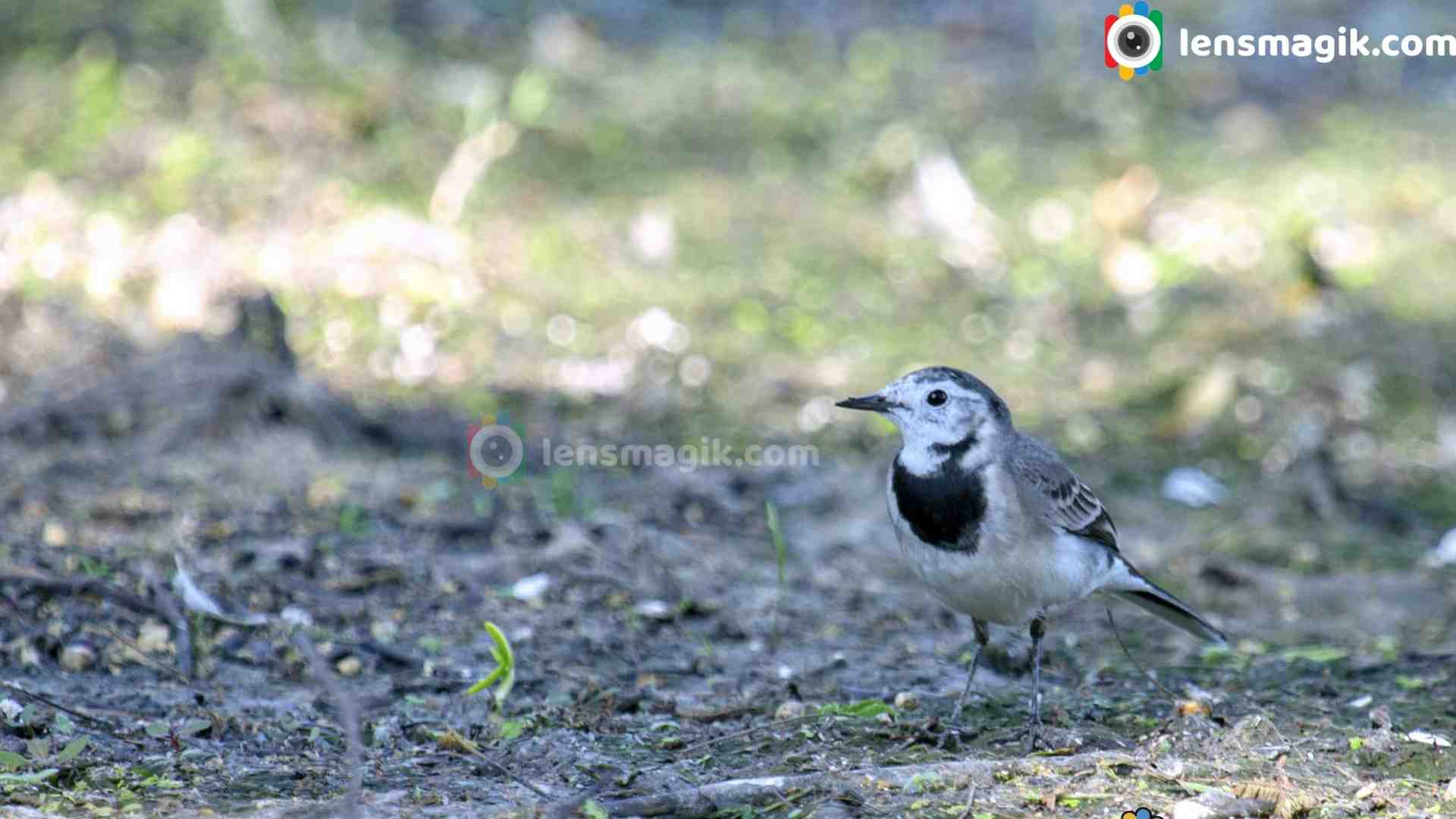
White wagtail is a small passerine bird. It is included in family Motacillidae. It is also included in Pipit and Longclows. White wagtail is a charming little bird. It is recognized by its constant tail wagging. So that its name on its behavior Wagtail. It is resident bird of Mideast parts or migrates to Africa. Some dark sub spices like Pied Wagtail and water wagtail found in Ireland and Great Britain. It generally found near water, ponds, lakes, wetlands and some agriculture areas.
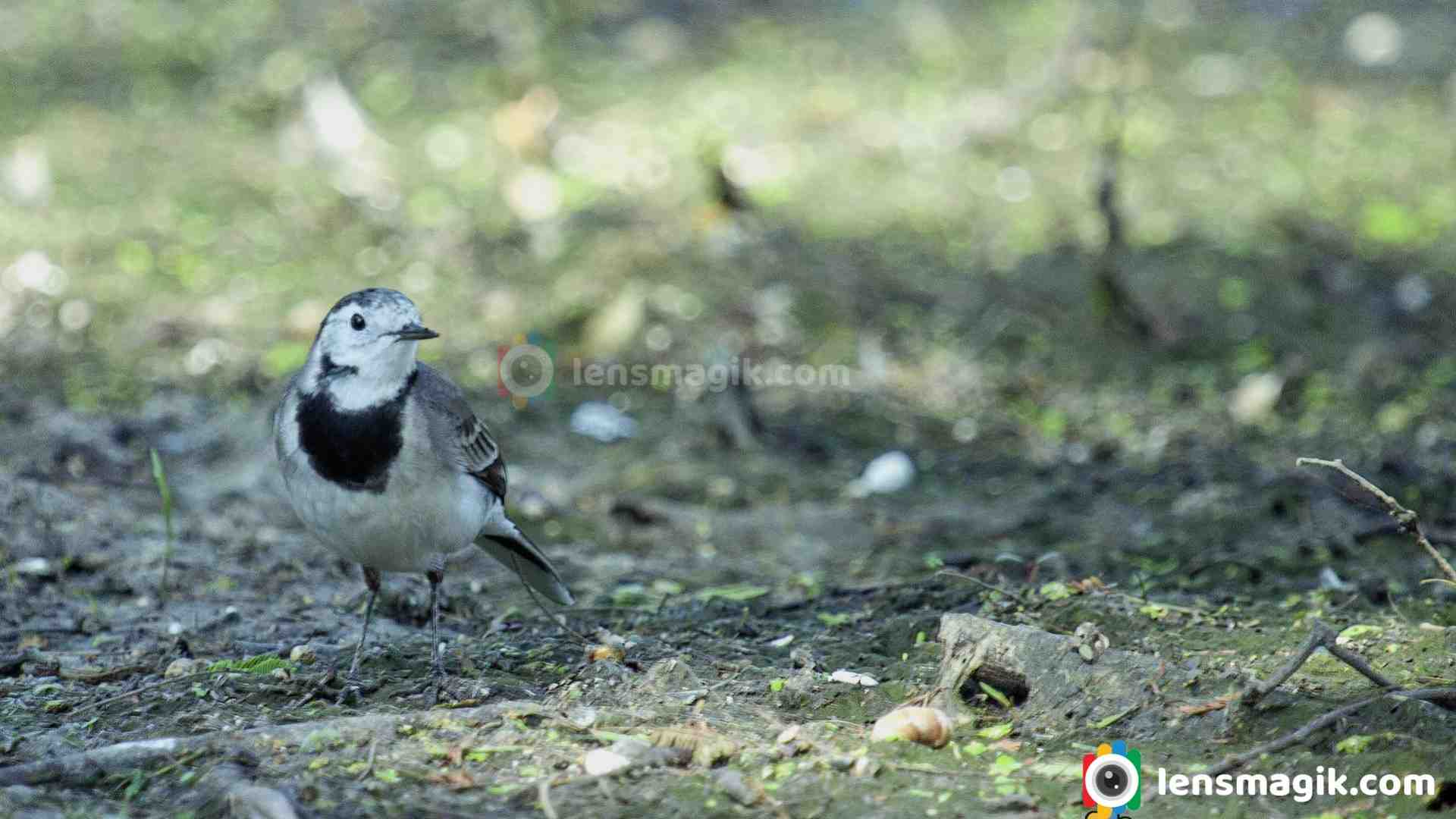
Facts and Description about White Wagtail :
- Size : It is small in size about 16 -19 cm. Weight around 25 gm. It has slender body and Long tail.
- Color : It is black and white in color. Sub spices has some variation in color.
- Diet : It feeds invertebrates and small insects.
- Habitat : It generally found near water bodies like pond, lake, wetland. They are adaptable and also found in urban areas also.
- Behavior : It is active foragers and active all the time lookout for insects. Most distinctive characteristic is its tail constantly moving for balancing , attracting mates and communications.
- White wagtail is National bird of Latvia.
- Lifespan of white wagtail in wild is up to 12 years.
- There are many sub spices with little varying plumage pattern.
- White wagtail generally seen in Pair or in group.
- It breed in Europe, Asia and some part of North Africa.
- The call of White Wagtail is Chisick .
- Breeding season for white wagtail is April to August.
- They lay 3-8 eggs cream colored.
- It is in Least concern in IUCN list.
White wagtail bird is found in many sanctuaries in Gujarat like Thol Bird Sanctuary, Nal Sarovar Sanctuary, Pariej Wetland and many more wetland and lakes in Gujarat. I found first time at Thol Lake in Gujarat during summer. It generally migrate for food and cold season. It was very long time i capture in my camera. I shoot it at ground level by crawling and get good result as well .
Location : Photos taken at Thol Bird Sanctuary
Camera Used : Canon 1000 D, Canon 100-400 mm lens.
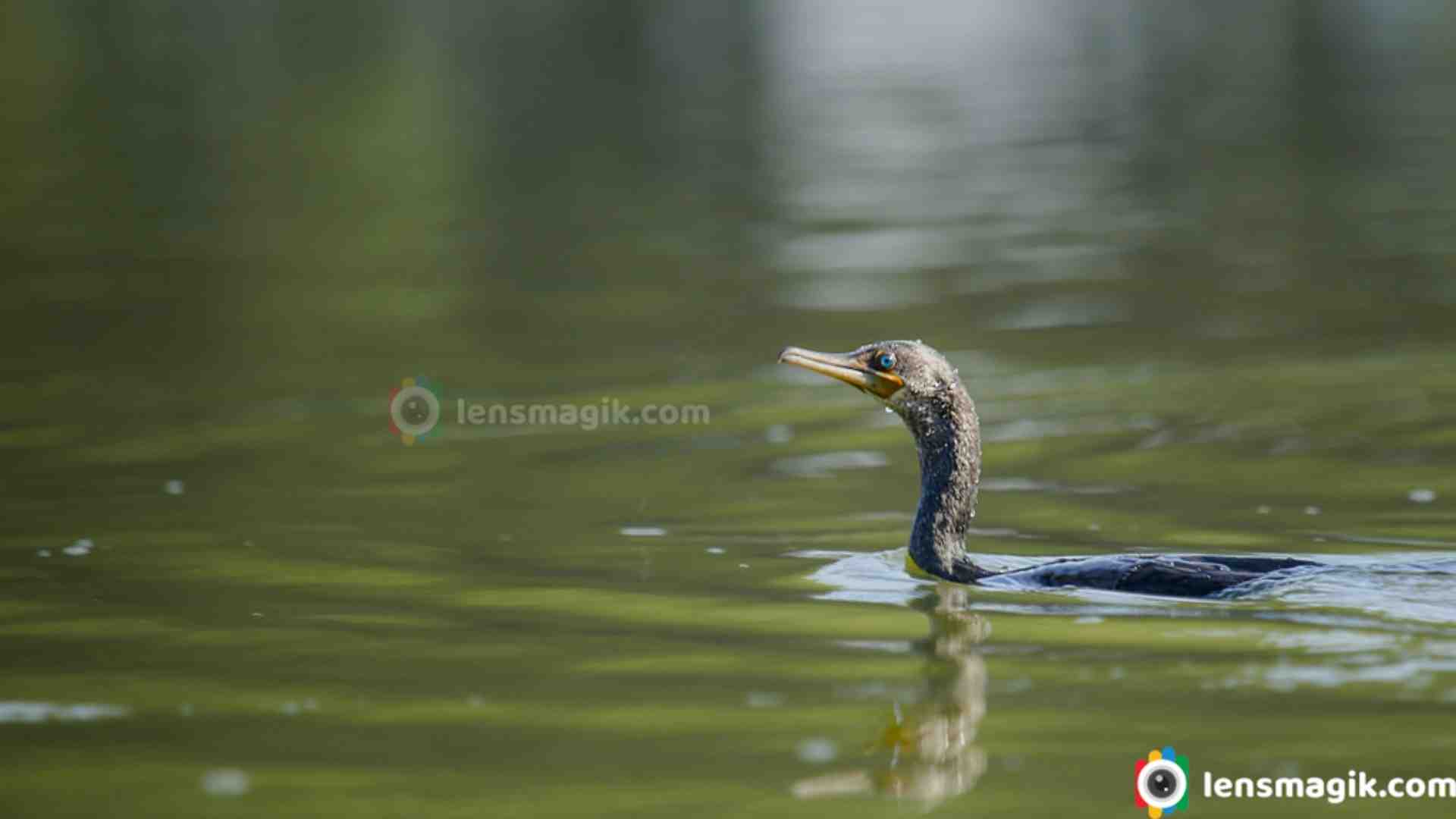
Little Cormorant is a member of cormorant family. It is widely distributed in India. It is found in Sri Lanka, All over India, Bangladesh, Myanmar, Pakistan and lower Nepal. They generally found at pond, lake and wetlands near agriculture and village areas. In Gujarat they found at many places like Thol Bird Sanctuary, Nal Sarovar Sanctuary, Velavadar Sanctuary and also some wetlands near Little rann of Kutch and many other areas. They are good diver in the water and also famous for fishing expert dive into water and catch the fish. In Gujarat the best place to see Little Cormorant is Thol Bird Sanctuary and Nal Sarovar Sanctuary.
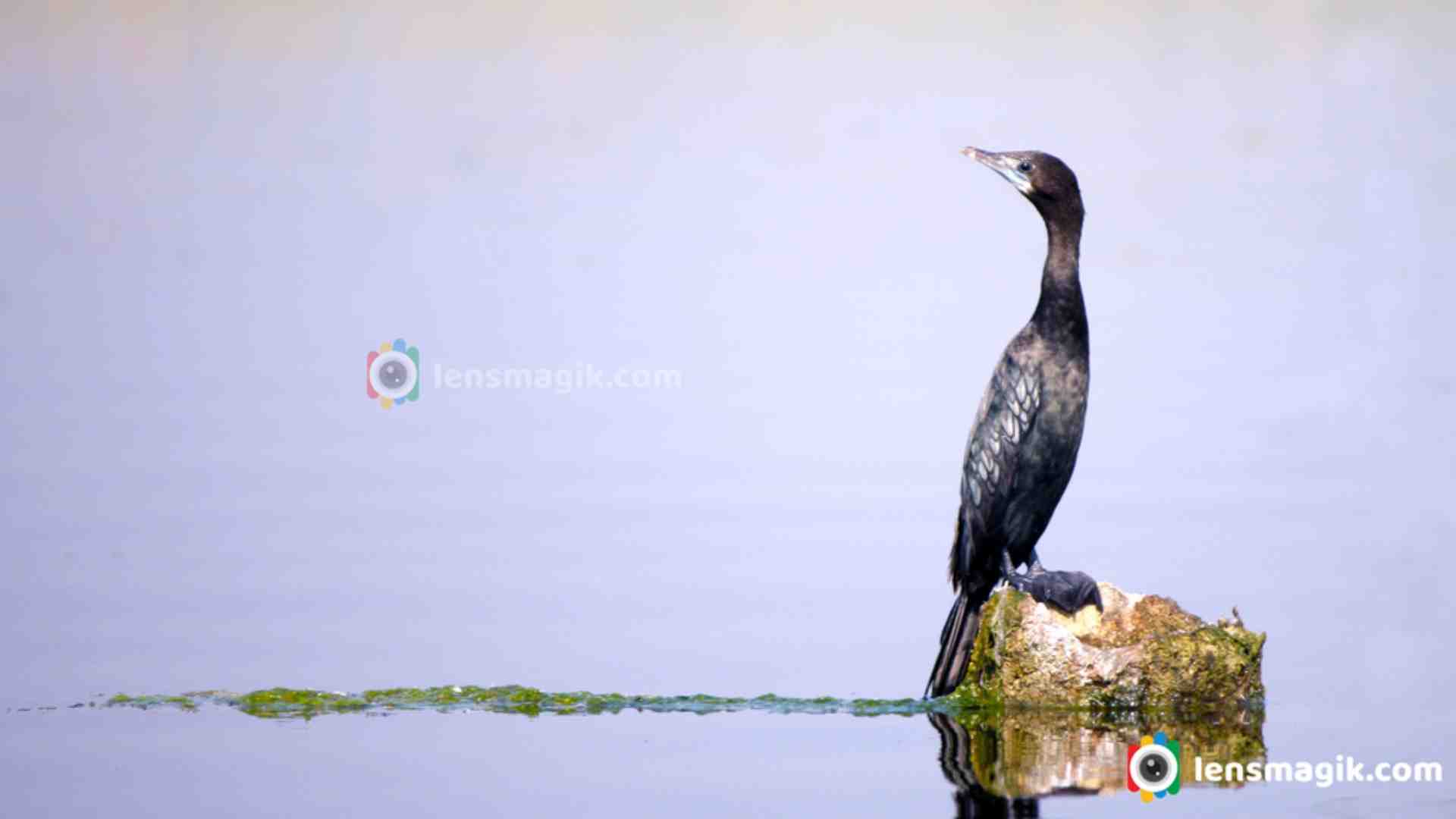
Description of Little Cormorant :
- Size of Little cormorant is smaller than Indian Cormorant. The Length of little cormorant is around 50 cm.
- The bill of little cormorant is shorter and stouter compared to Indian Cormorant.
- Color of Little Cormorant is black. There is some variation during breeding and plumage in different season. Breeding adult have white spot on their face.
- The main diet of Little cormorant is Fish. They can dive into the water and catch the fish underwater.
- Little Cormorant found in Inland and Coastal water bodies including ponds, lakes, rivers and coastal areas.
- They generally seen in small groups but can also be solitary.
- Breeding season for Cormorant is July to September in Pakistan and in India season is November to February.
- Both male and female built nest together. It will take two weeks to built nest.
- They lay eggs in interval of two days around two to six eggs.
- Incubation period around 15-20 days. After that eggs hatched. After one month young birds are free to leave nest.
- The call of Little Cormorant is ah-ah-ah and kok-kok-kok .
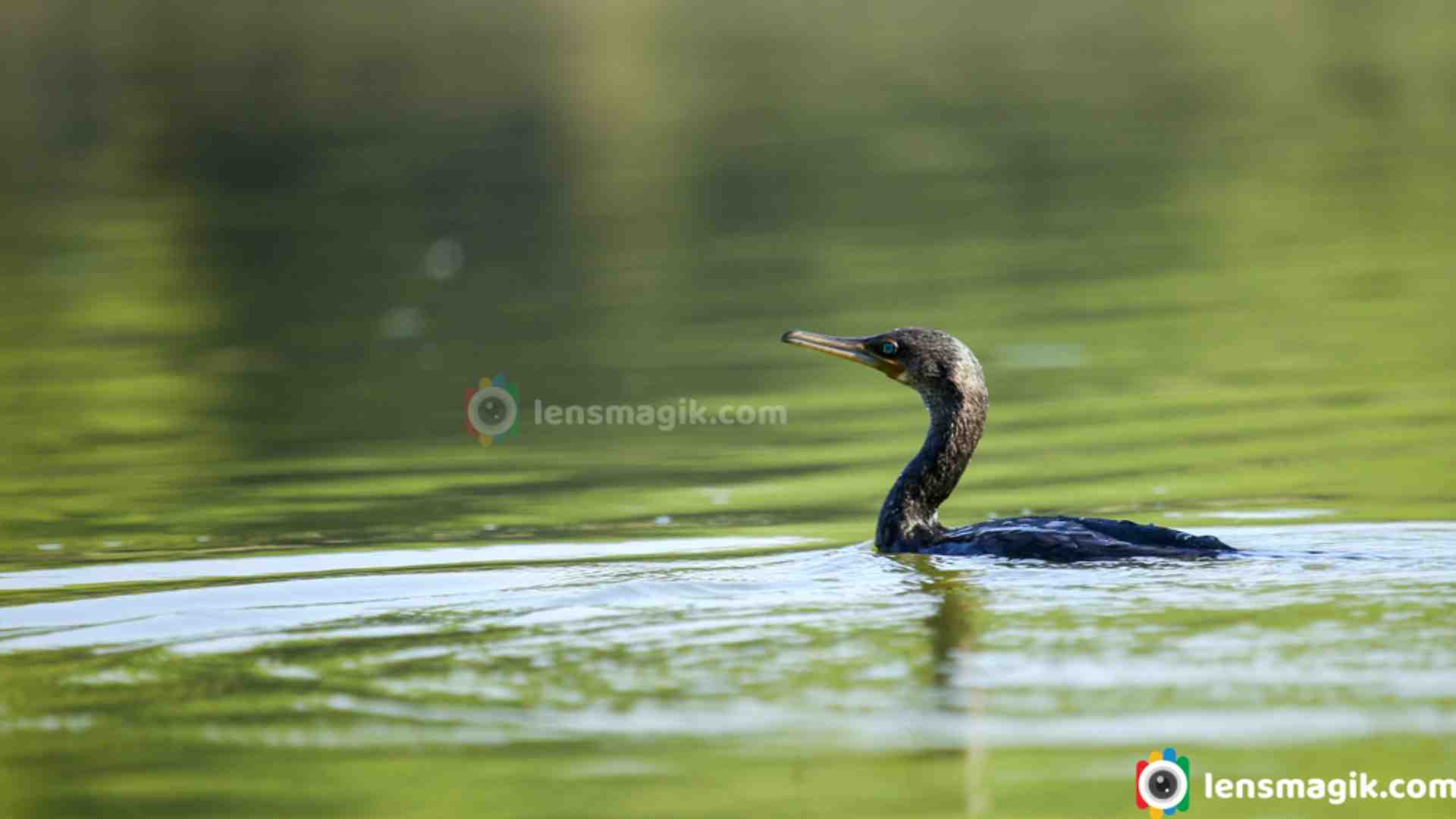
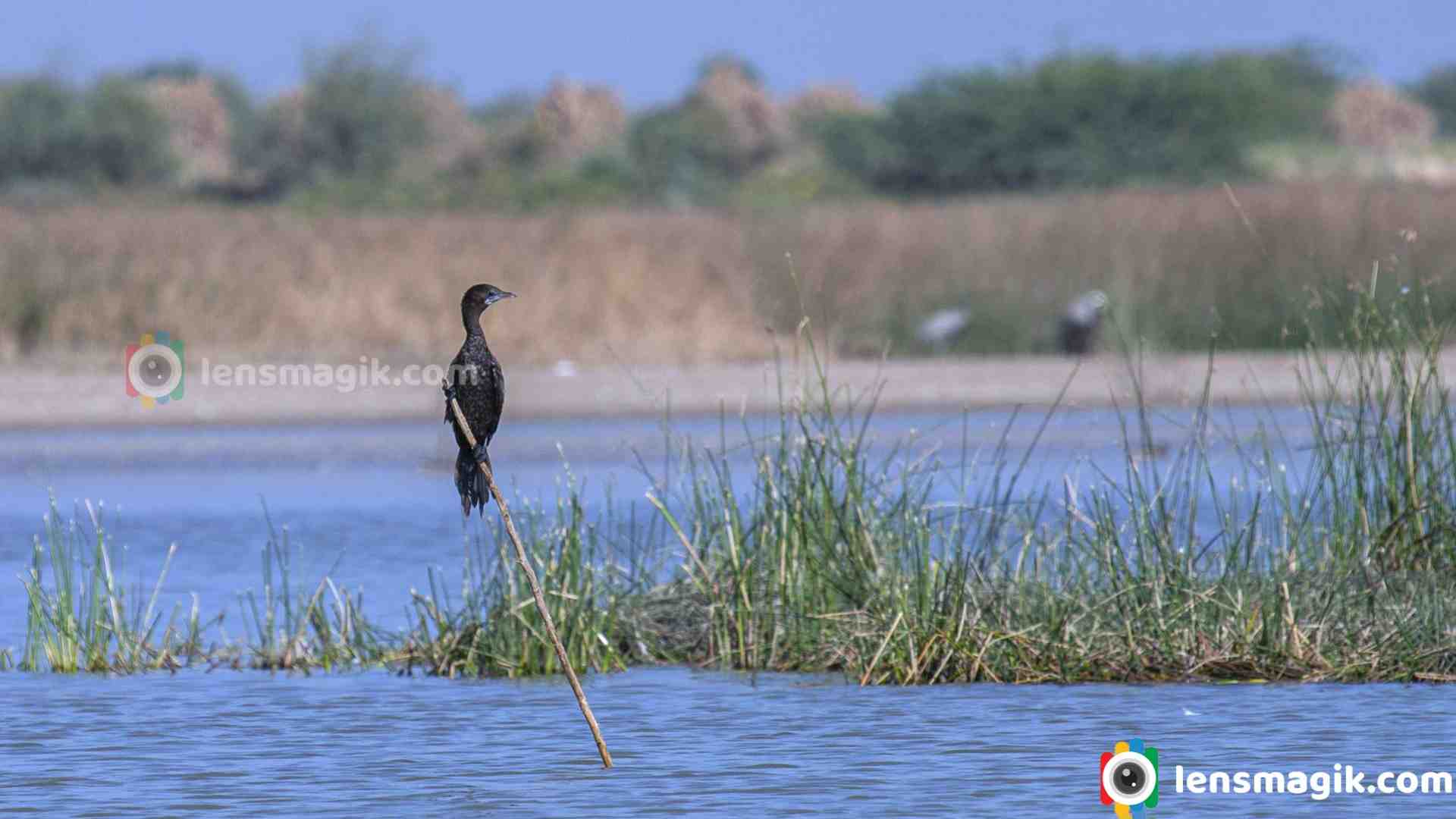
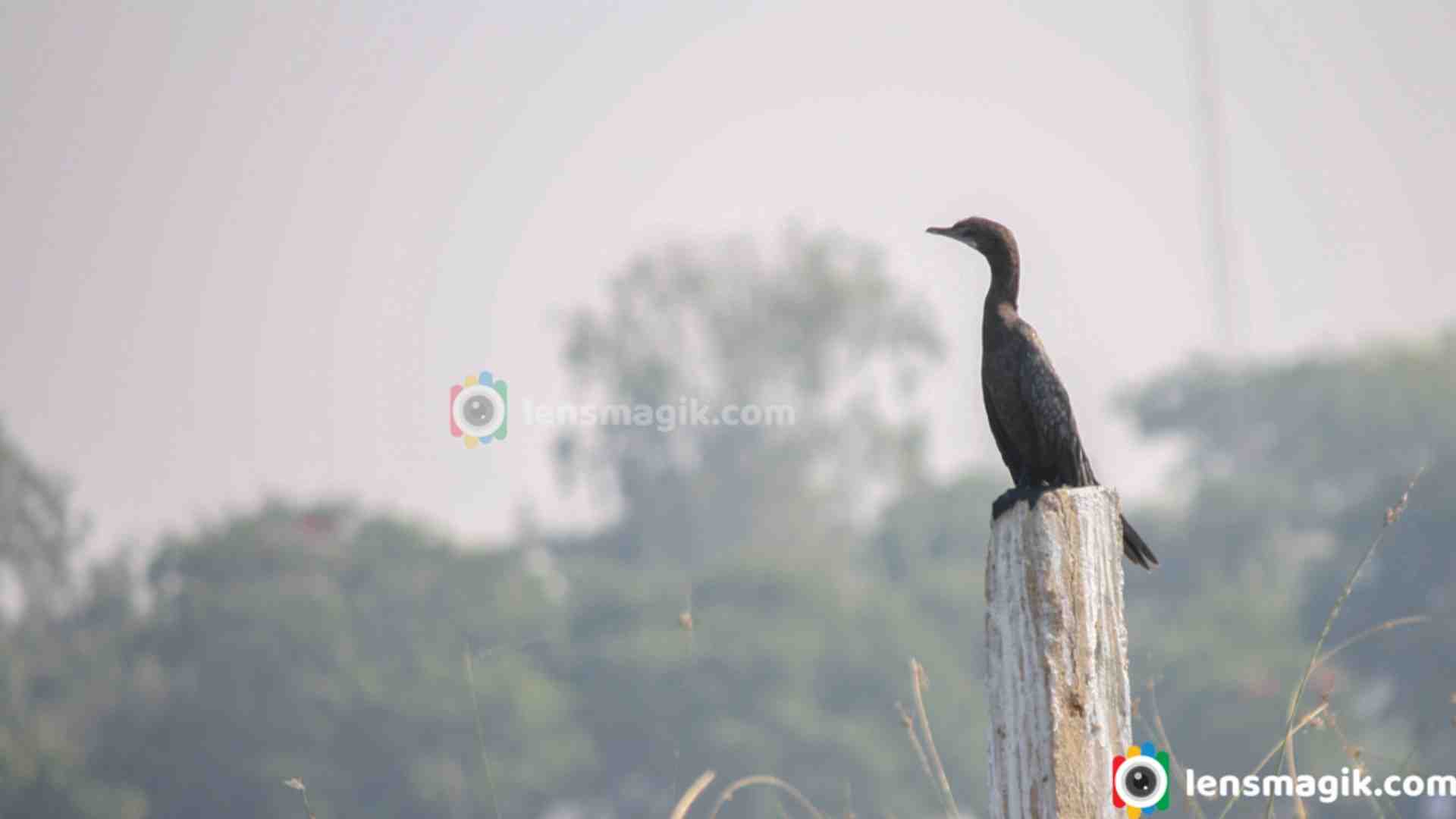
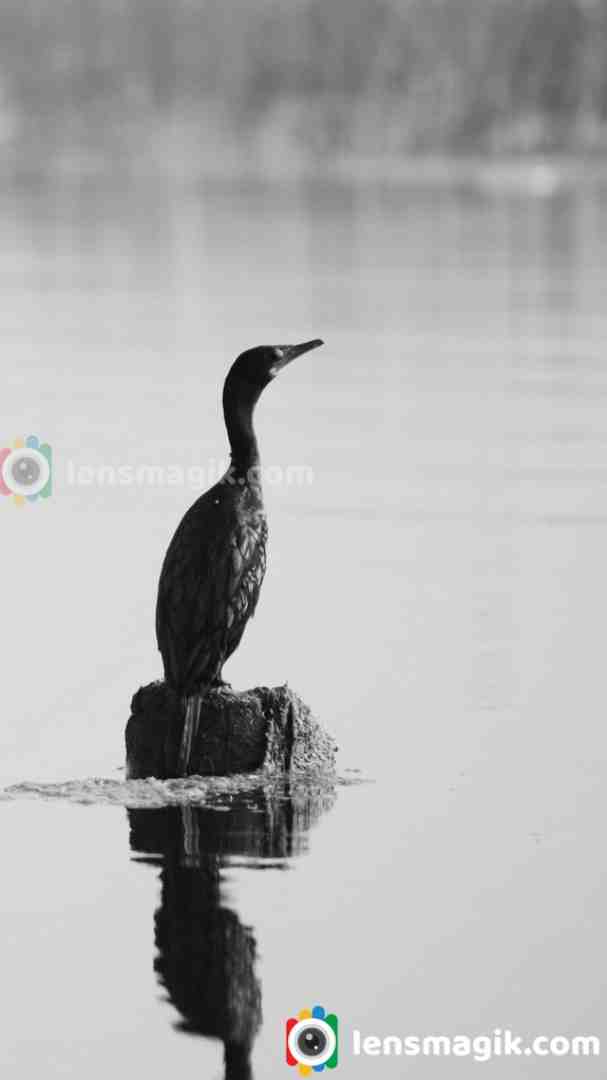
Little Cormorant is widely spread in India. You can easily find them near pond, lake and many wetland areas . You can easily identify little cormorant as its color is full black and its beak. Also they stand on tree trunk or on tree with spreading their wings for a long time. After waiting for sometimes little cormorant dive into water and catch fish and come out from water. Little cormorant is famous for its hunting skill. It is resident bird in India. Also Greater Flamingo, Great White Pelican, Bar Headed Goose, Eurasian Spoonbill, Many Ducks and many migratory birds found at Nalsarovar and Thol Bird sanctuary.
Location : Thol Bird Sanctuary, Little Rann of Kutch, Nal Sarovar Sanctuary
Camera used : Canon 1000 D, Canon 80 D, Canon 6 D, Canon 100-400 mm lens
Read more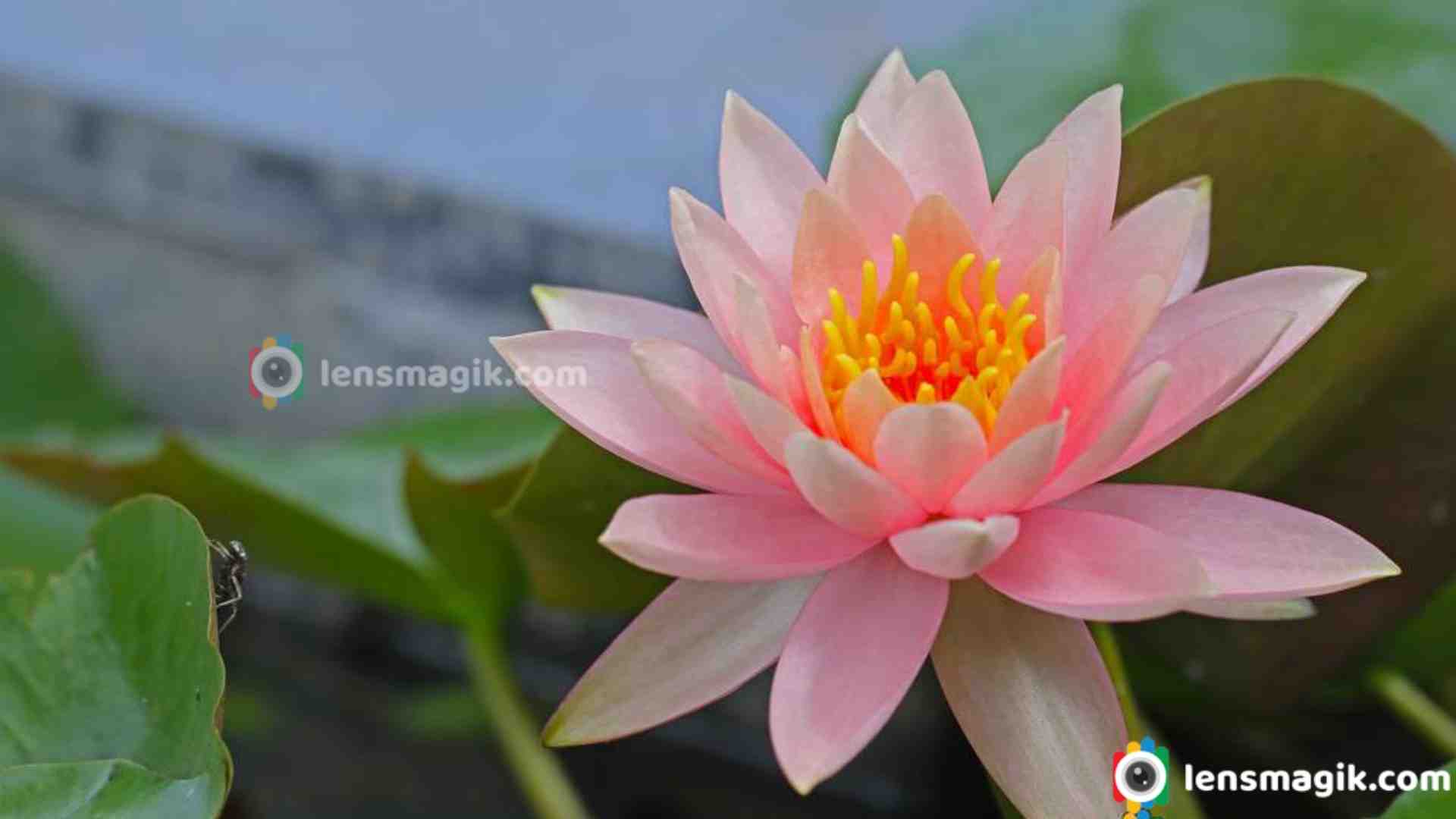
Lotus is a beautiful flower which is also have different names like Indian Lotus, Sacred Lotus or Simply Lotus. Scientific name of Lotus is Nelumbo Nucifera. It is distinct from water lily. Lotus is a aquatic plant. Lotus plant grow in flood plains and slow moving rivers. Lotus drops thousand of seeds in bottom of the water or pond. Some sprout and wildlife eat some of seeds and rest seeds remains dormant for sometimes until pond dries out. During flood these seeds broken and rehydrate and begin to new lotus colony. Lotus is a National Symbol of India and known as National Flower of India.
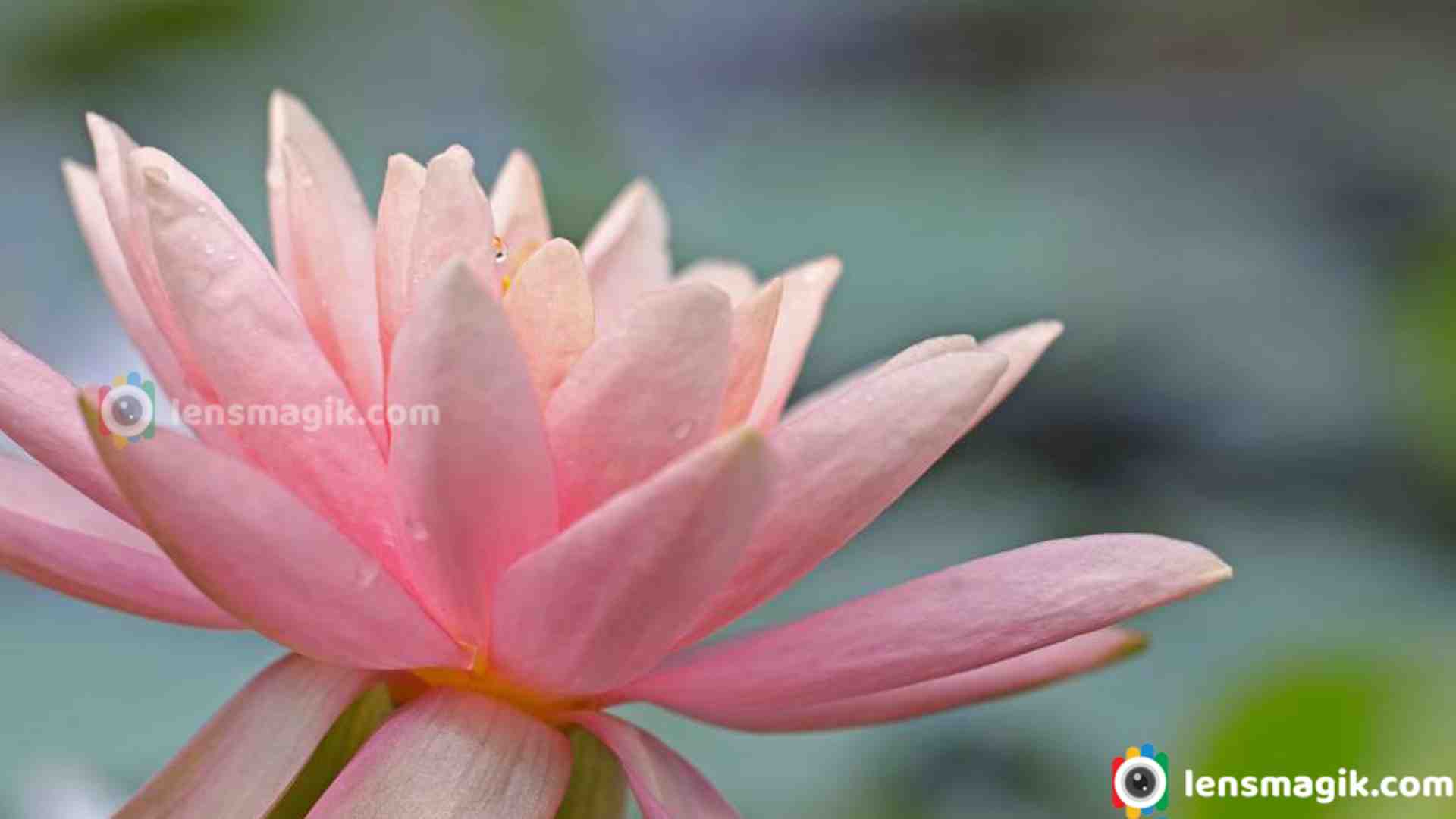
Botanical Features :
- Lotus leaves are large, round and green. They looks like waxy coating.
- Lotus has large and showy flowers. Flowers blooms in the morning and close at night. Lotus flower color range is from Pink to White.
- Lotus flower grow in muddy water or flood areas. Lotus flower roots entrenched in the mud.
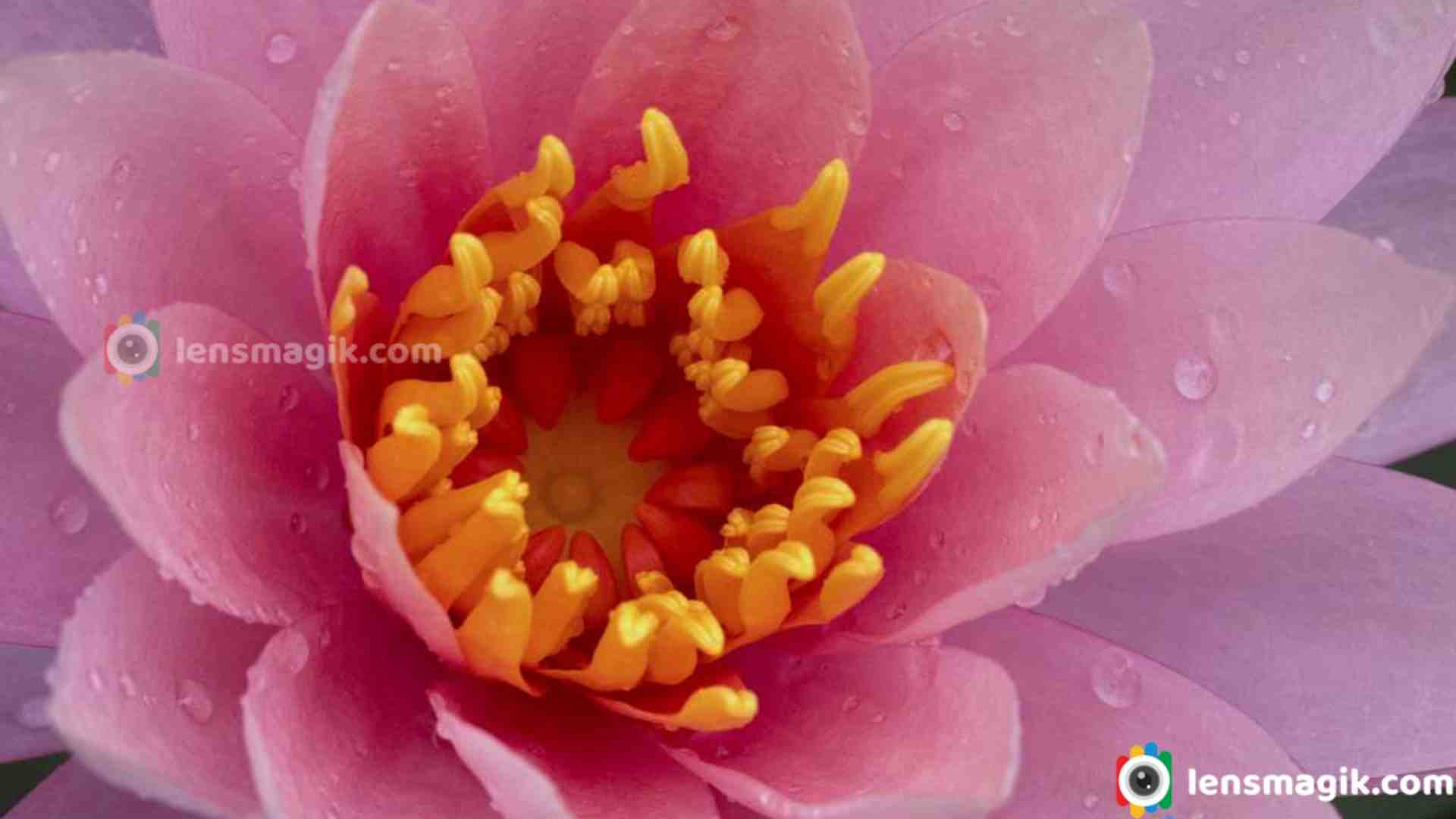
Some Interesting Facts about Indian Lotus flower :
- Lotus seed remains viable for many years. The oldest lotus germination from seeds around 1300 years old from Northeastern China. So Chinese regard plant as symbol of Longevity.
- Lotus flower has wide native distribution from central to northern India. Also it is found in Northern Indo China and East Asia.
- Lotus is a National Flower of India and Vietnam.
- Lotus flower is known for its self cleaning properties. As it grow in muddy water its petals remains clean due to waxy surface.
- All parts of lotus plants are edible and also used in Asian cuisine.
- Lotus flower is known as Kamal or Padma in India.
- Lotus is called sacred flower because it represent the Sun and also a fertility symbol.
- There are four types of Lotus (1) Boontharik (2) Sattabongkot (3) Sattabutre (4) Pathum
- Lotus flower has good lifecycle than any other plant. It submerges at night in the pond and re blooms on next morning. so Lotus flower is very special flower then other flowers.

Cultural and Spiritual Significance :
- Lotus flower is sacred in Hinduism. It is specially associates to Goddess Laxmi and Lord Vishnu . Goddess Laxmi is goddess of wealth and prosperity and Lord Vishnu is preserver God.
- Lotus symbolized beauty, wealth, purity and knowledge.
- In Diwali day of Dhanteras we do a puja of Goddess Laxmi. Goddess Laxmi sit on the Lotus flower and we dedicate a fresh lotus flower to Goddess Laxmi during a puja.
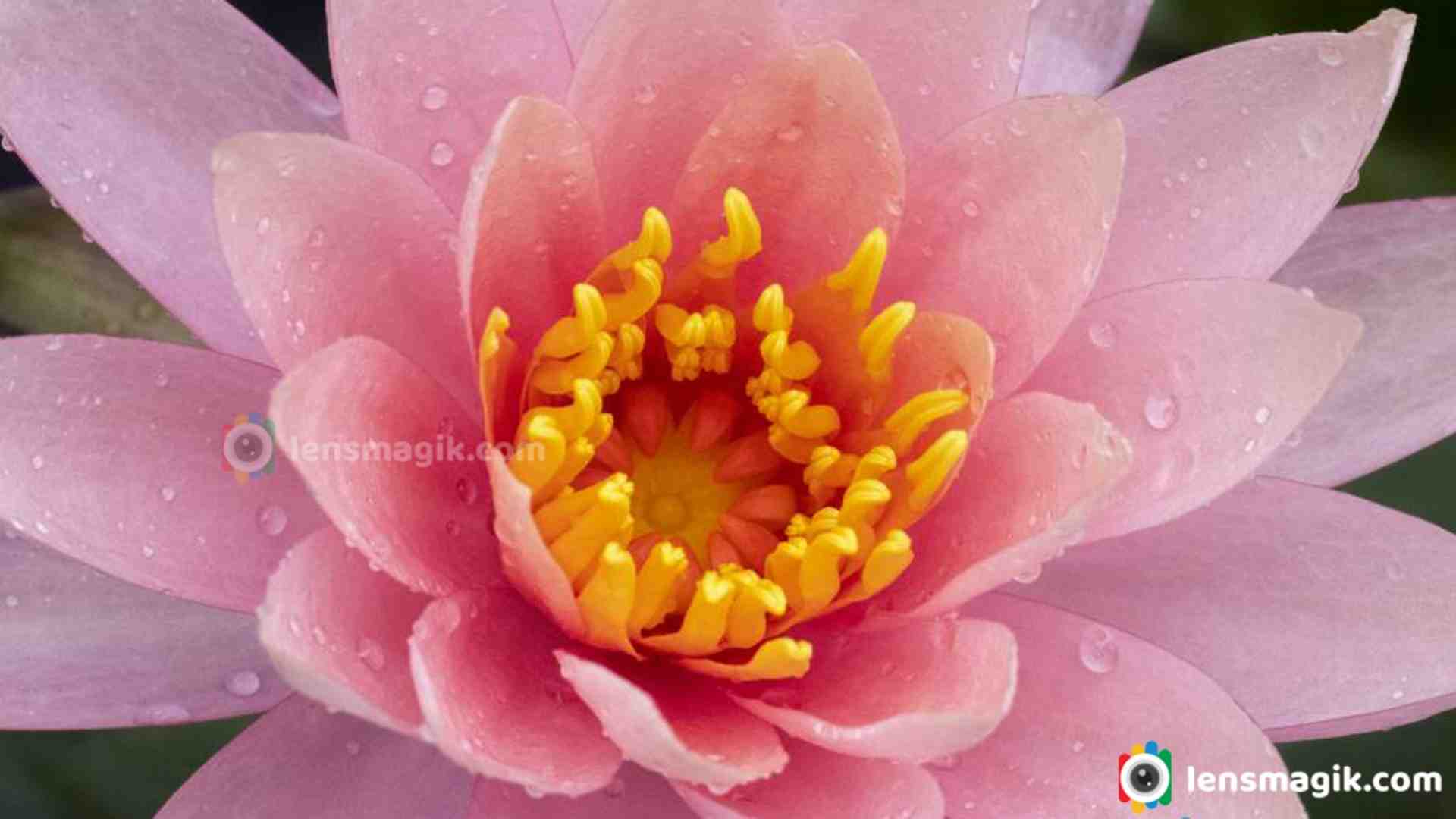
Health Benefit of Lotus flower :
- Lotus flower helps to reduce blood sugar and high cholesterol level.
- It helps to prevent diarrhea.
- It helps to add nutrients to the body.
- It helps to reduce inflammation.
- It helps to regulate menstrual cycle.
- It helps to prevent growth of Cancer.
So Lotus is very useful and popular flower in India and also in China. In India Lotus flower used by Hindu Gods so it is very important flower for Hindus. Also it helps in medical science too and have many useful act in some diseases. Most interesting thing about lotus flower is it grow up in the morning and submerge at night at same place in water. Also some Lotus plant can live 50 to 100 years.
Camera Used : Canon 80 D, Canon 100 mm Macro lens
Read more
Black Throated Bushtit is also known as Black Throated Tit. It is small passerine bird of Aegithalidae family. It is found in Northern India, North Eastern Bangladesh , Bhutan, Nepal, Vietnam , Myanmar and Taiwan. In India it found mainly in Himalayan range at more than 5000 ft height. I found it at Himachal Pradesh during my trek to Chandrakhani Pass. It is found in small bushes and small trees. Black Throated Tit is small bird so it is difficult to find in bushes. But its wonderful colors and body attract to capture its image.
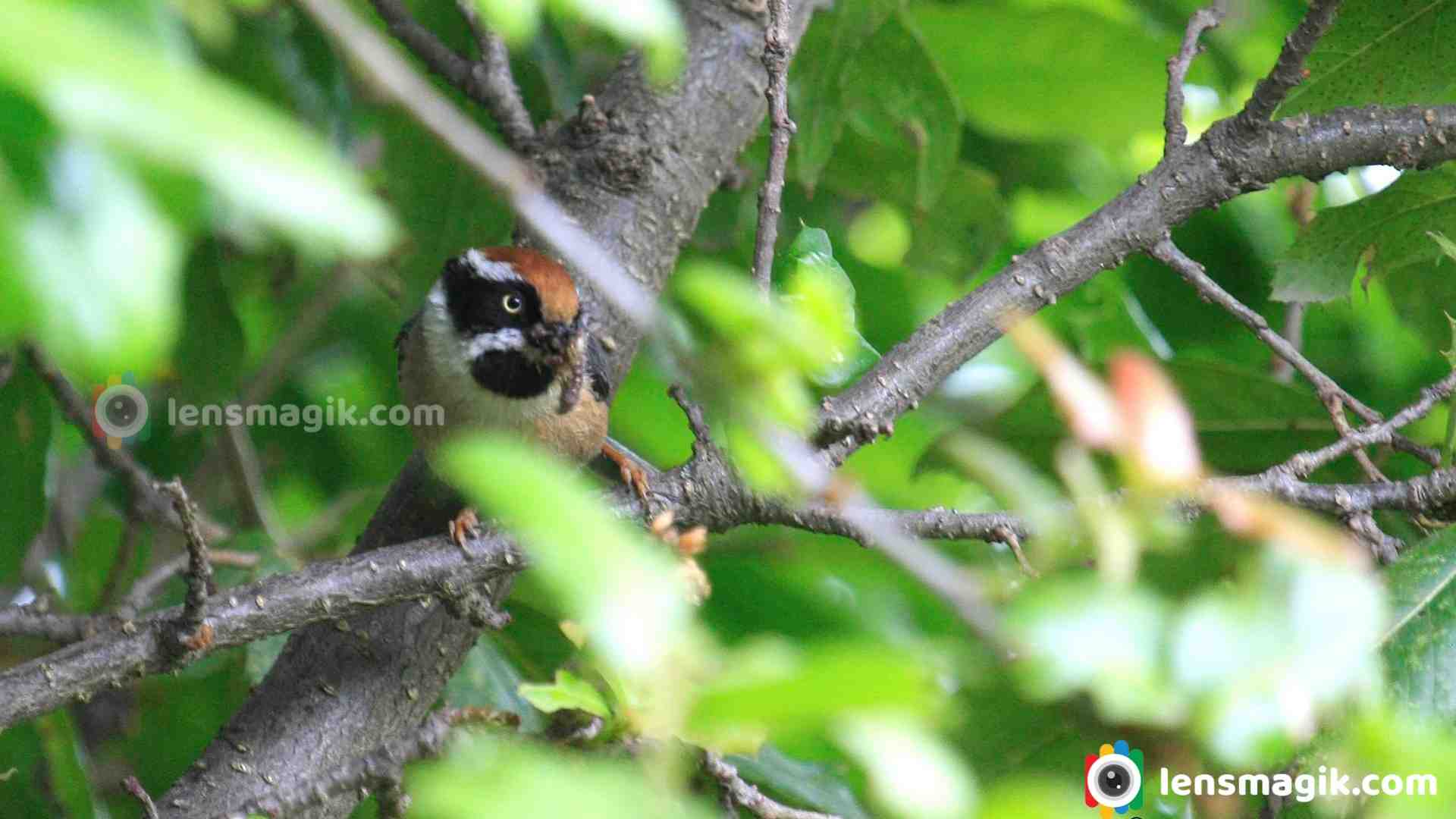
Facts and Description of Black Throated Tit :
- Black Throated Tit is around 10.5 cm long. Weight of it is around 4-9 gm.
- There is a variation in plumage depending on subspecies . All have medium tail , black throat and black bandit mask around the eye.
- Dark grey back and wings, tail and belly are white.
- Black Throated Tit is travel in large flocks around 40 birds.
- They built their nest out of moss and hang from tree branches.
- Black Throated Tit feed small insects and spiders. They also feed small seeds, fruits and berries .
- It lives in open broadleaf forest and also at pine forest.
- Binomial name of Black Throated Bushtit is Aegithalos concinnus.
- Black Throated tit is Least Concern in IUCN list.
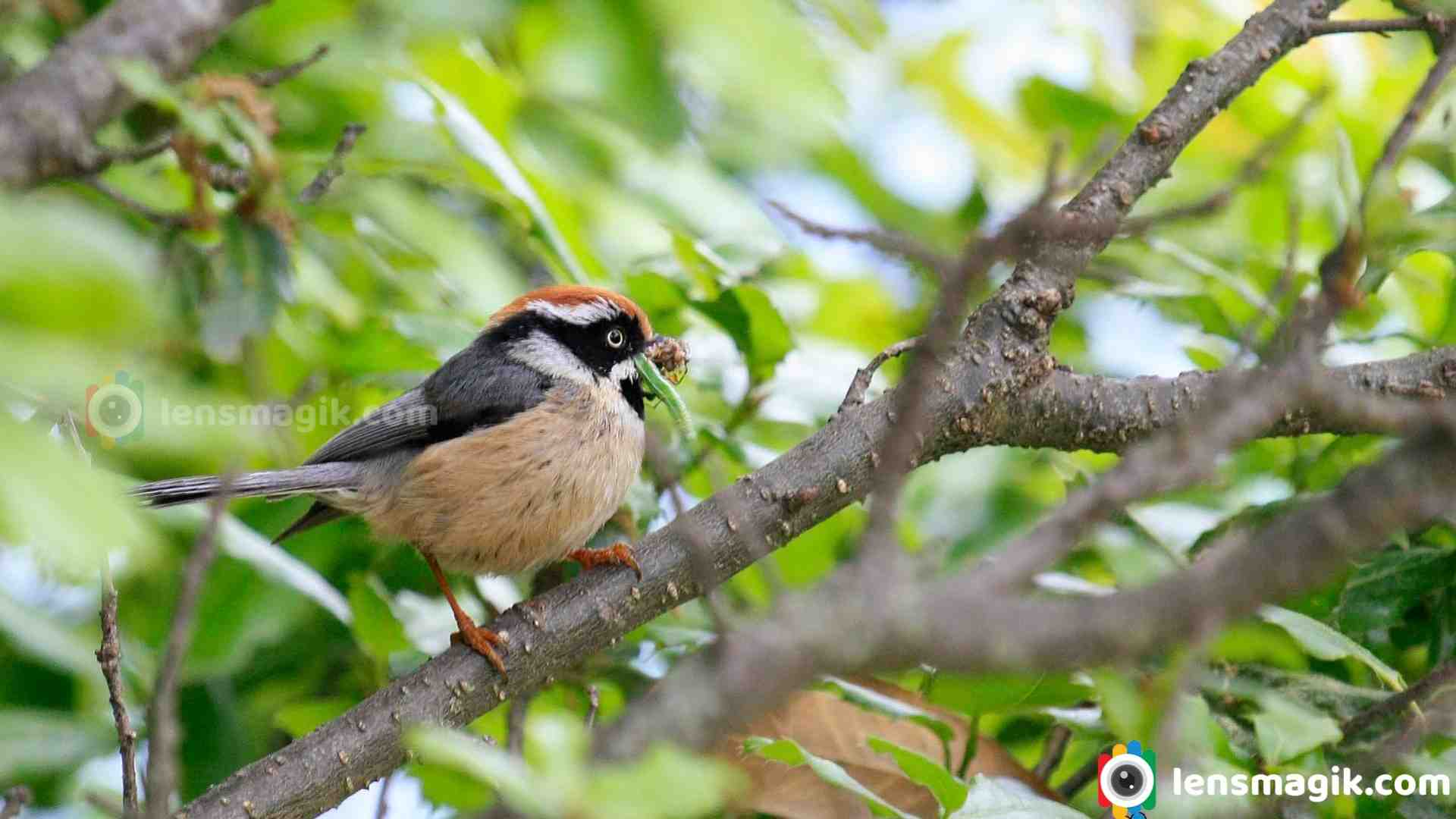
Himalayas are one of the best place for birding. There are many places where you can find different types of birds. In manali trek to the Chandrakhani pass i found more than 35 spices of different birds. Also trek to Har Ki Dun in Uttarakhand i also found more than 25-30 spices of birds. Among them half of spices are common in both and easily available in the ways and bushes. Some spices you have to wait and watch for clicking photos. Sometimes you may lucky to get have clear and sharp photos of the birds. Because in Himalayas there is a dense forest and birds can easily hide in the bushes.
Gear Used : Canon 6D, Canon 80D , Canon 100-400mm lens
Read more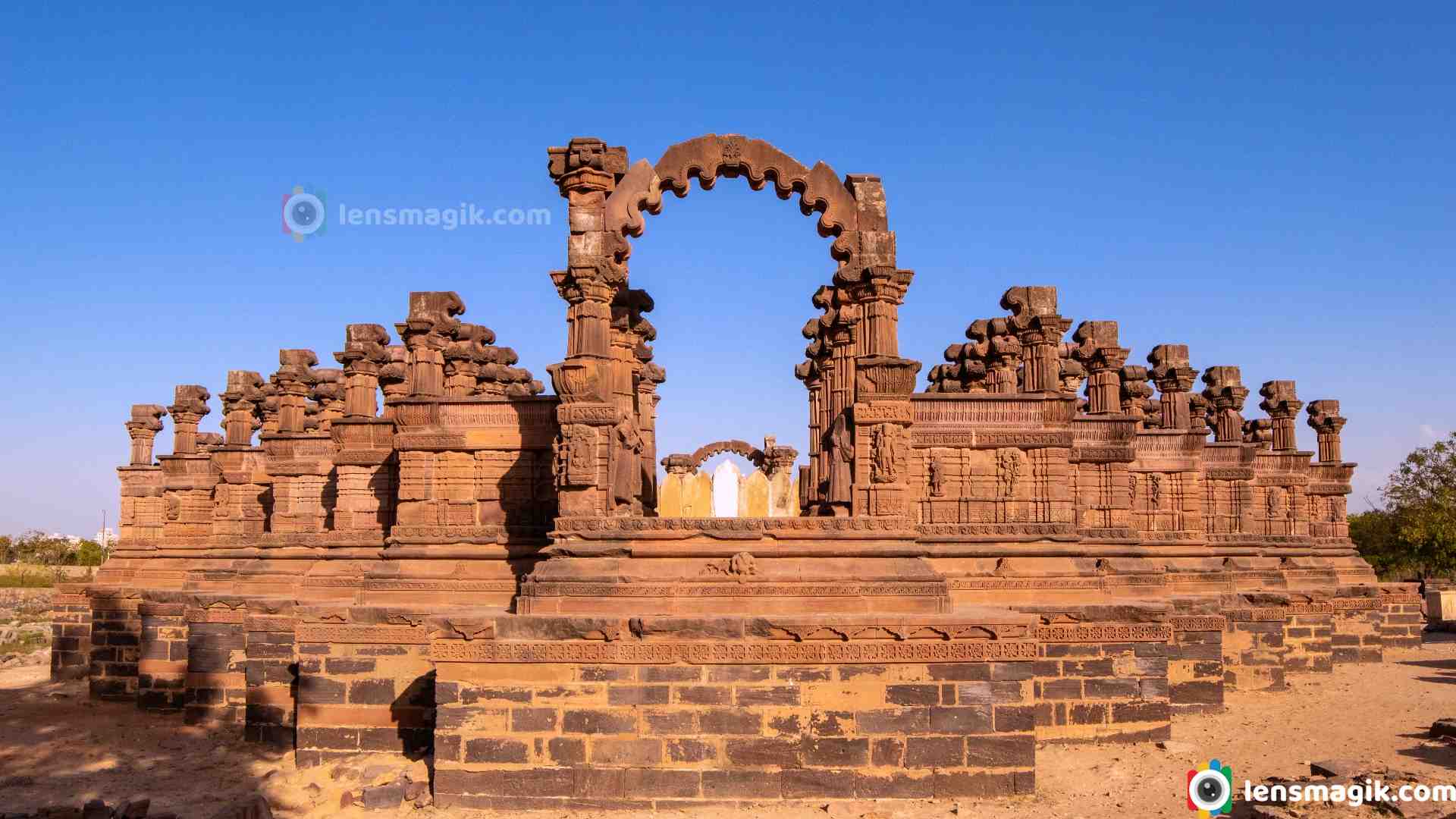
Chhatardi Bhuj is also known as Royal Chhatris or Cenotaphs. Chhatardi is a collection of monuments dedicated to deceased rulers of the Jadeja Rajput Dynasty of Kutch. Chhatardi is located in Bhuj near Hamirsar lake. At Chhatardi many monuments are broken and ruined due to earthquake . But Raydhanji , Desarji and Lakhpatji monuments are still quit intact. The place is very quite and most people may not visit Chhatardi during Kutch Tour. There is a lot of open area around Chhatardi so place is quite silent and peacefull during morning and evening. I suggest visit Chhatardi during early morning or evening because at afternoon its too hot.
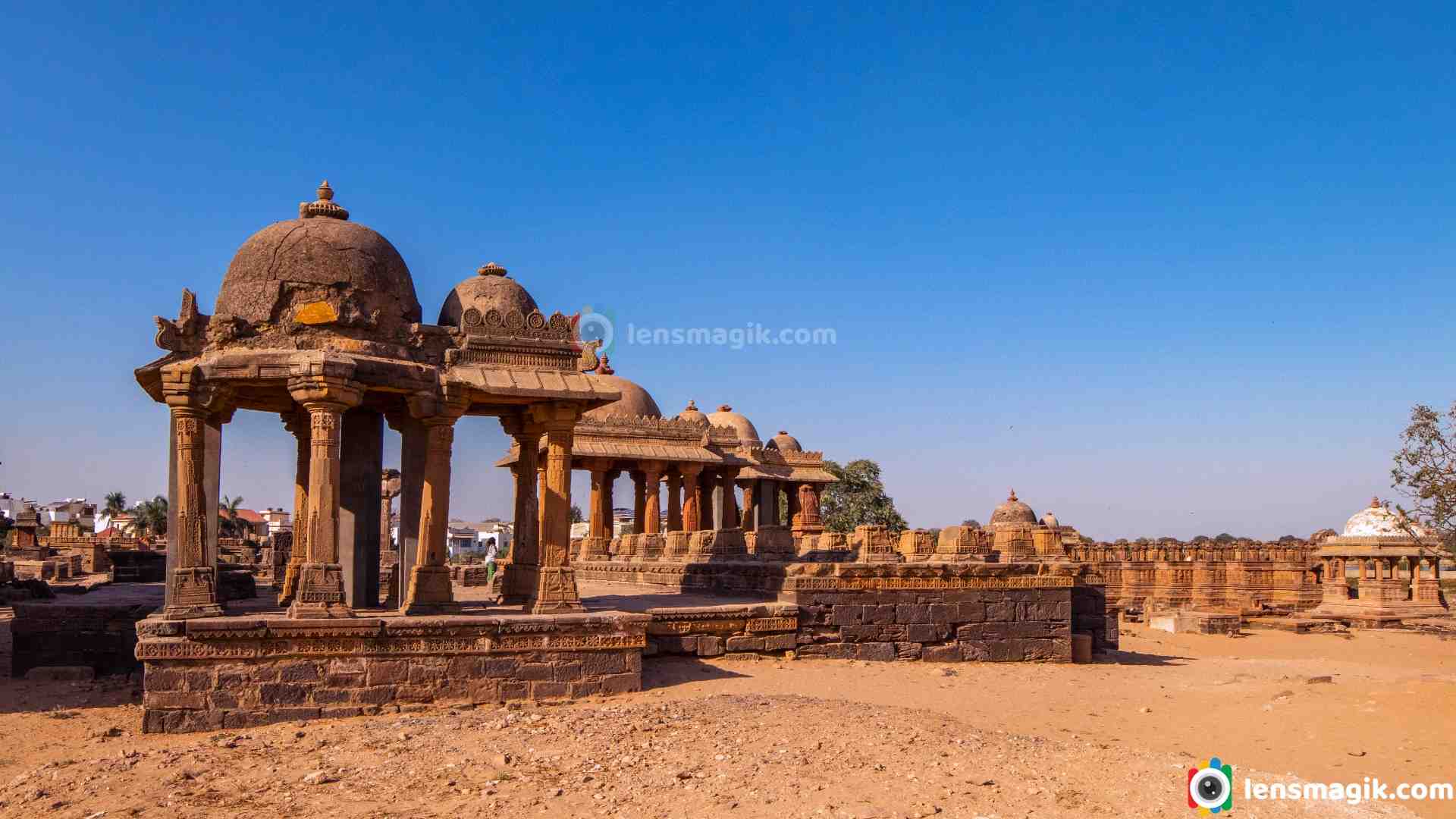
Facts and information about Chhatardi :
Architecture : The Cenotaphs of Chhatardi built by red sandstone. The most of the structure of Chhatardi is the Rao Lakha Chhatri and it was designed by Ram Sing Malam. It has a polygonal shape with balcony. It has blue dome which is influenced by Turkish Architecture. It has two galleries with two entrances.
History : Chhatardi was constructed in 18th century by Jadeja ruler Rao Lakhpatji. Chhatardis are blend of Rajputana and Mughal architectural style. It was carved out of red Sandstone. The Rao Lakha Chhatri are designed by Ram sing Malam. A stone Slab near Rao Lakha Chhatri suggest that his 15 wives committed Sati ( Self immolation ) on his funeral. There are lots of figures and images on the pillar.
Current Condition of Chhatardi : The Chhatardi was damaged in 2001 earthquake in Gujarat. The restoration process is ongoing now. Many pillars and structures are damaged and fall down.
Visiting Chhatardi is worth or not ? : Well Chhatardi is a historical place so only who is interested in a historical places like it. The place where Chhatardi located is very peaceful and quite. I like place because i like to know about history and old ruler king activities. I like most of old architecture , constructions, designs, sandstone design, carving and domes are main attractions. So answer is Yes it is worth to visit Chhatardi during sunrise or sunset timings.
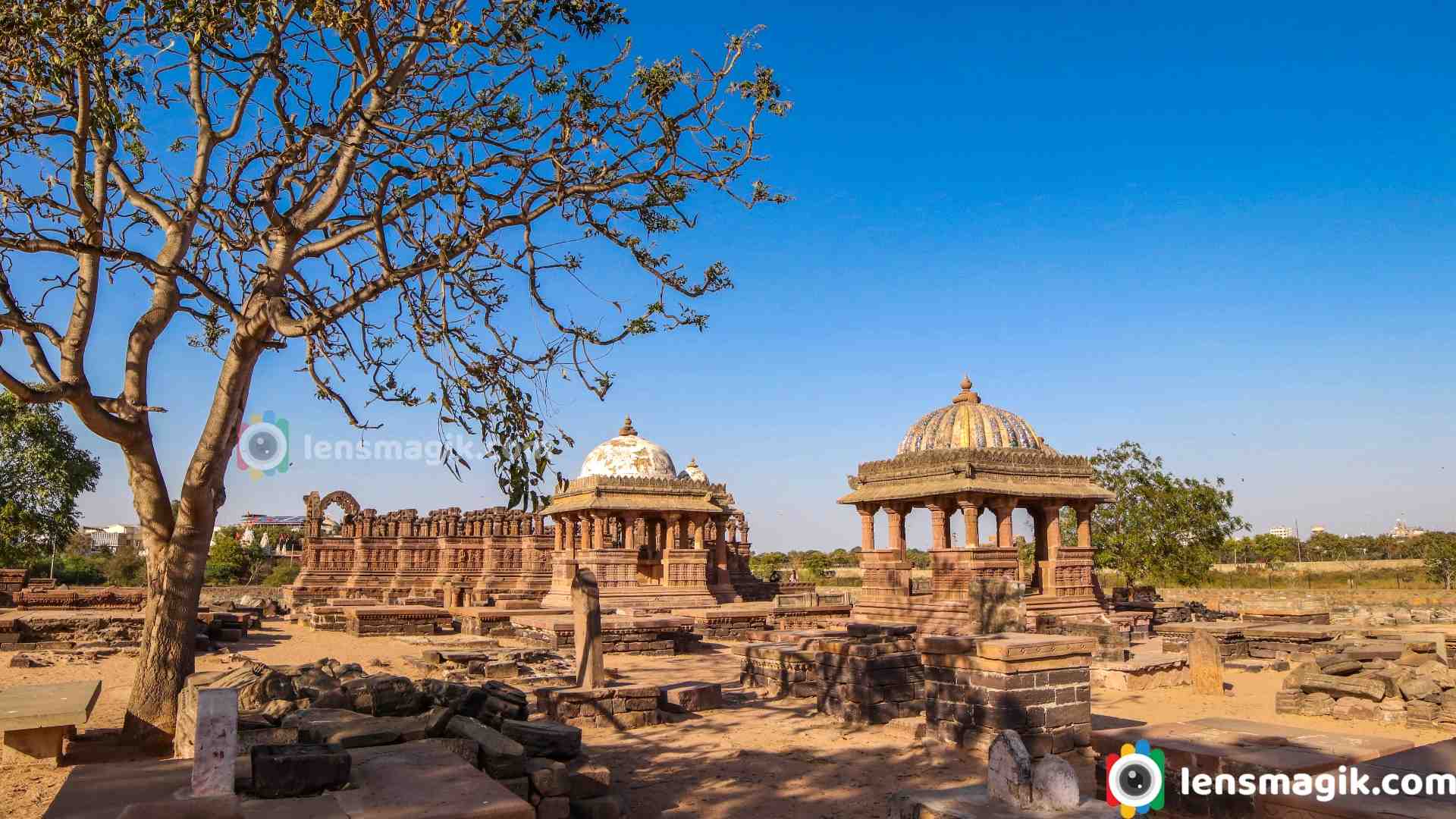
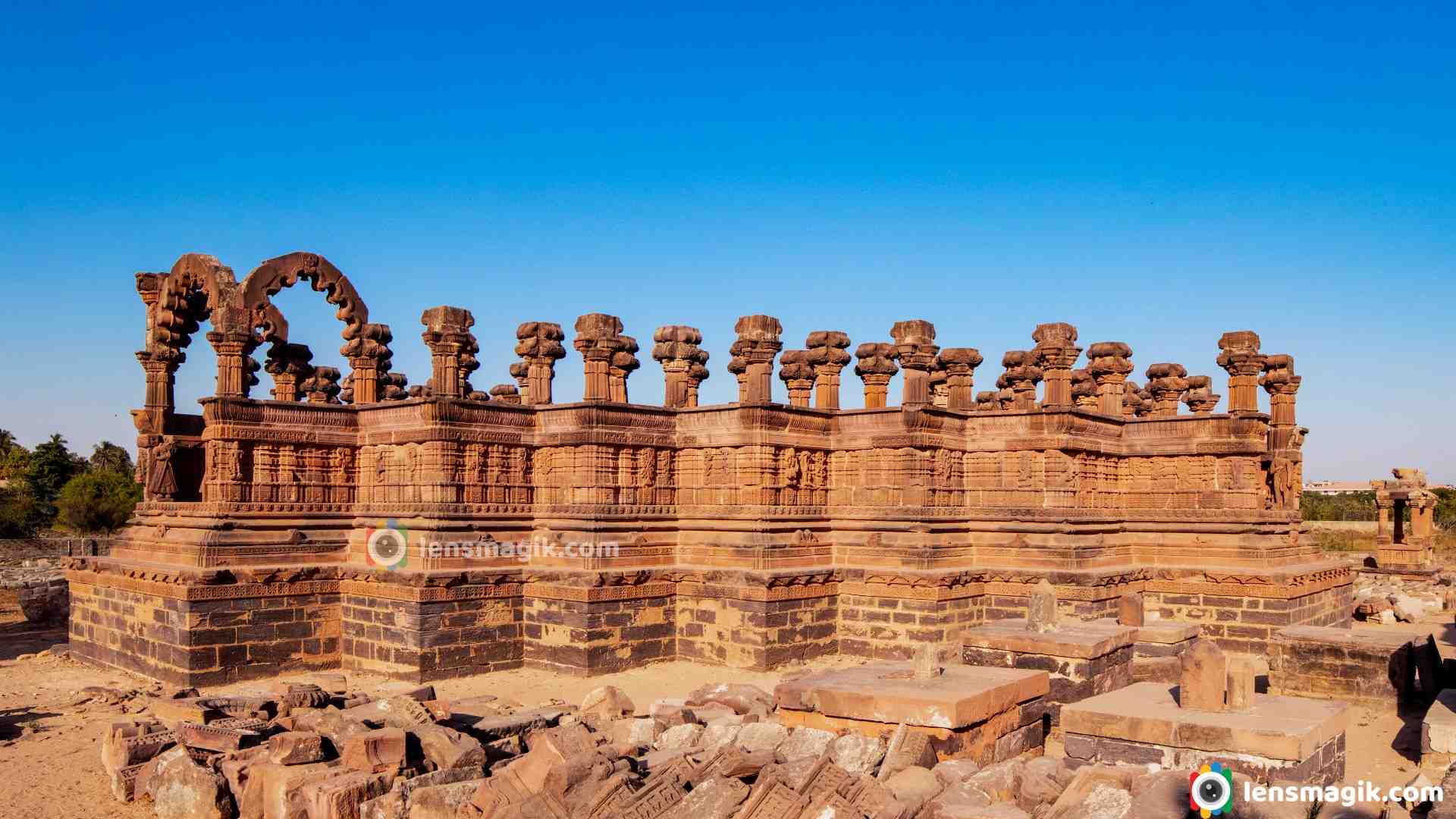
Chhatardi Timing to Visit : Chhatardi is open from sunrise to sunset full day. There is no entry ticket for Chhatardi visit. There are not much restriction and also there is no guide facilities. The caretakers can guide you about the Chhatardi and also tell the history about it. My suggestion is to make some restriction around the main buildings and pillars so people can care about our historical place.
Best Time To Visit Chhatardi : Best time to visit Chhatardi is early morning and at evening. During sunrise and sunset the beauty of Chhatardi is at another level. You can take some photos with sunrise or sunset with old architecture pillars make your image beautiful. Also tourist visit Bhuj and Kutch in the winter during November to February so plan your trip with inclusion of Chhatardi.
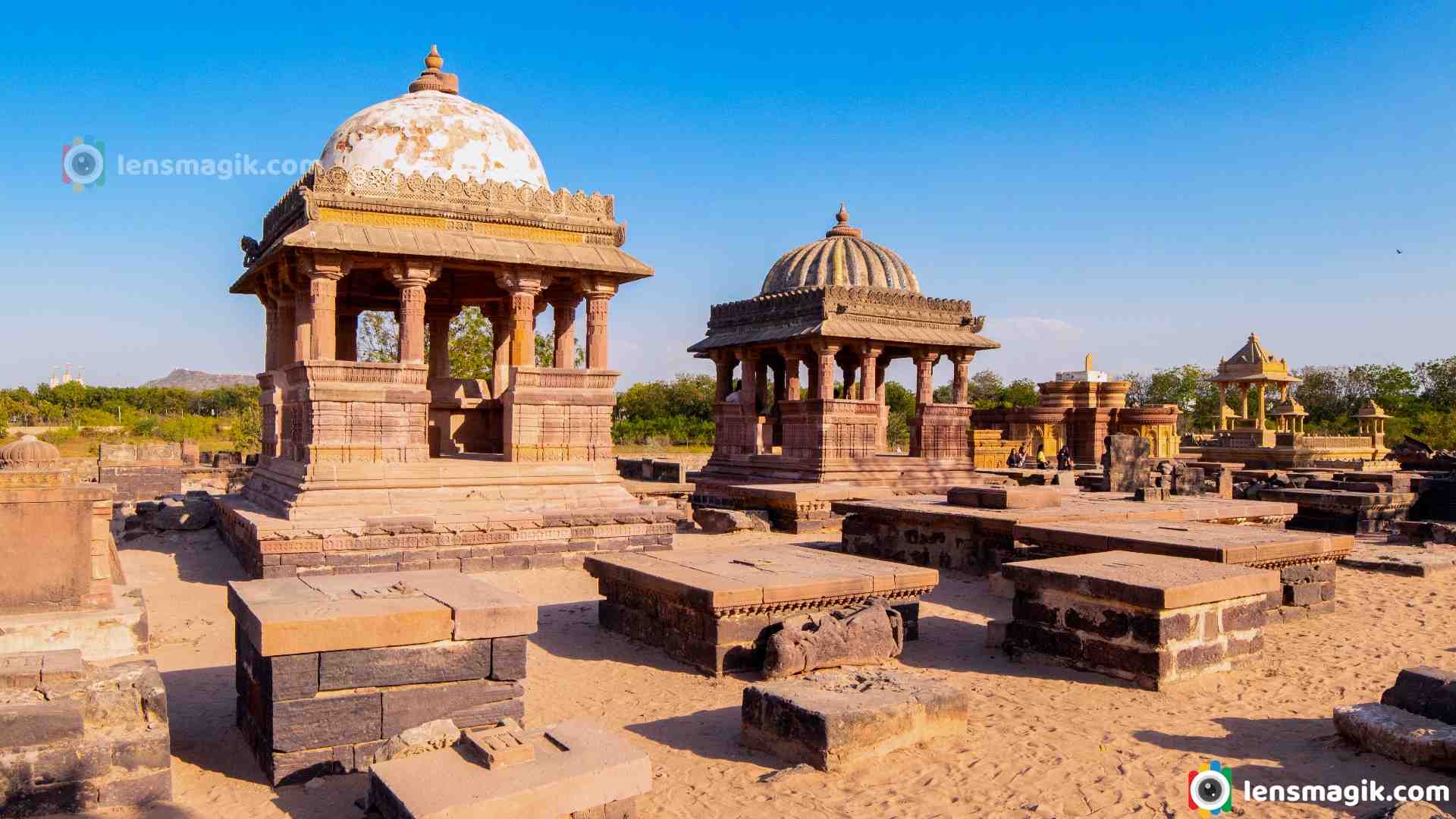
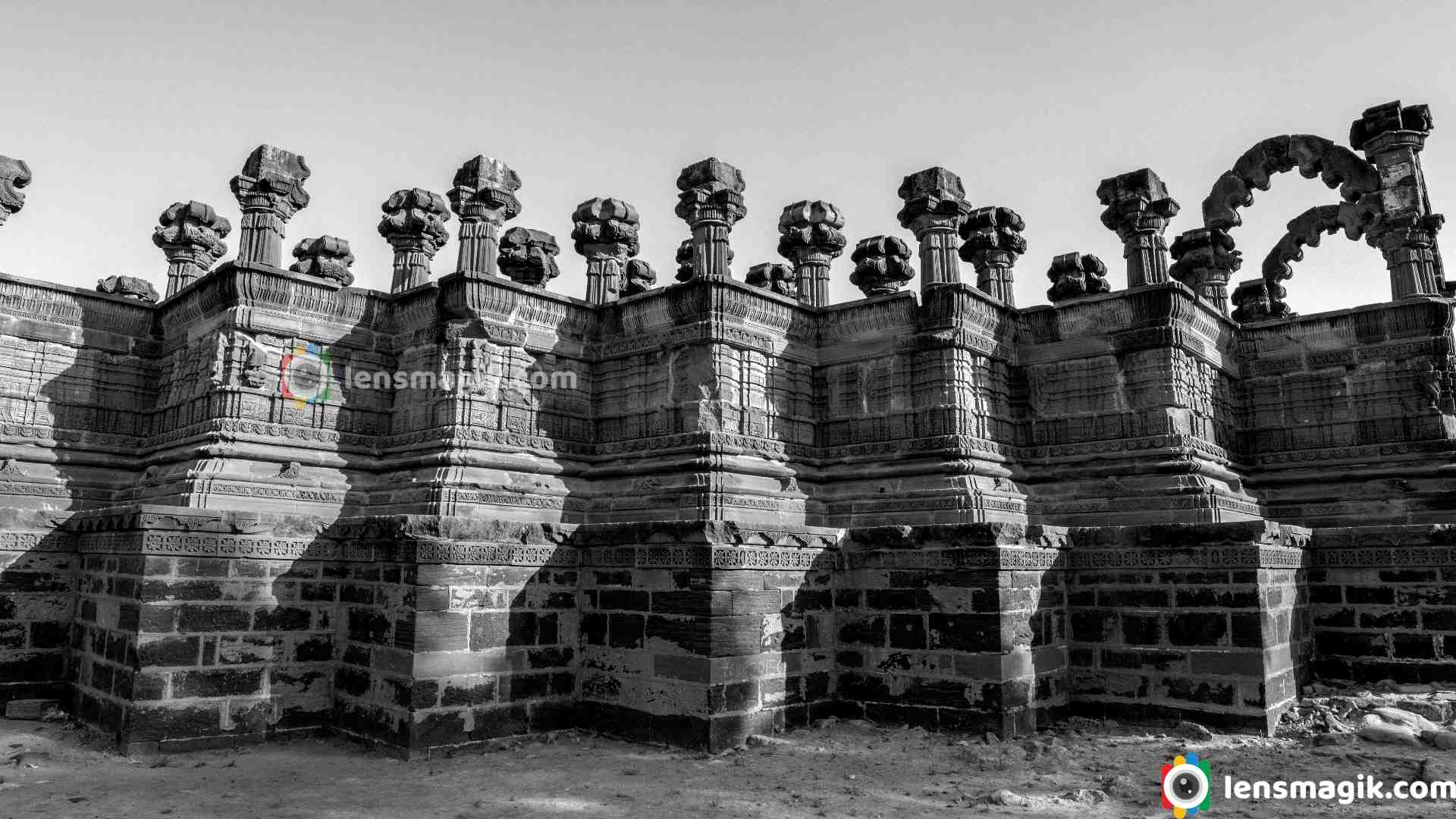
Location : Chhatardi is located at southwest Hamirsar lake. It is around 4-5 km from Bhuj Railway station. Also near to Bhuj Airport around 5 km. If you travel from International Airport then Ahmedabad airport is the nearest international Airport. From Ahmedabad it is 350 km approx. and take 7-8 hours drive by car. Also two daily express train frequency from Bhuj to Ahmedabad named Bhuj Express and Kutch Express
Nearest Places From Chhatardi Around 5-7 km radius : In Bhuj there are some good places to visit in day time like Prag Mahal, Aaina Mahal, Kutch Museum, Swaminarayan Temple, Bhujio Dungar , Vande mataram Memorial, Smritivan Earthquake museum, Harmirsar Lake etc
Nearest Places from Bhuj : White Desert, Rann of Kutch, Road To Heaven, Dholavira, Kadiya Dhro, Mandvi beach, Vijay Vilas Palace etc. are the major attraction of Kutch and Bhuj.
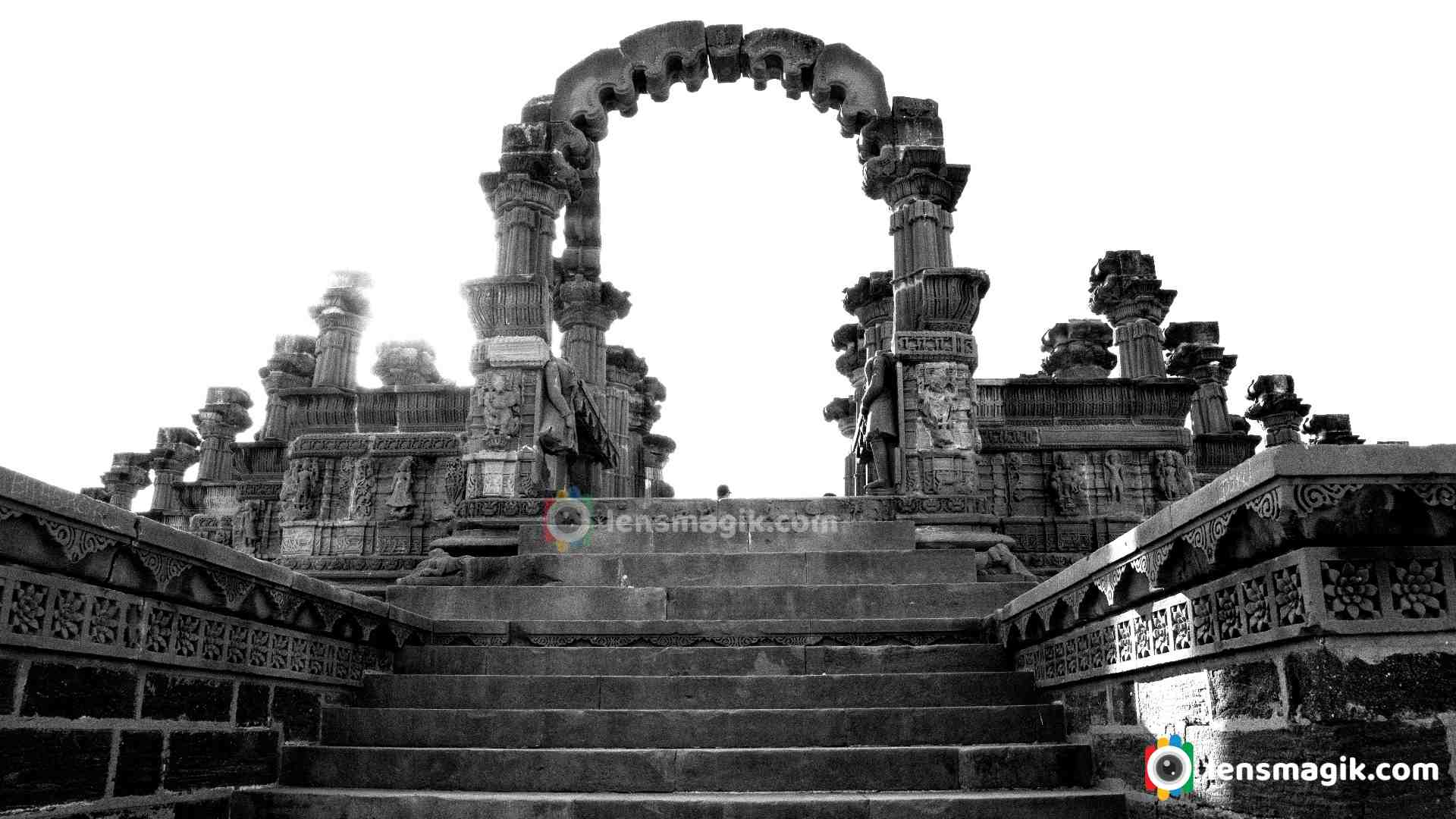

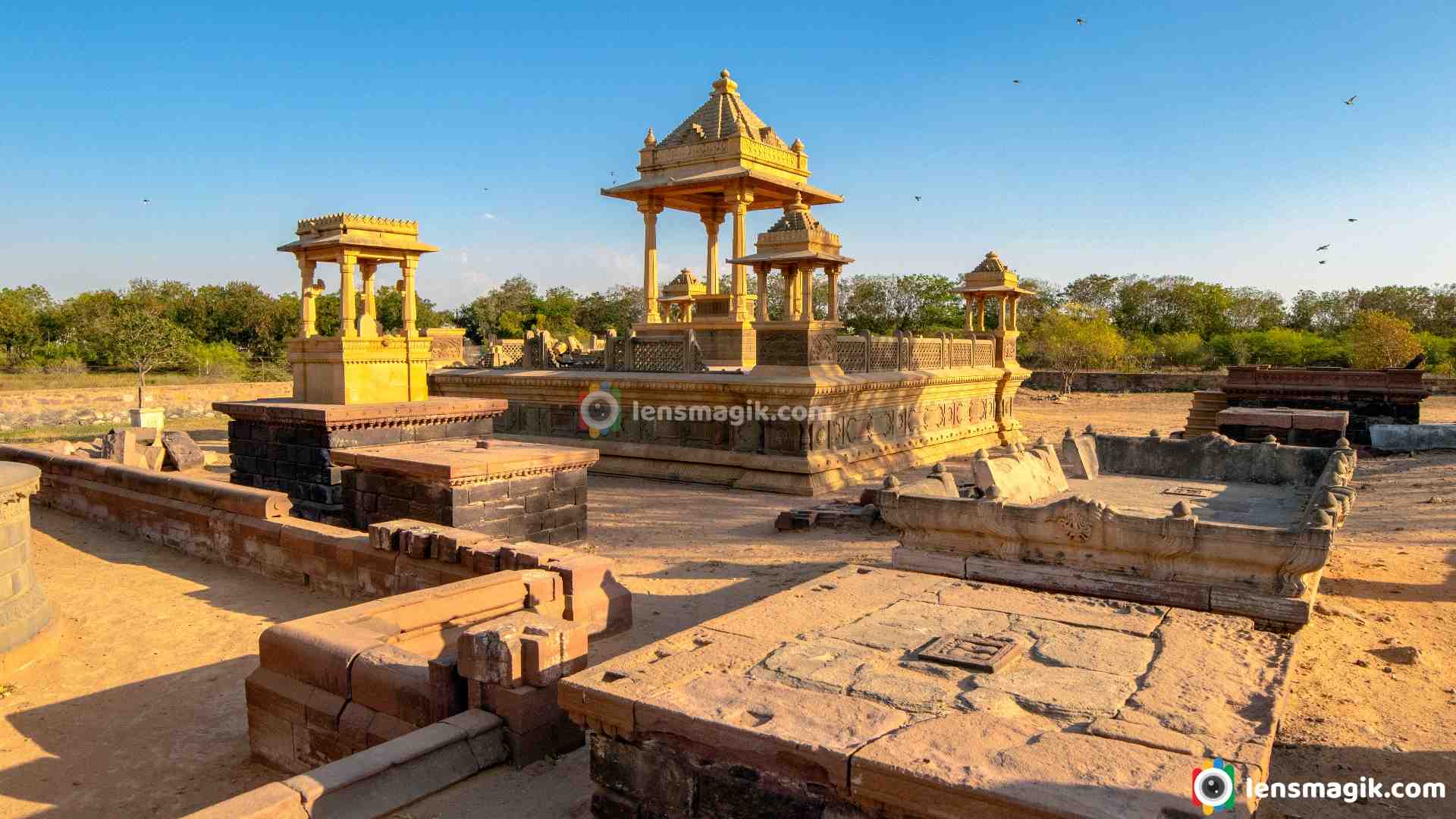
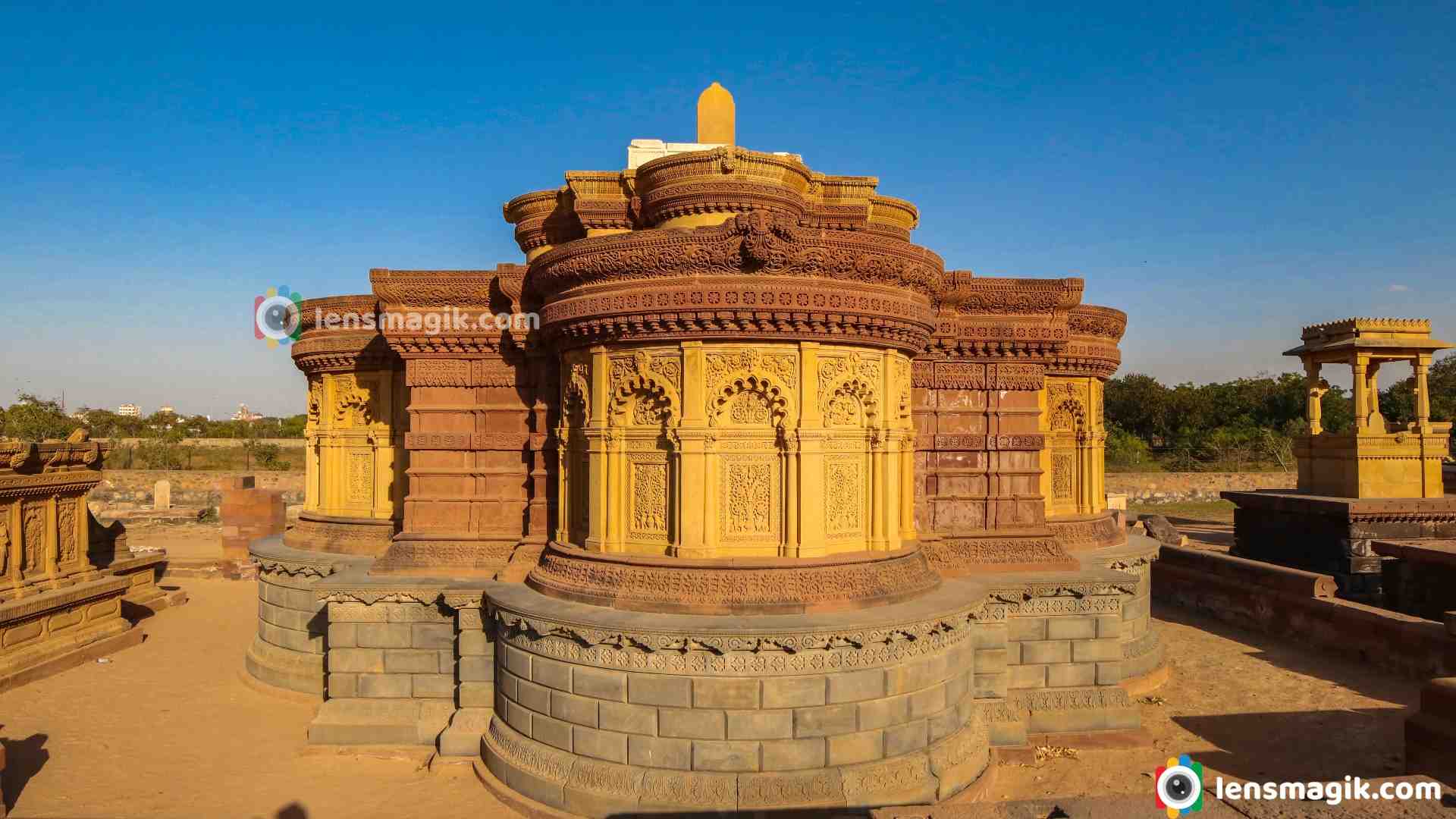
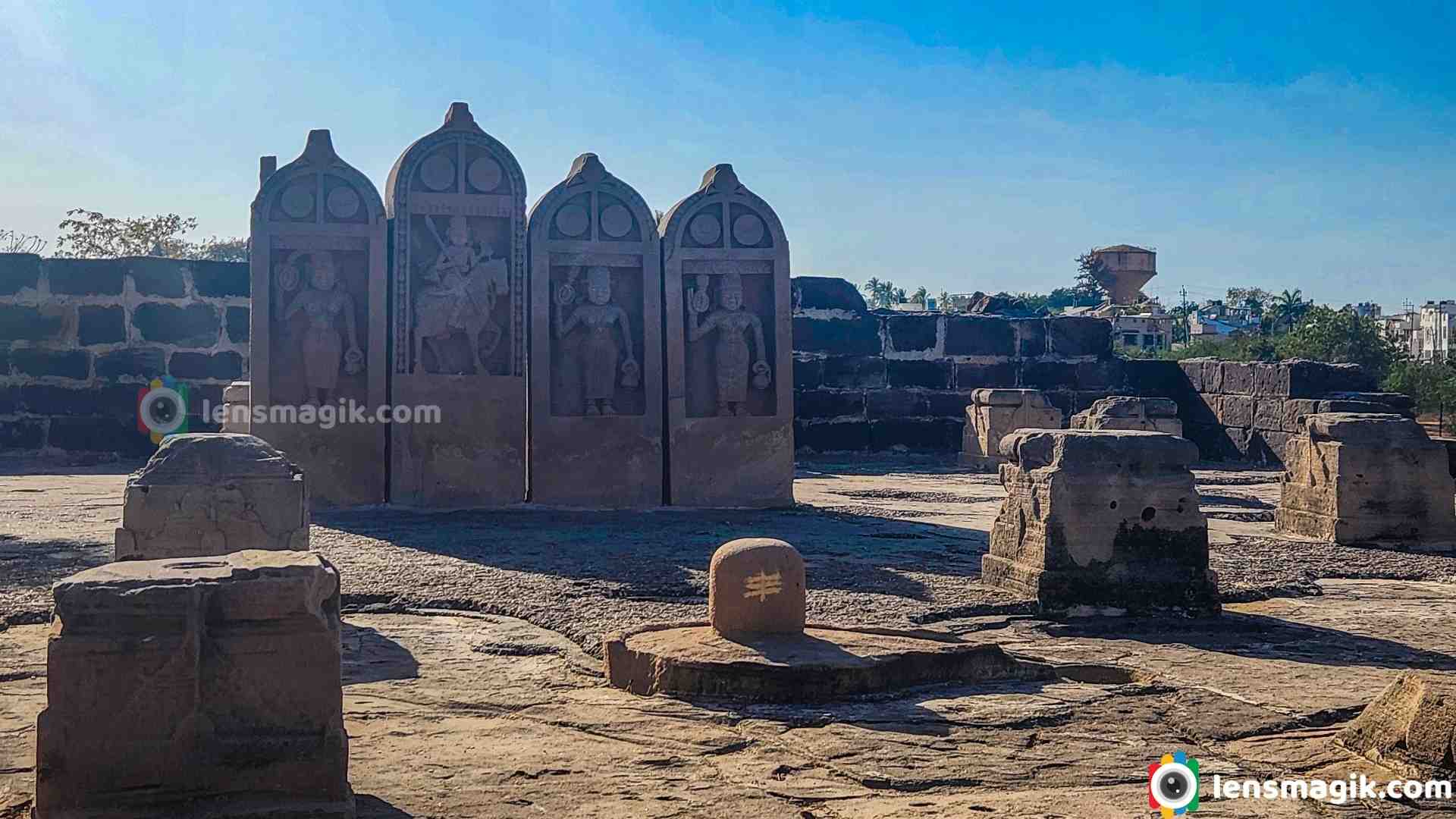
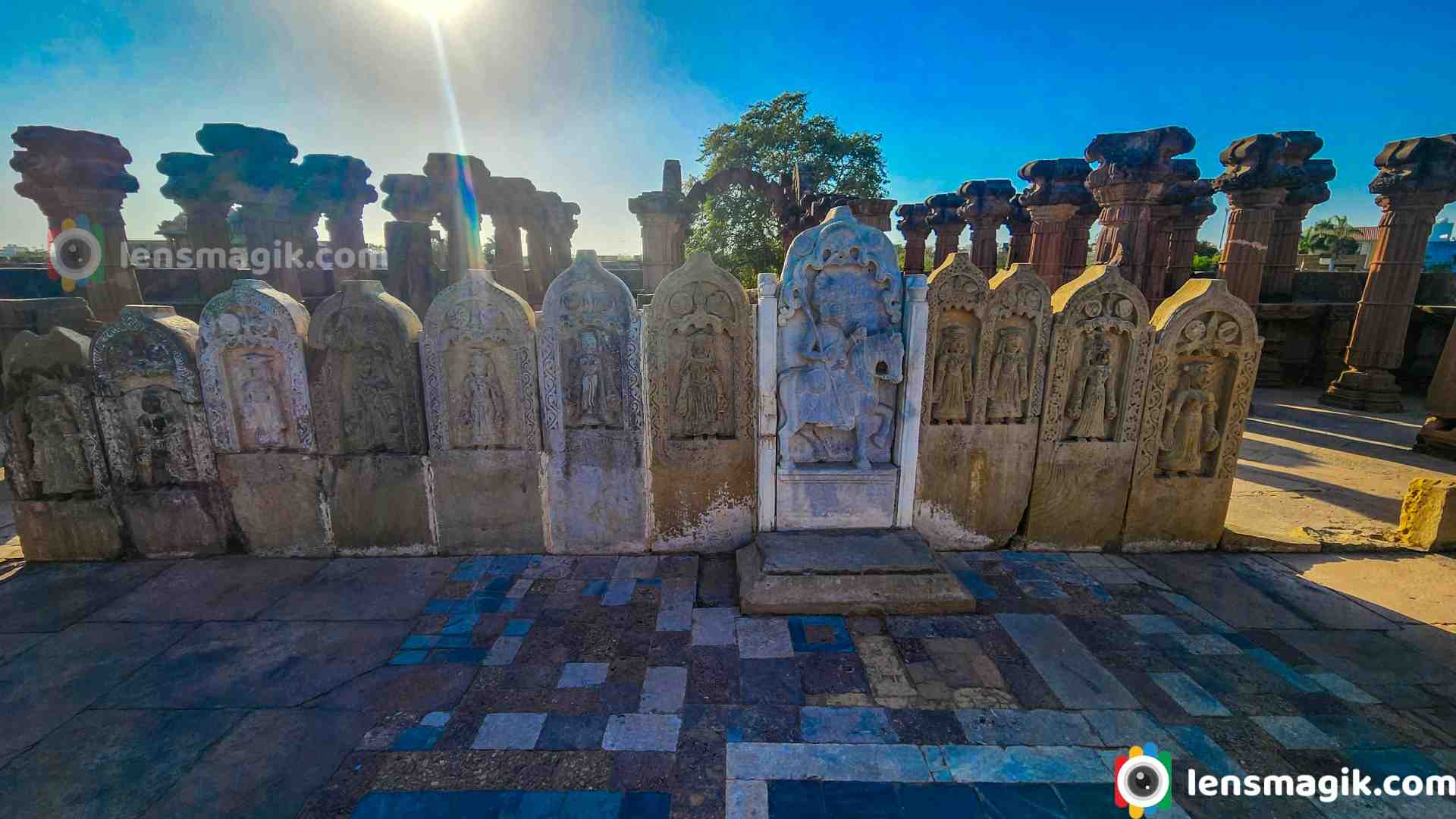
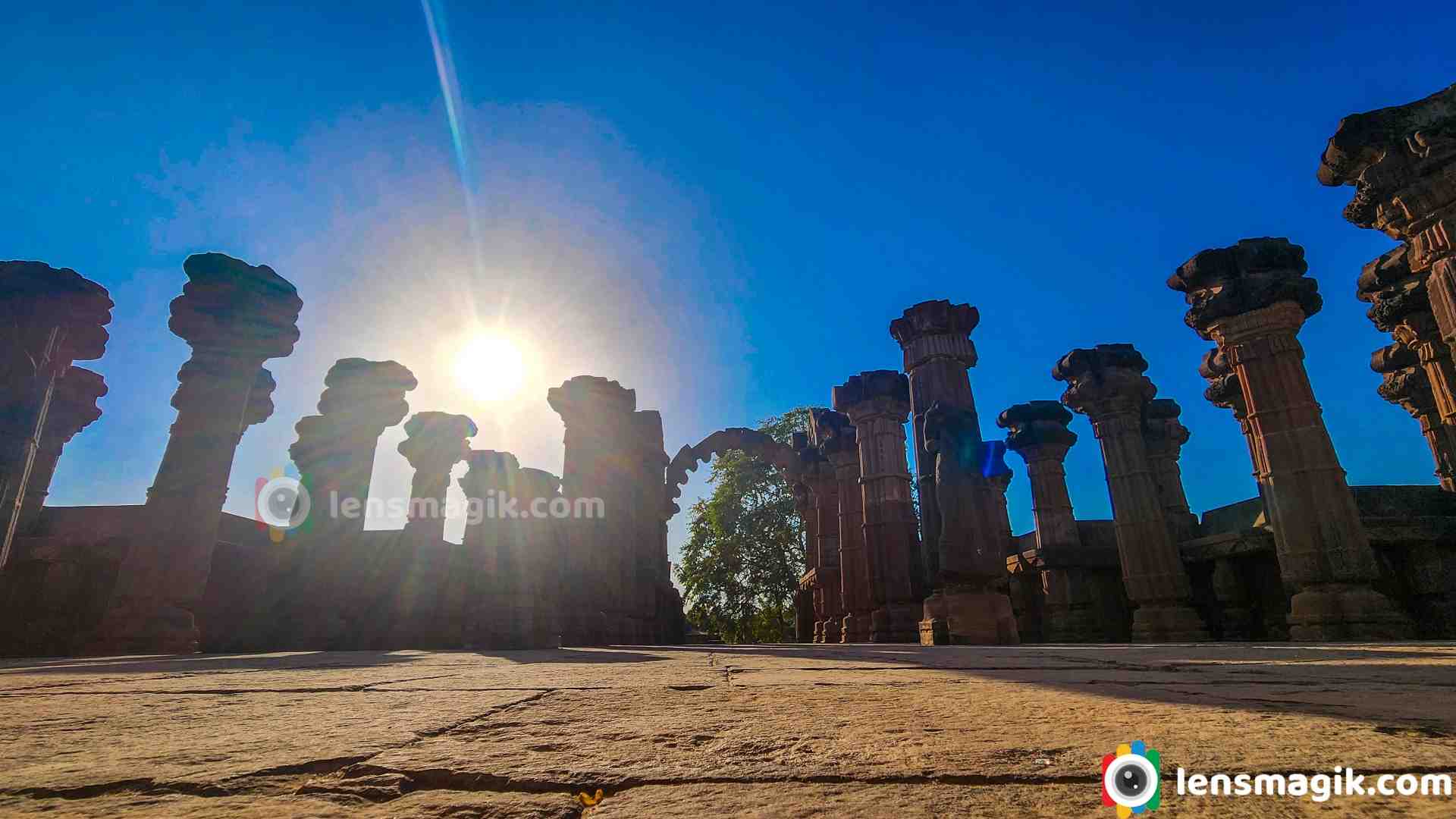
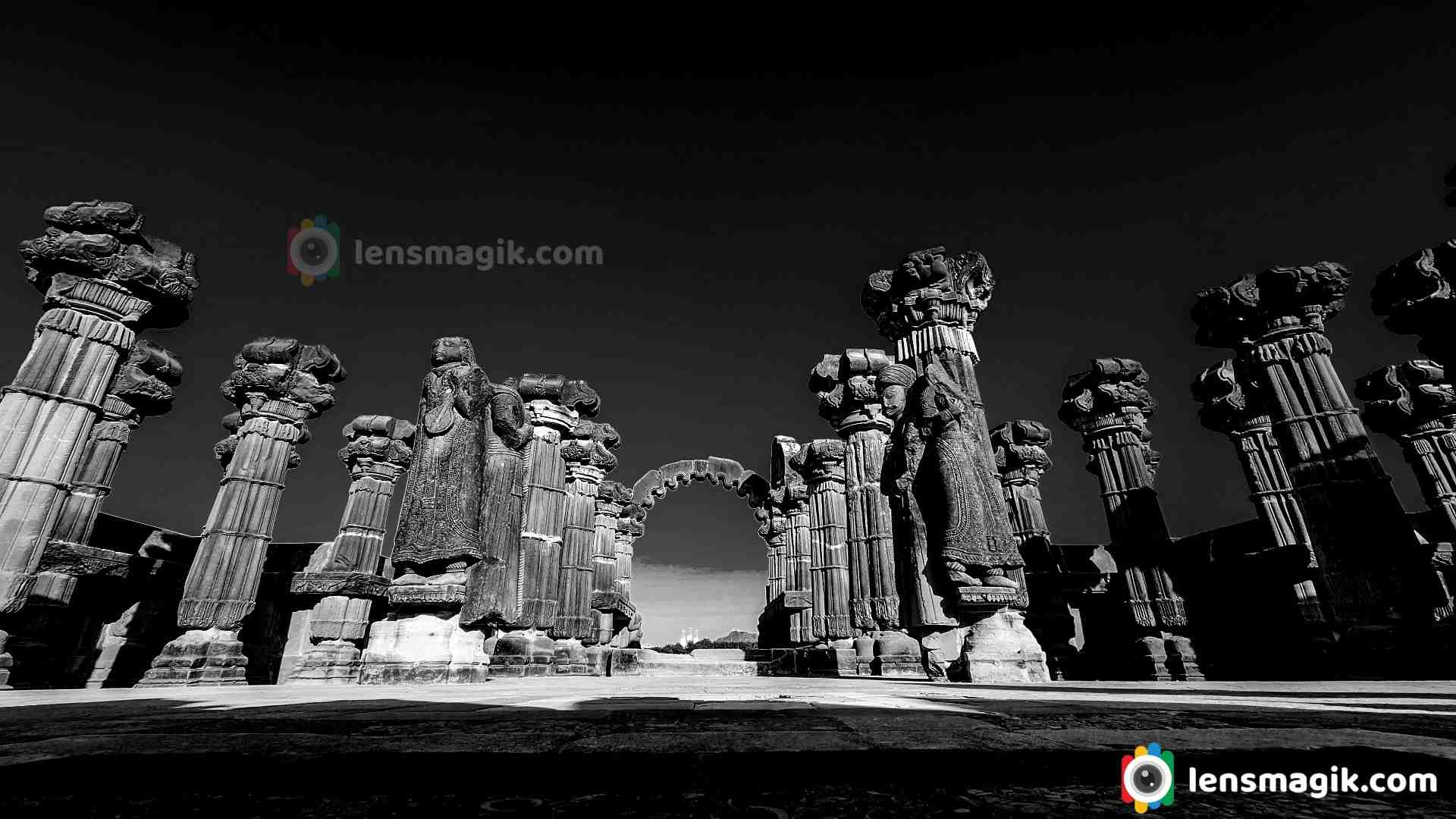
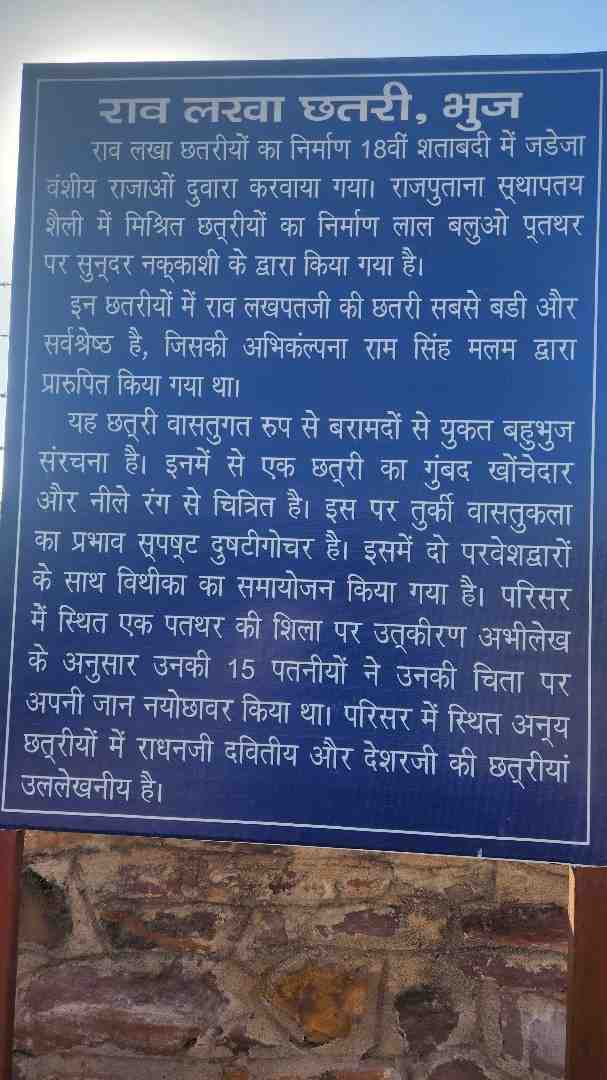
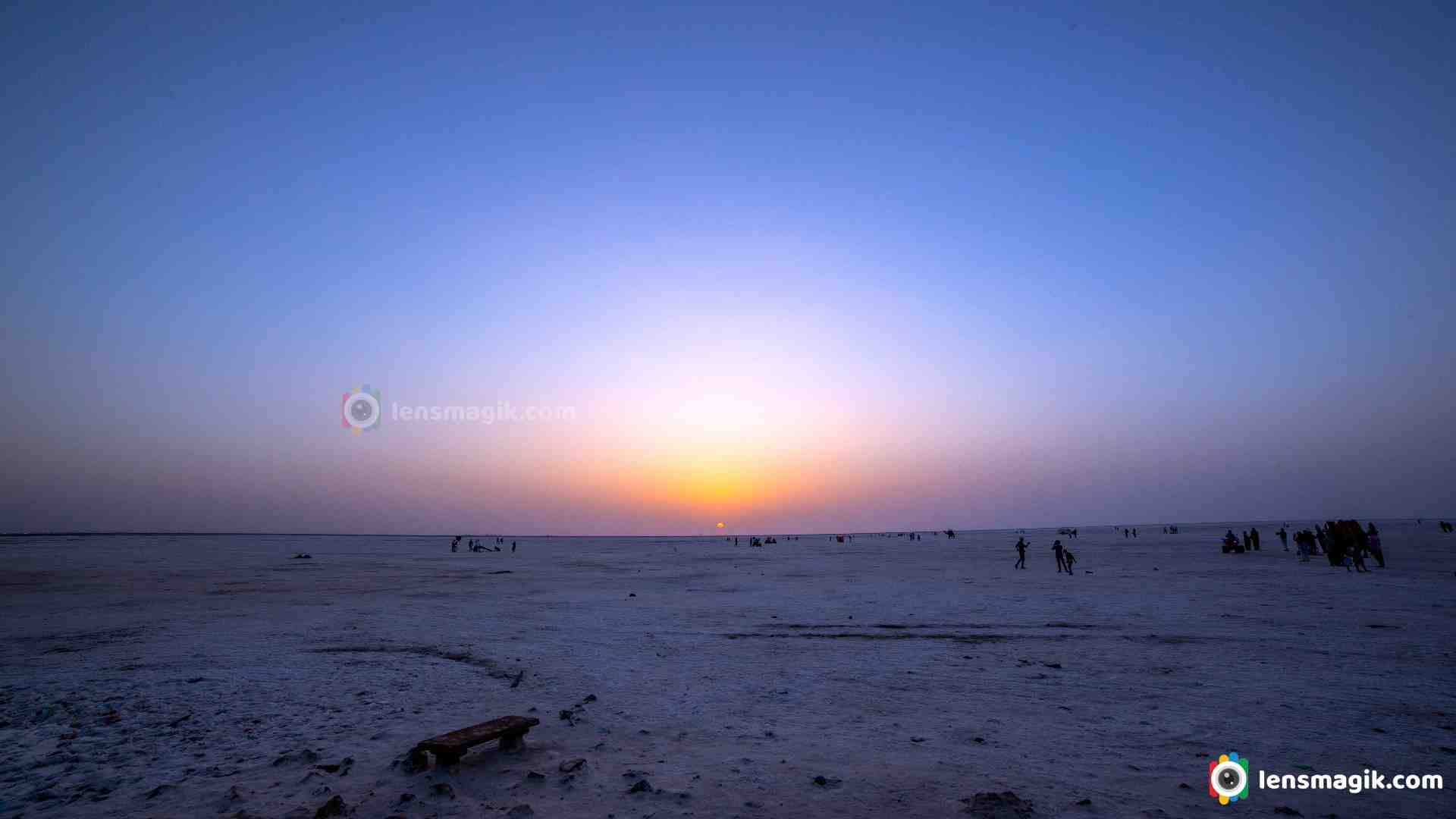
The White Desert of Kutch is also known as Great Rann of Kutch. It is a natural wonder that transforms into vast expanse of glistening white during dry season or winter season. Great Rann of Kutch is located in Gujarat near Dhordo in Kutch District. Kutch is the largest salt production area in India. Also a largest evaporation rate per year in India. In Monsoon the Arabian Sea flood rann with sea water. Area is full of water during monsoon season so you can only visit during winter season from December to February.
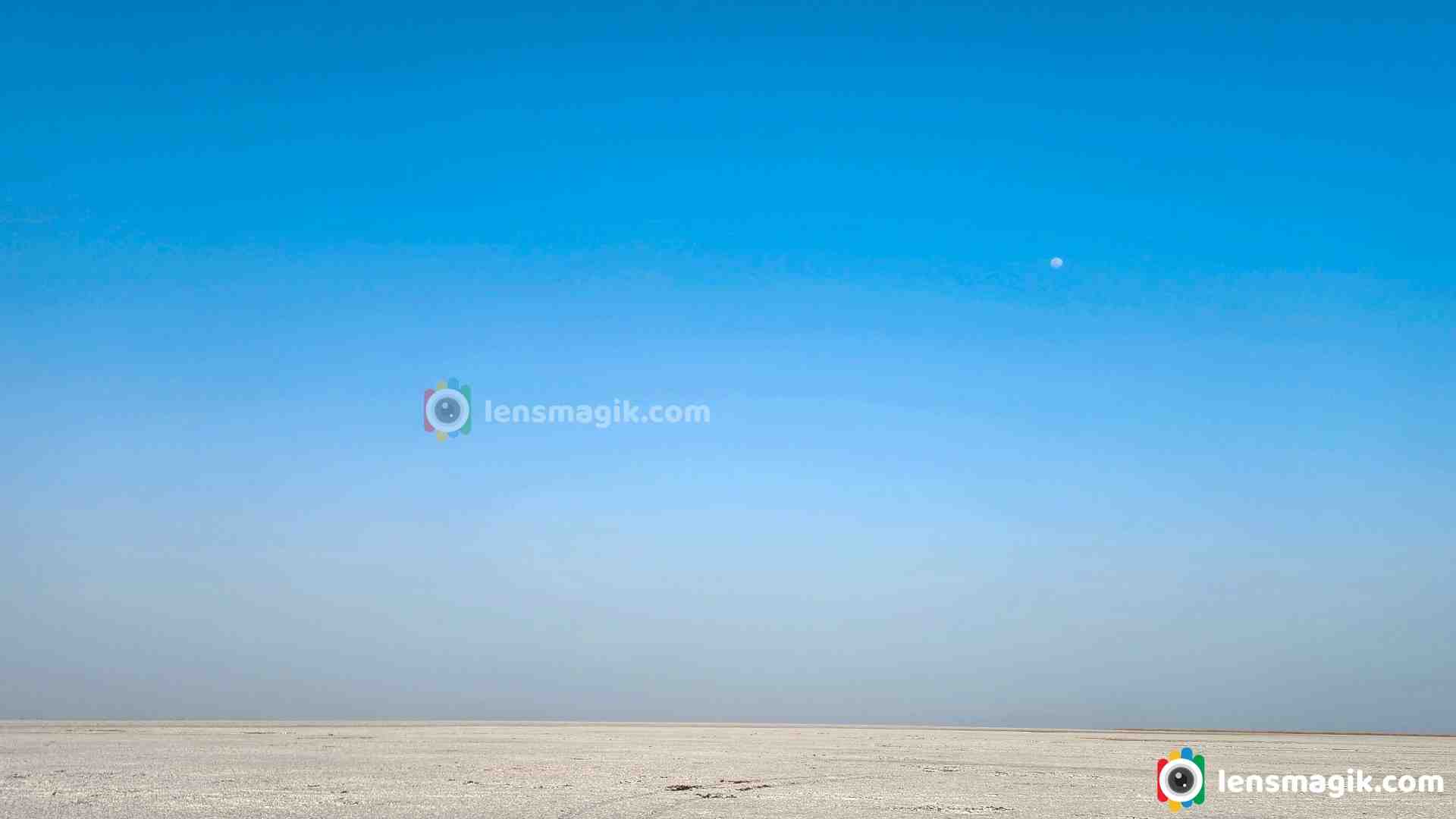
About White Desert Of Kutch :
Vibrant Life : White desert of kutch becomes alive with diverse ecosystem, migratory birds, flora and wild Ass.
Infinite White landscape : The most amazing features is infinite expanse of pure white salt. The layer of white salt create magnificent contrast against amazing blue sky .
Cultural Richness : At White Desert Of Kutch surrounded areas are rich cultural heritage , with colorful tribes, crafts and cuisine.
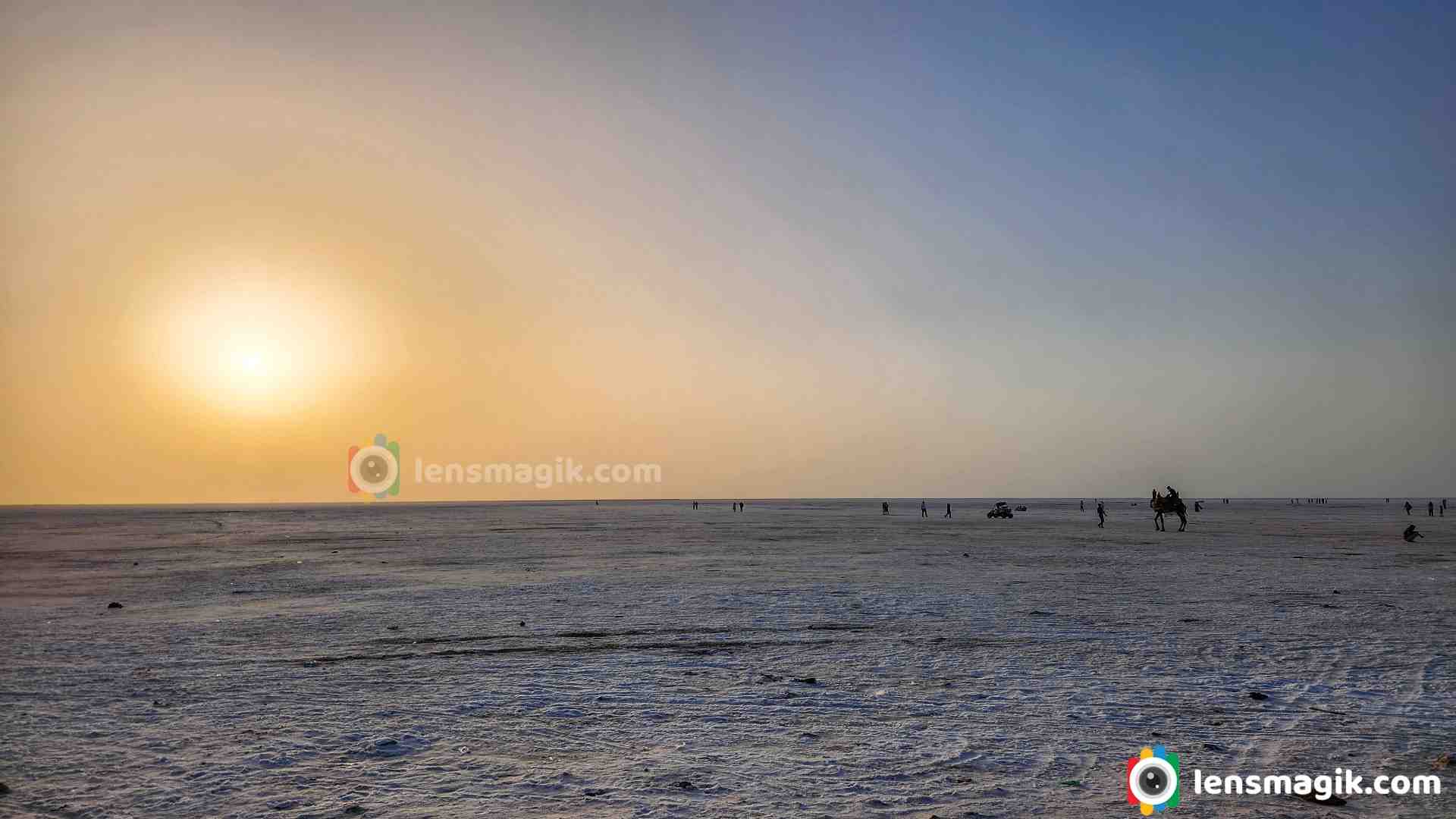
Things To Do at White Desert of Kutch :
- You can get a Camel safari or jeep safari for exploring a white desert and enjoy the beauty of it.
- Suggest you to see Sunrise or Sunset of Rann. At sunset or sunrise time you can see magical glow over salt flats. So sunrise and sunset are stunning experience at Rann of Kutch.
- Immerse yourself in the culture of Kutch. You can visit local villages, attending traditional dance and also you can enjoy local food.
- You can also see wildlife in Rann of Kutch. You can see Indian Wildass or Onager which is found only in Kutch in India. Also a migratory birds like Greater Flamingo, Pelican and many more raptors found here. The endangered spices like Great Indian Bustard also found here.
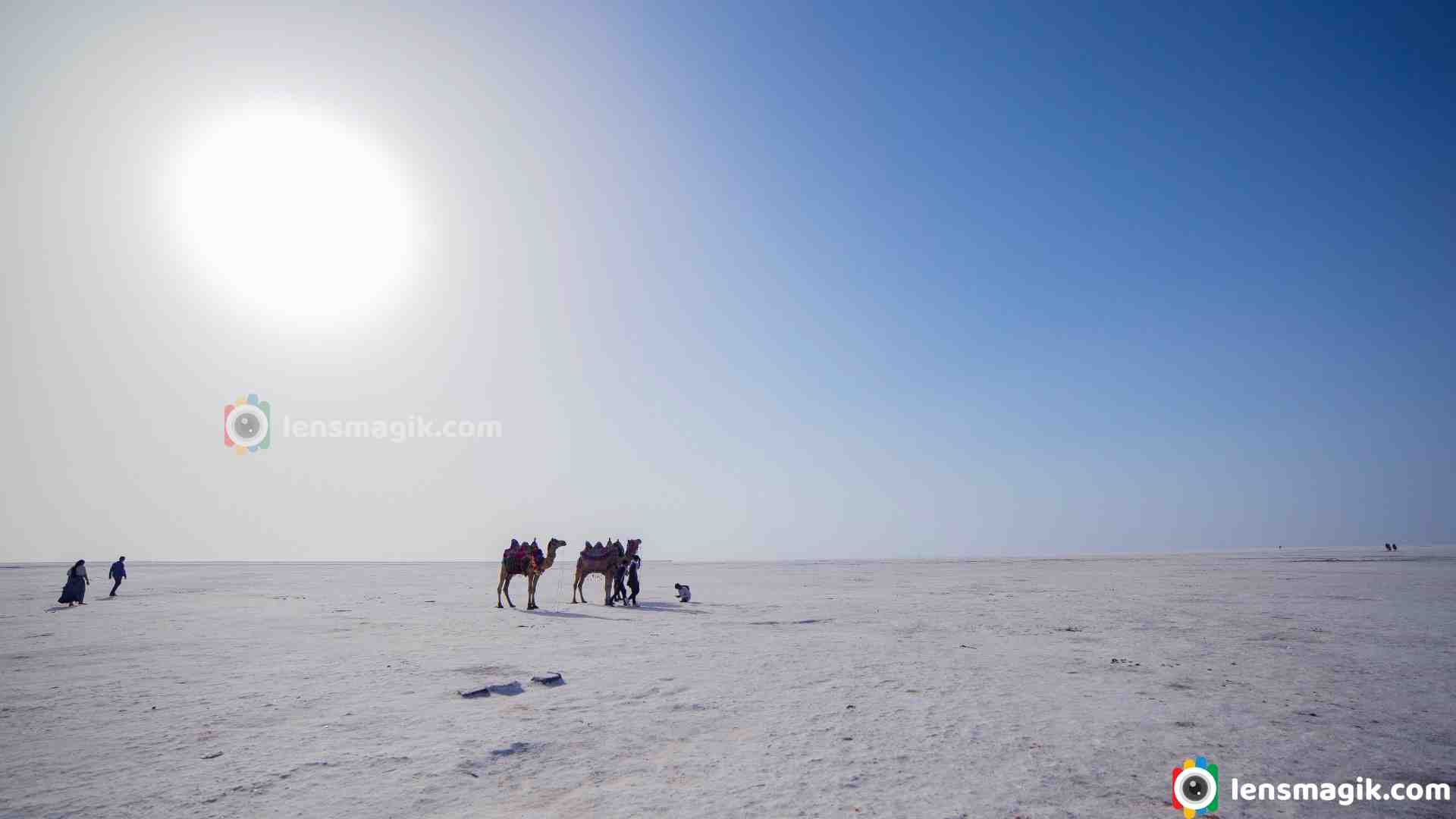
Best Time To Visit White Desert of Kutch :
The Best time for experience white desert of kutch is November to February during winter season. During winter salt march completely dry . Also during this period Rann Utsav managed by Gujarat Tourism. In Rann Utsav you can see colorful festival showcasing the region's culture and traditions. Also i suggest to plan in November or December because in February salt march are destroyed due to public foot fall and also a dirty too.
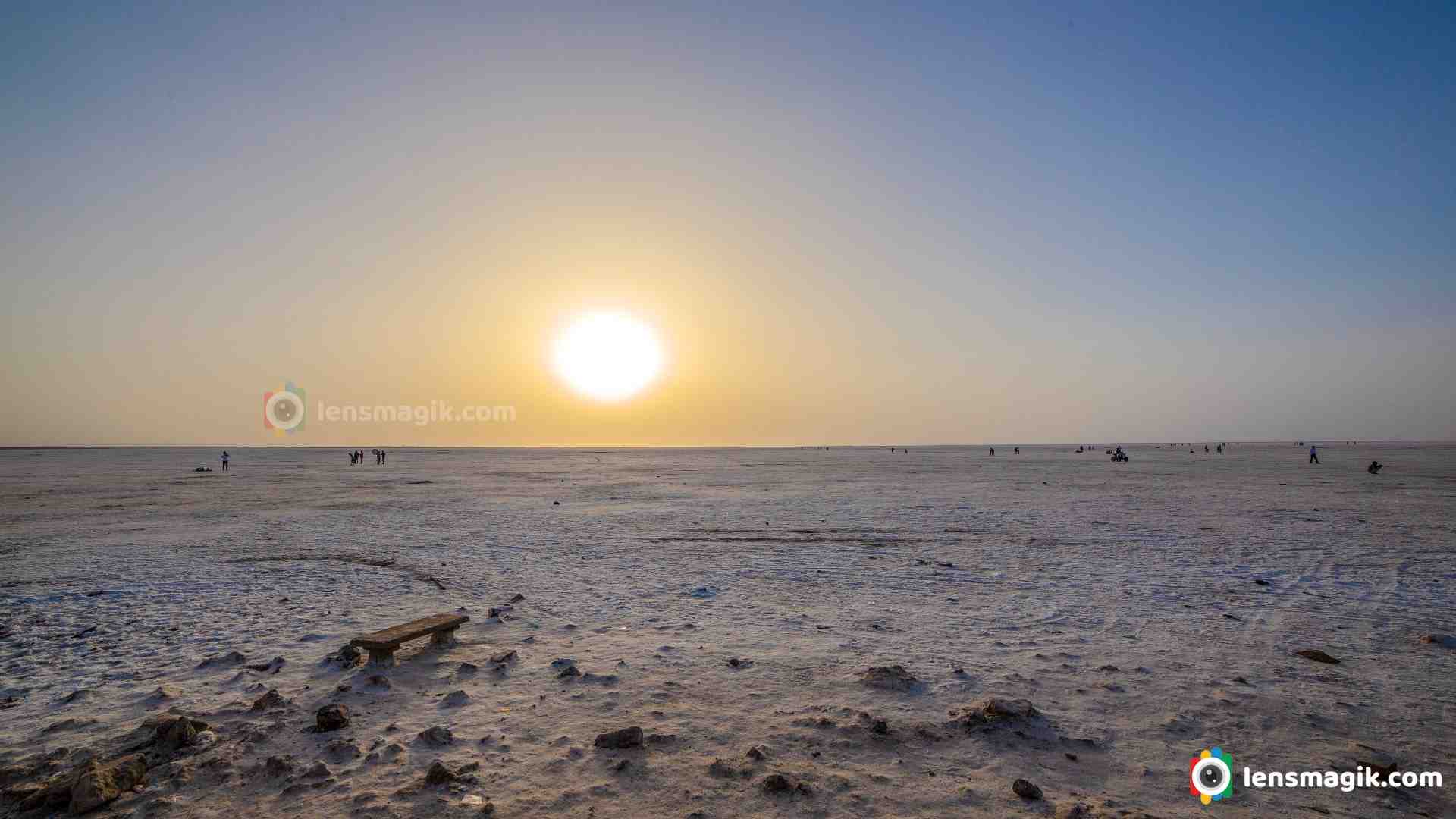
Some Tips while visit White Desert of Kutch :
- You can choose luxury Tent of Rann Utsav or also some affordable tents available near white desert.
- Comfortable cloths and lose fit cloths are suitable for desert.
- You can capture stunning landscape with vibrant colors during sunrise and sunset with white desert salt marsh. So bring good quality camera to capture stunning images of White Desert of Kutch.
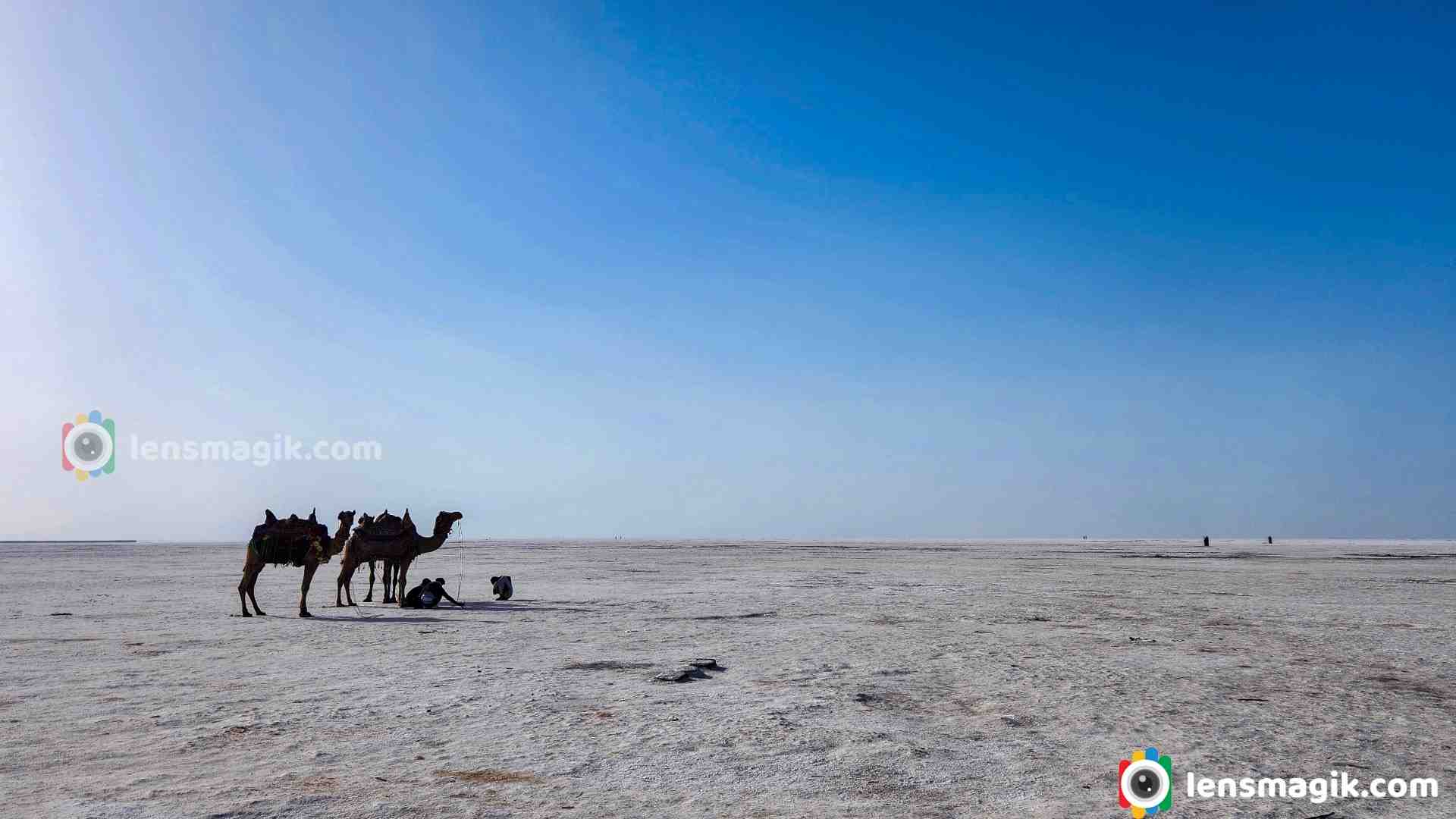
Best Experience of White Desert : On Full moon day you can experience the best of white desert of Kutch.
White Desert of kutch is truly unforgettable destination of Gujarat. It offers unique blend of natural beauty , cultural richness and also adventure and wildlife. So i must suggest whenever you plan to visit Gujarat you must visit Rann of Kutch during Rann Utsav in November to February.
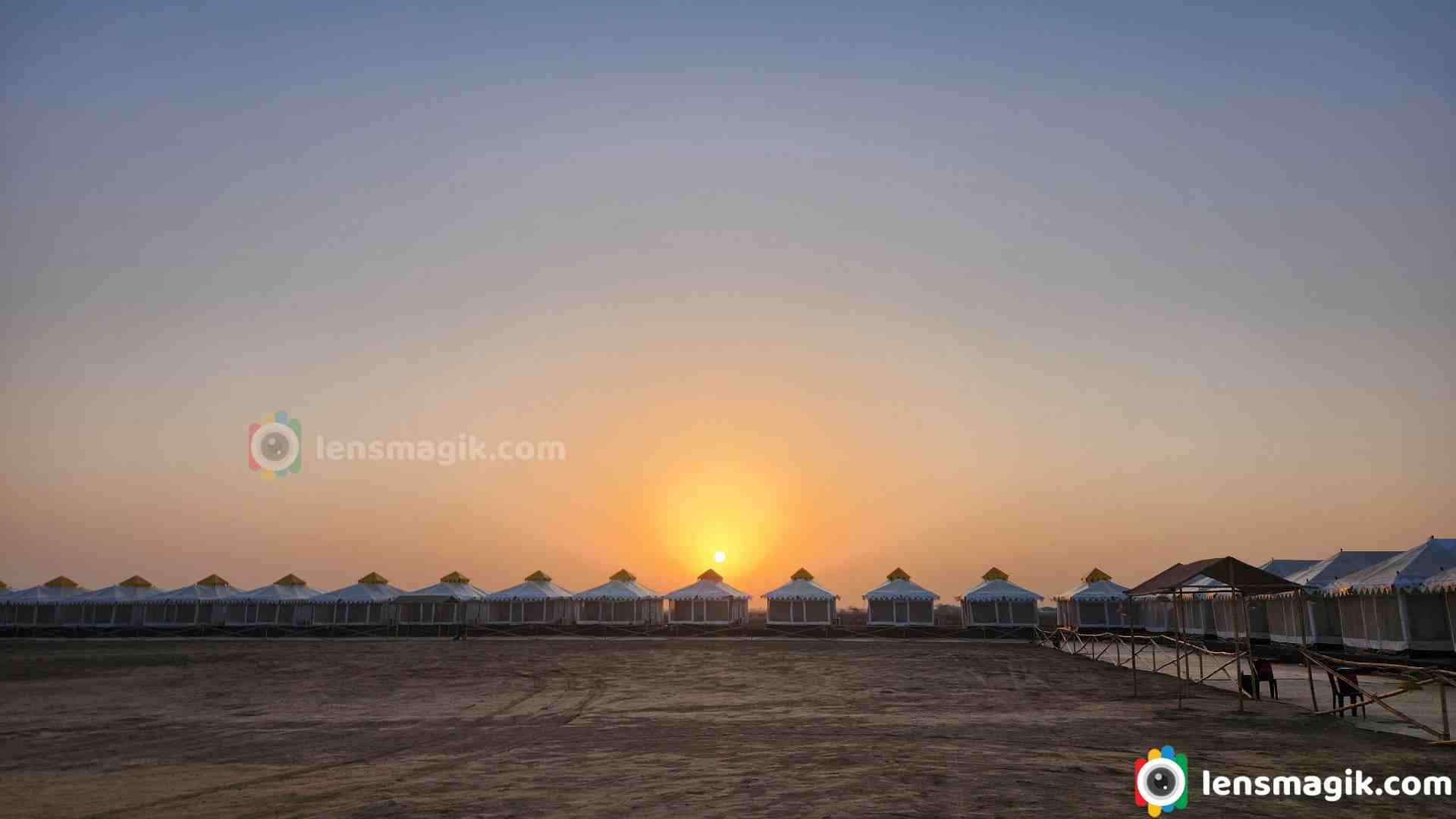
Nearest places to visit : Road To Heaven, Dholavira, Kadiya Dhro, Mandvi Beach, Vijay Vilas Palace, Kalo Dungar, Dholavira, Bhuj city, Bujyo Dungar, Smritivan memorial.
Famous dishes of Kutch : Kutchi Dabeli is one of the most famous fast food of Kutch. Also Khichadi - Kadhi, Kachhi Thali , Odho, Mesukh and Pakwan are famous and must try it.
Famous Cloths of Kutch : Bandhani ( used in sari ,dress material and dupatta), Ajrak ( used in cloths, home decor and accessories) , Rogan Art ( Used in saree and dress materials), Kutch Embroidery, Kala cotton ( used in home decor and clothing )
Photos Taken from : Samsung S22 mobile, Canon 6D, Canon 80D
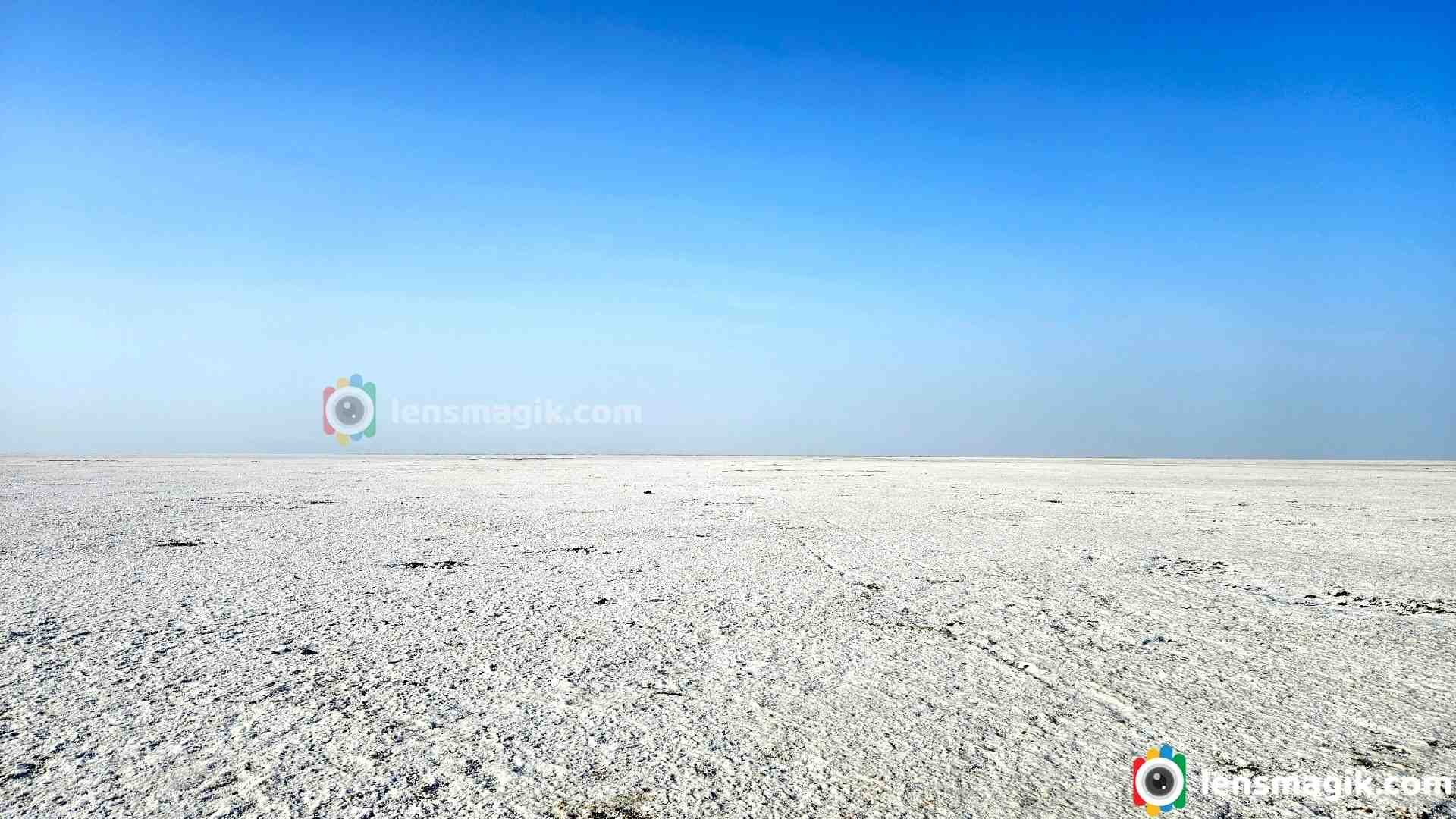
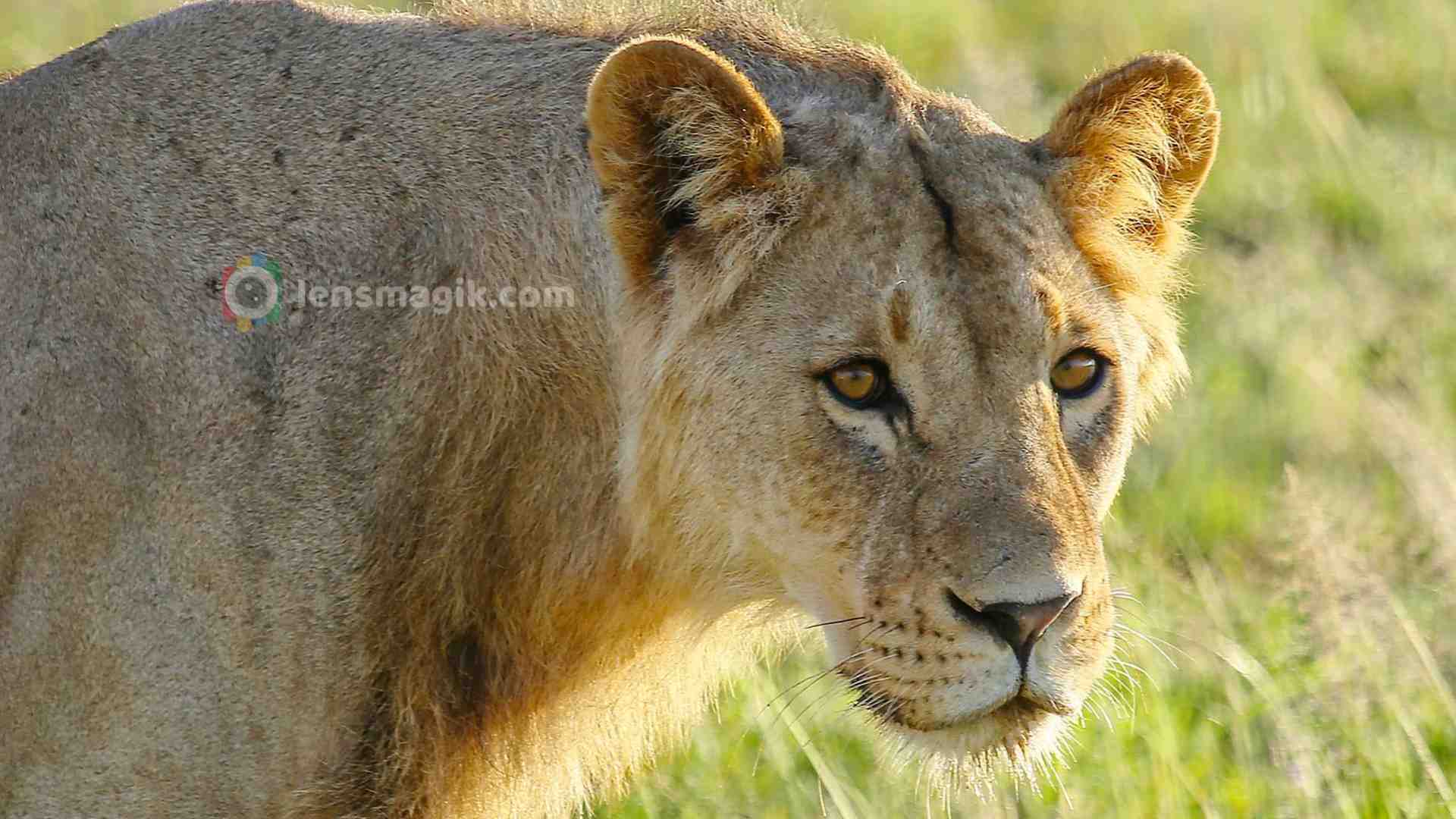
African Lions are keystone spices in African Savanna and also playing a vital role for eco-system. Africa is a dream of every wildlife Photographer to visit. In Africa you can find mammals, serpents, birds, miniatures, macros, water animals and many more. In Africa most people in the world visit Masai Mara National Park. Masai mara is the biggest wildlife National park in Kenya to visit. During June to August month the National park is full of tourist to see the migration of wild beasts. Also you heard about Big Five Africa that includes the major 5 animals of Africa. In Big 5 African Animal includes Lion, Leopard, Buffalo, Rhino and Elephant. Africa is very famous for Lions and Elephants too. In Masai Mara Safari timing is early morning and evening can do also you can go for full day safari about 6 hours with packed lunch. I found lions and also pride of lions in early morning safari.
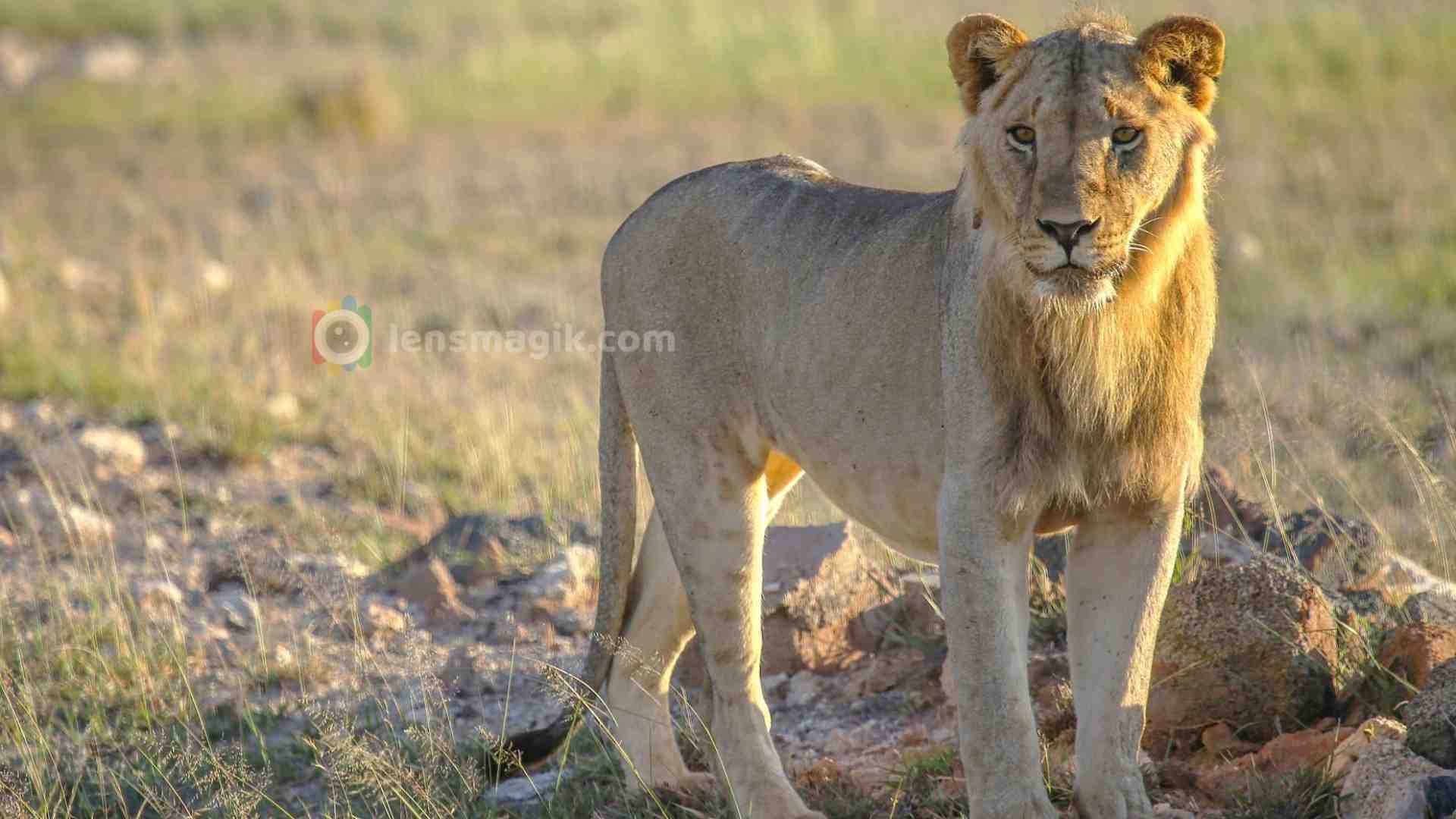
Facts About African Lions :
- African lion is a spices of Pantherian Cat.
- It has deep chested body and round head and ears.
- African Lion total length is about 208 cm from head to tail.
- Group of femali Lions hunts together.
- Adult male Lion have prominent mane.
- Lions found in grassland and savannas.
- Population of Lions in African countries decline about 43% since 1996 so they put Vulnerable on IUCN red list.
- In zoos lions breed with tigers for hybrid spices. Hybrid spices called Liger. It is bigger than Lion and Tiger.
- Lions are only cats that lives in Group.
- A lion's roar may heard around 8 km away.
- Lions mark their territory with their wee and create a border.
- African lions bite force is around 600-1000 PSI.
- Lions are most intelligent cats.
- Lions gestation period around 3-4 months. They deliver 2-6 cubs generally. Cubs stay with mother around 18 months.
- African lions lifespan is around 15-18 years.
- As per African wildlife report lions can sleep 20 hours in a day.
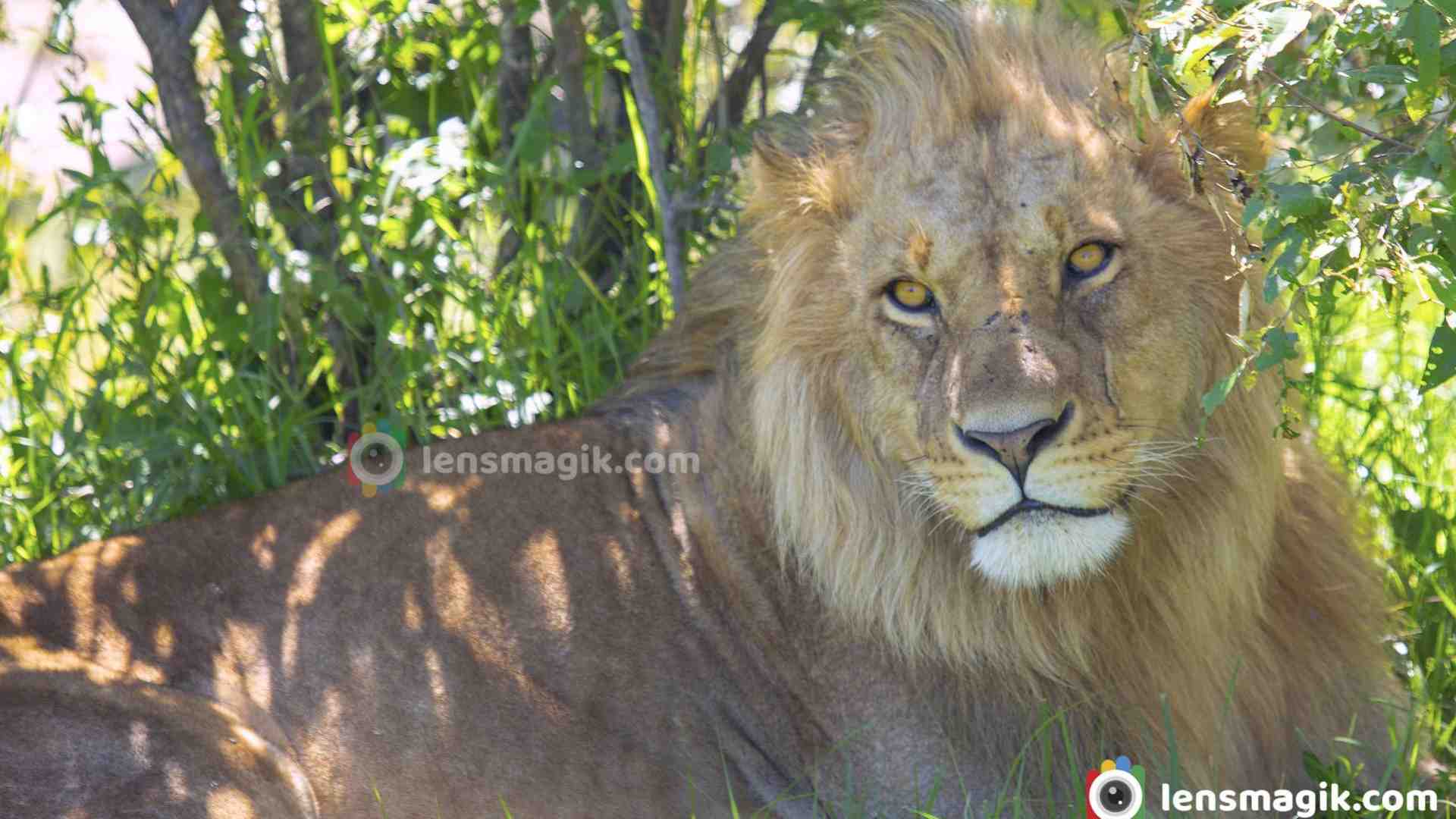
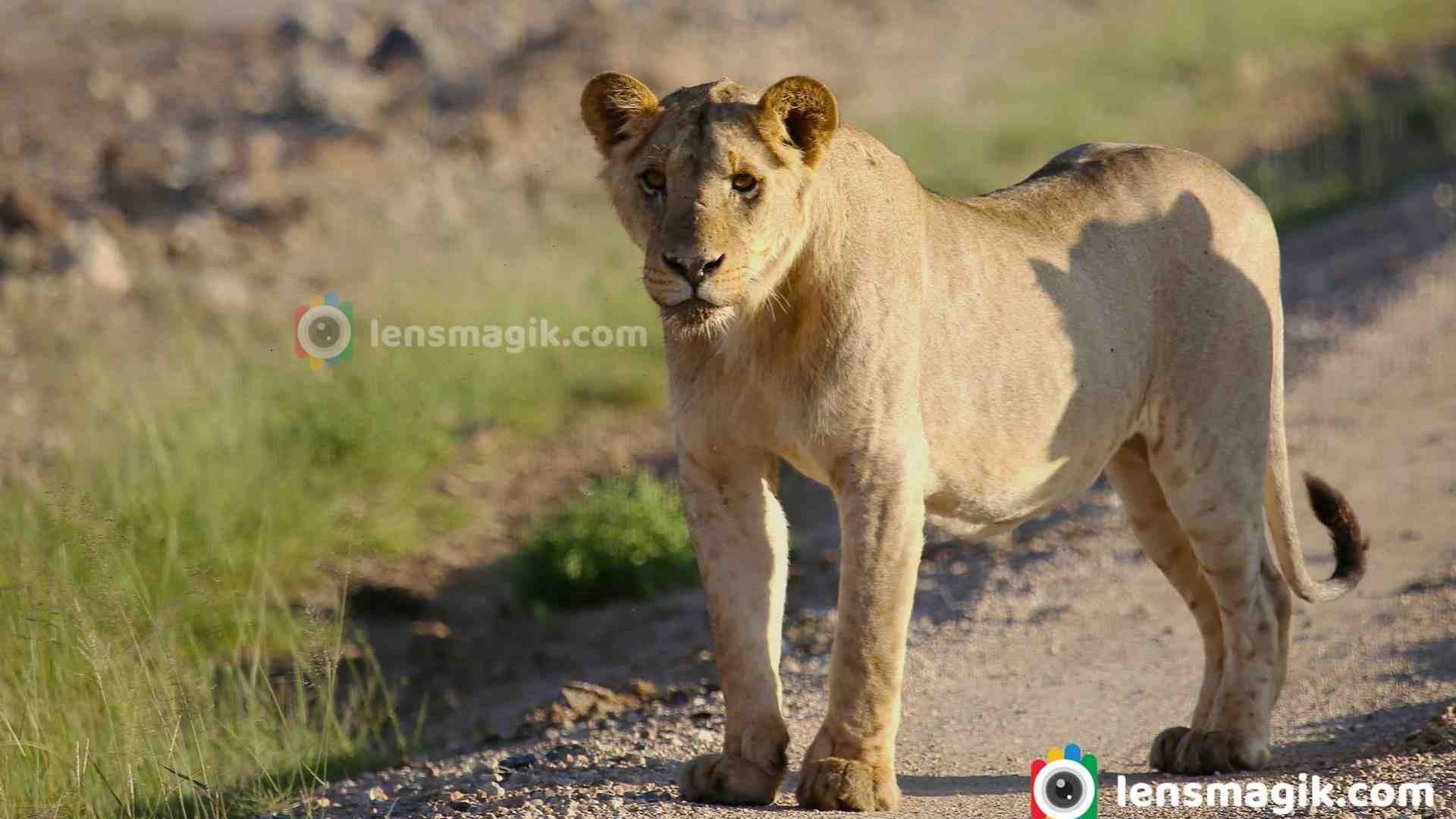
In Kenya there are lots of wildlife Sanctuaries to visit like Masai Mara National park, Amboseli National Park, Tsavo National park, Lake Nakuru, Lake Naivasa etc. Among them Masai Mara National Park and Amboseli National Park are most favorite for Lions and Elephants. In Masai mara national park you can see all major animals at one place so it is most favorite place for wildlife photographer. During migration time the Masai Mara National Park is full of tourist. There are many resorts inside of Masai Mara National Park so it is better to do best experience in the wild. During migration time resorts and hotel prices are too high.
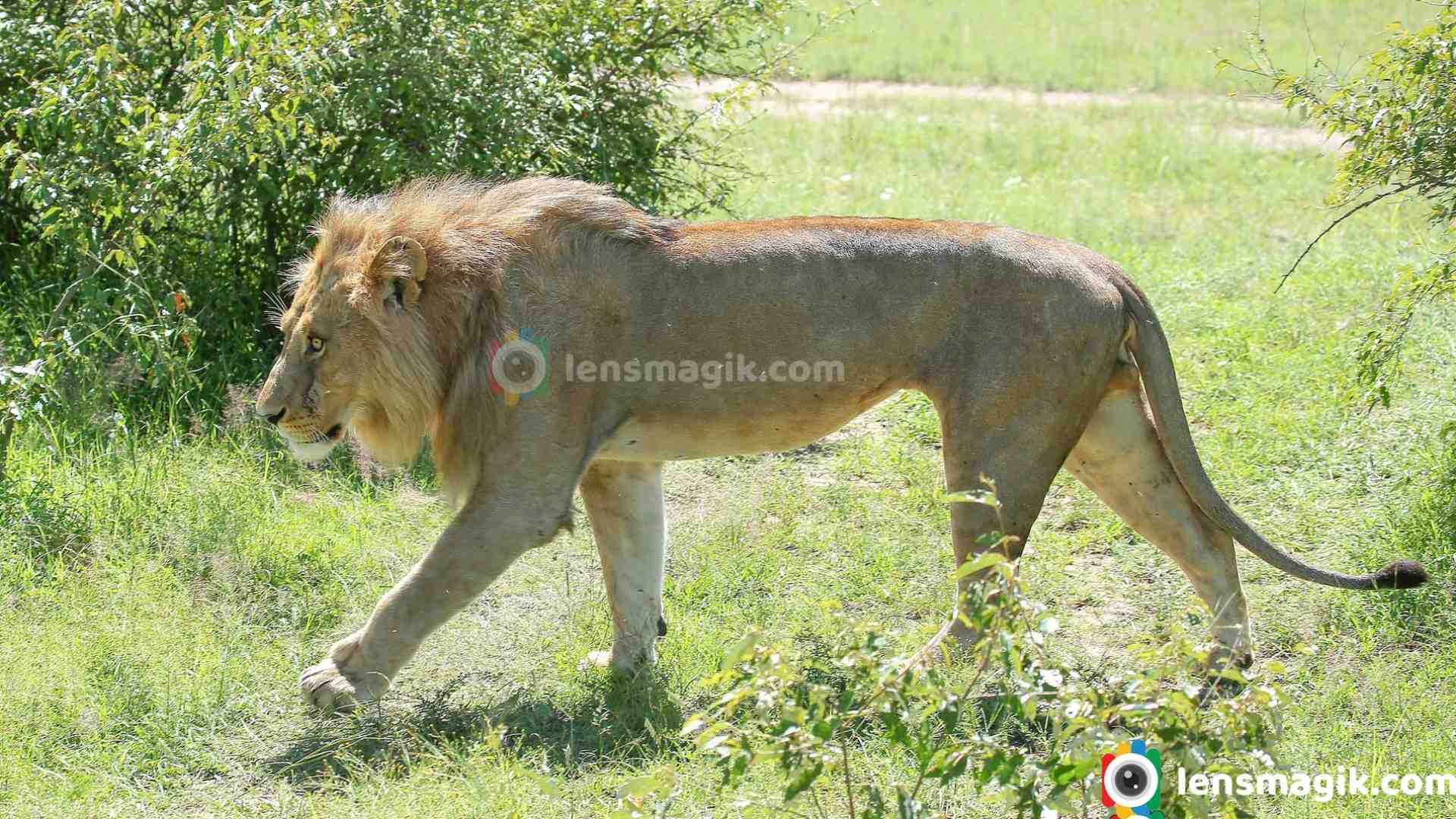
Park fees For Masai Mara National Park :
From 1st Jan 2024 park fees for Masai mara national park is revised and increased too.
For Non resident adult fees is 100 $ per person per day. Child from 9-17 years fees 50$ per person per day. These fees are applicable from 1st January to 30 th June.
From 1 st July onwards fees for Masai Mara National Park is 200 $ for non resident adult per person per day. For child fees remains same.
Lions are most social big cats. They living in pride which include females, cubs and one or two males. Lions are predators and they hunt together with teamwork to take down prey. Population of African Lions are significantly decline due to habitat loss, poaching , conflict with humans etc.
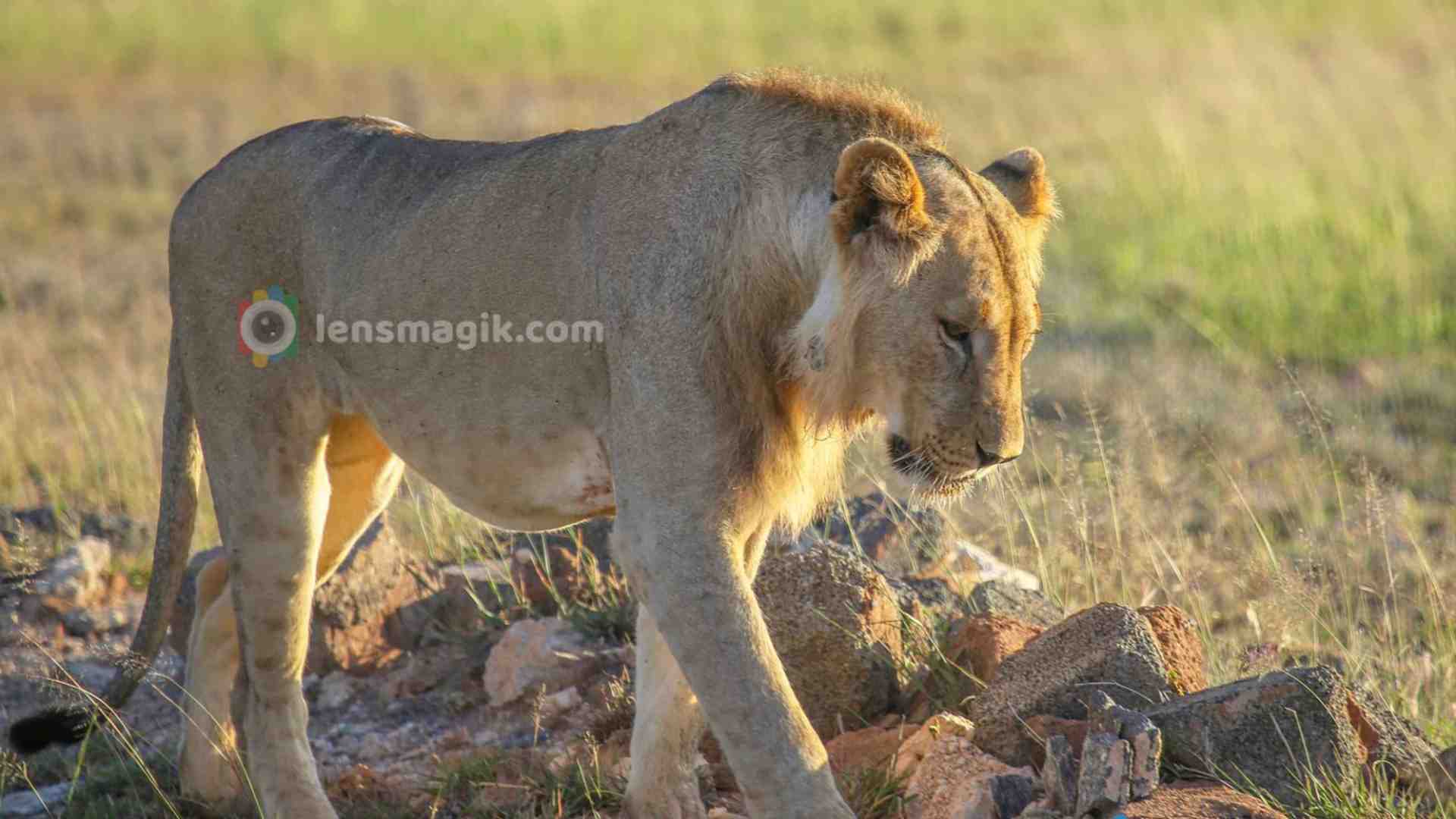
African Lions Vs Asiatic Lions :
- African lions are bigger than Asiatic Lions. African Lion weight around 500 pounds of male and 350 pounds of female. Asiatic Lion weight 450 pound of male and 350 pound of female.
- Male African lion have thick and full mane while Asiatic lions have shorter and sparser mane.
- Both lions live in pride but African Lion pride have one or two males while Asiatic lions have only one male.
- African lions live in various savannas and grasslands in Africa while Asiatic lions have only one forest Gir National Park.
- African Lions hunts large prey like wildebeest, zebra etc while Asiatic lions hunts small prey like Antelope and deer.
- Both Lions spices are Endangered. African Lions face habitat loss and conflict with humans while Asiatic lions face restricted habitat in Gir National Park.
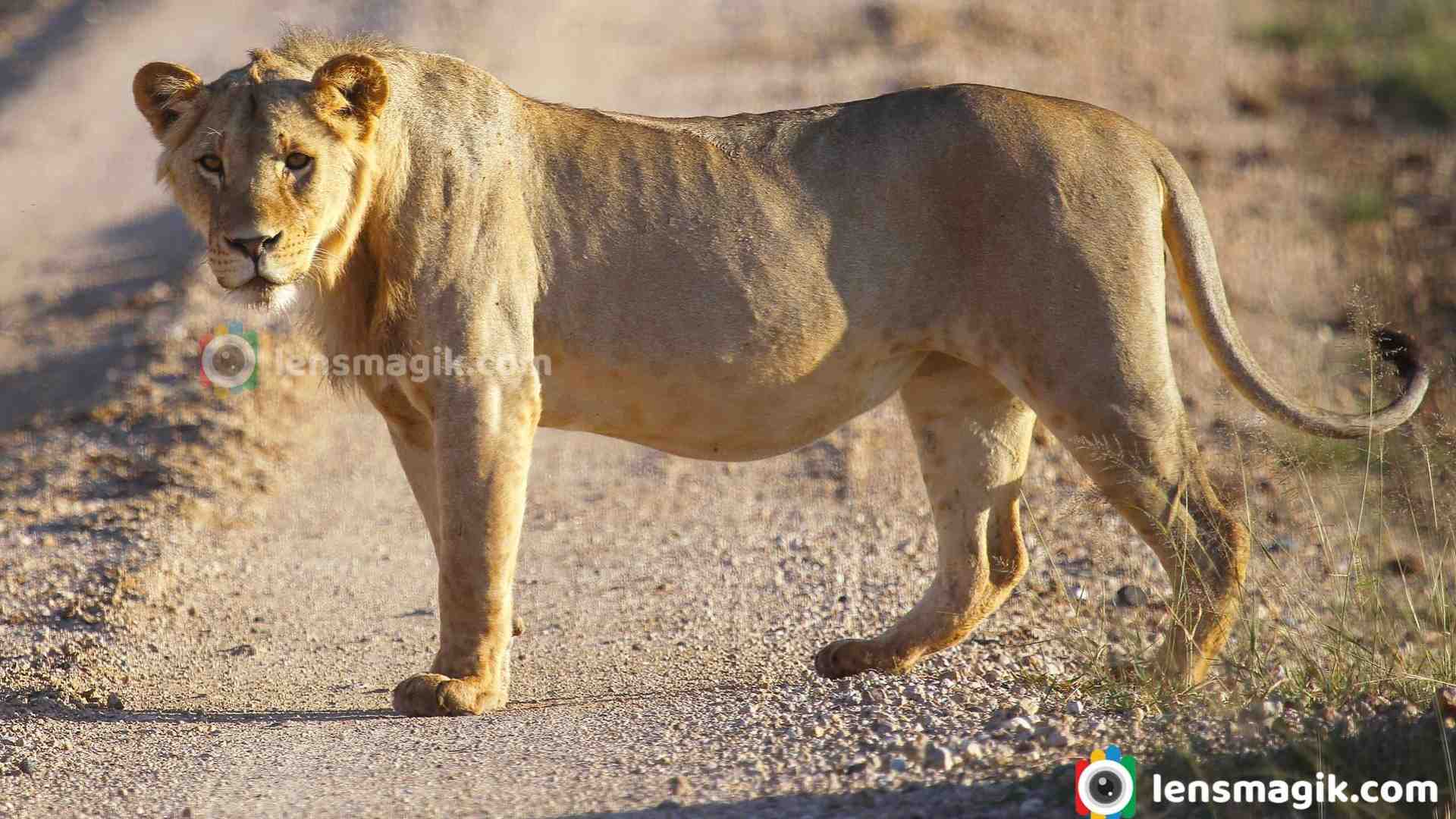
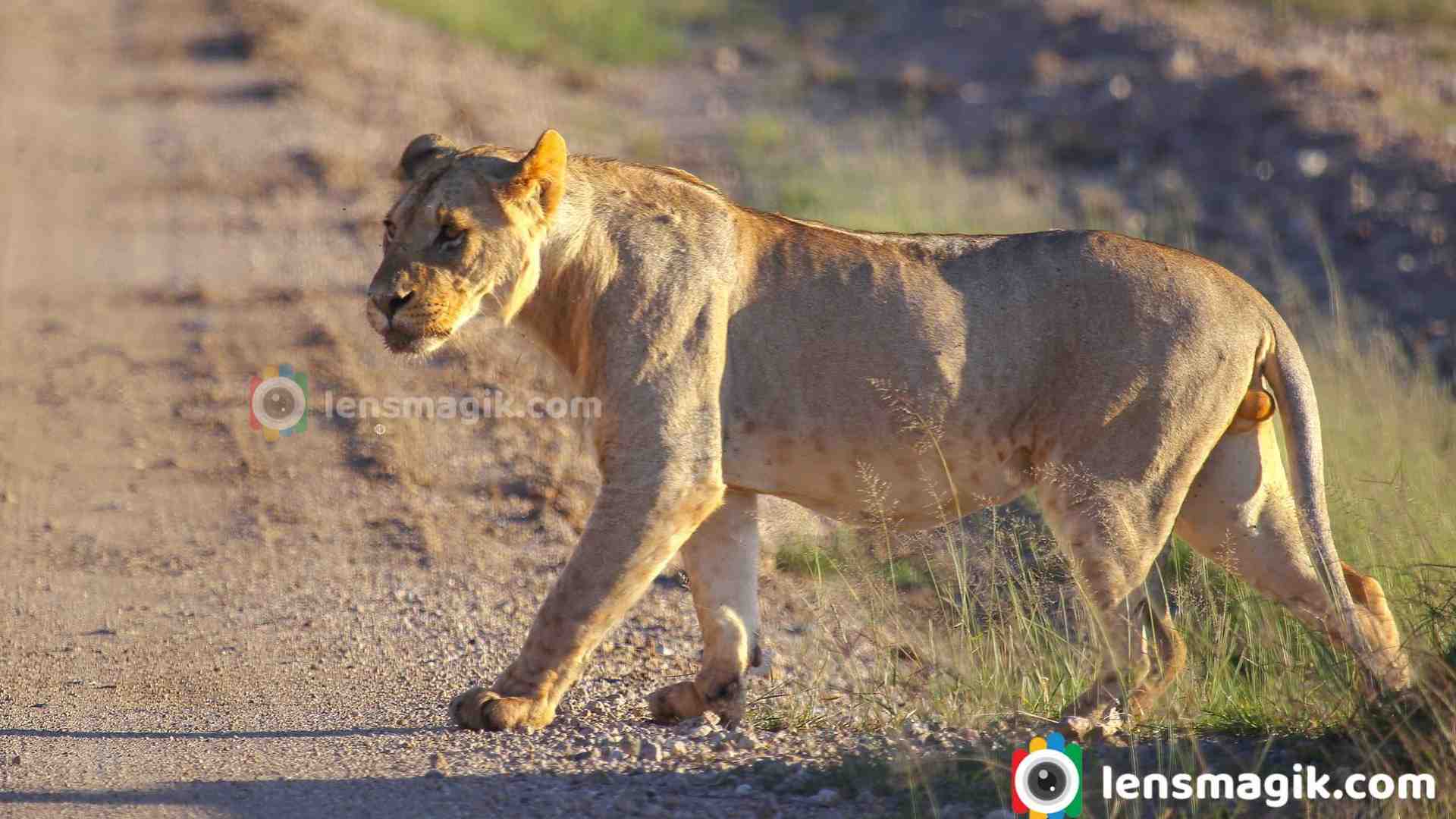
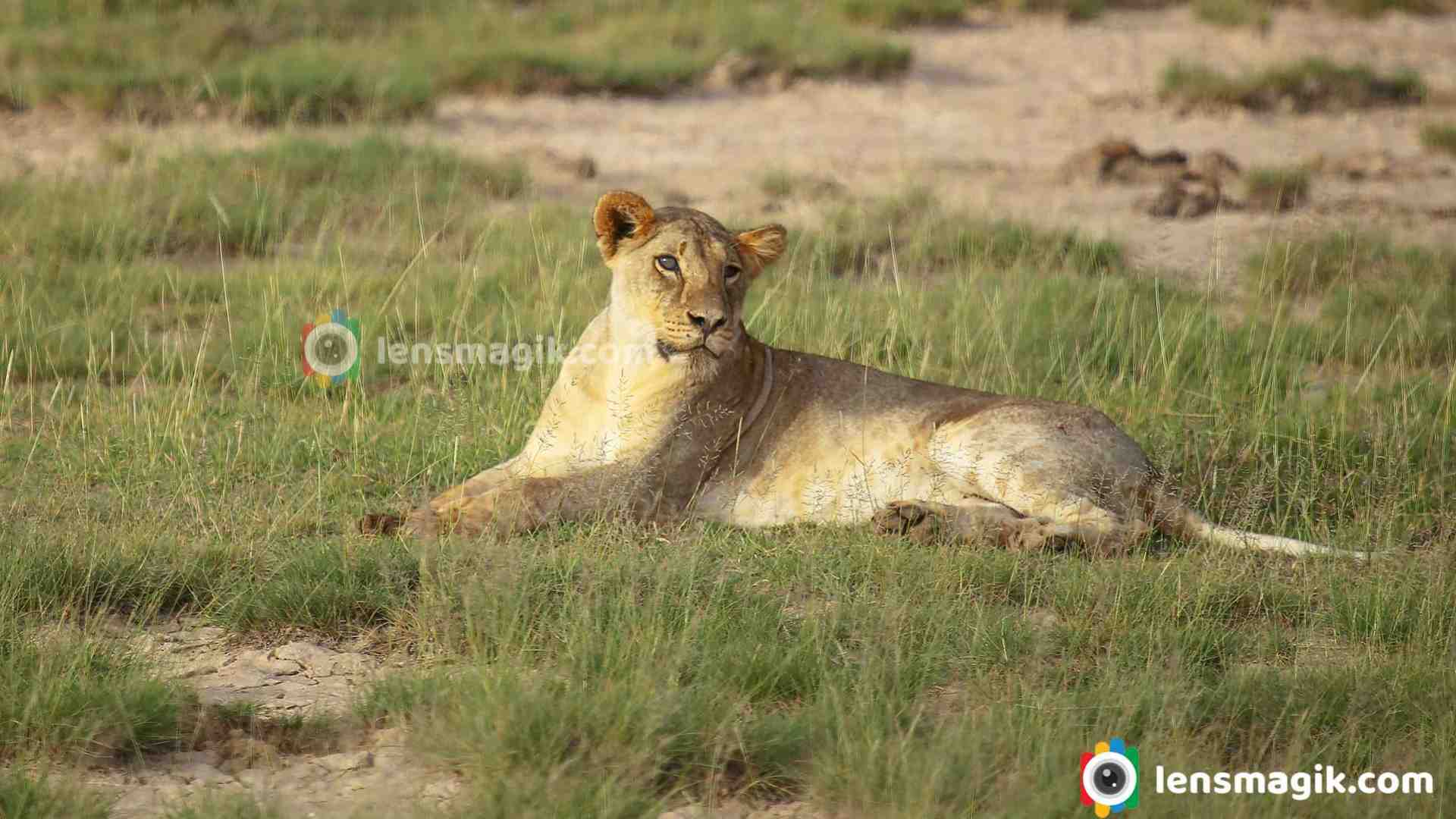
Lions are big mammals and while in safari if you see them you definitely scared. It is really a great experience to see African Lion too close and contact eye to eye. My hands are shacked while clicking photos because if Lion jump on my van then i would be his breakfast definitely. Overall great experience in Masai Mara and also at Amboseli National park in Kenya to watch lions with their cubs and family.
Photos Taken at Masai mara National Park and Amboseli National Park in Kenya
Gear Used : Canon 6 D with Canon 100-400 mm lens.
Read more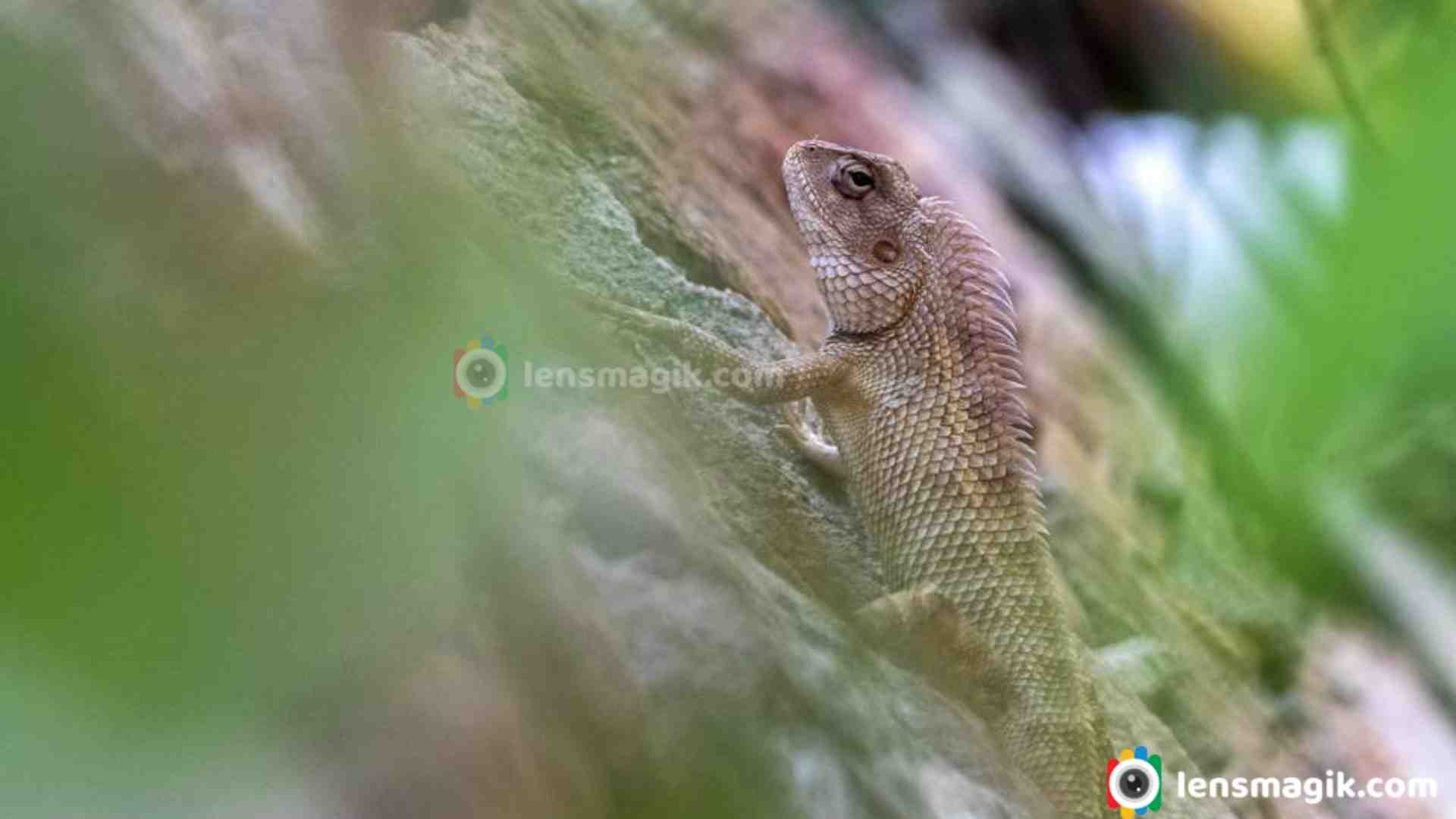
The Oriental Garden lizard is also known as common garden lizard, Indian Garden Lizard, Eastern garden lizard, changeable or blockbuster lizard. It is widely distributed in Indo -Malaya. It is also found in many other part of the world and also in USA. Oriental Garden Lizard is a resident in gardens. It helps in control insect populations. They are insectivorous and their main diet is insects. Binominal name of Oriental Garden lizard is Calotes versicolor. They also change their body color according to weather.
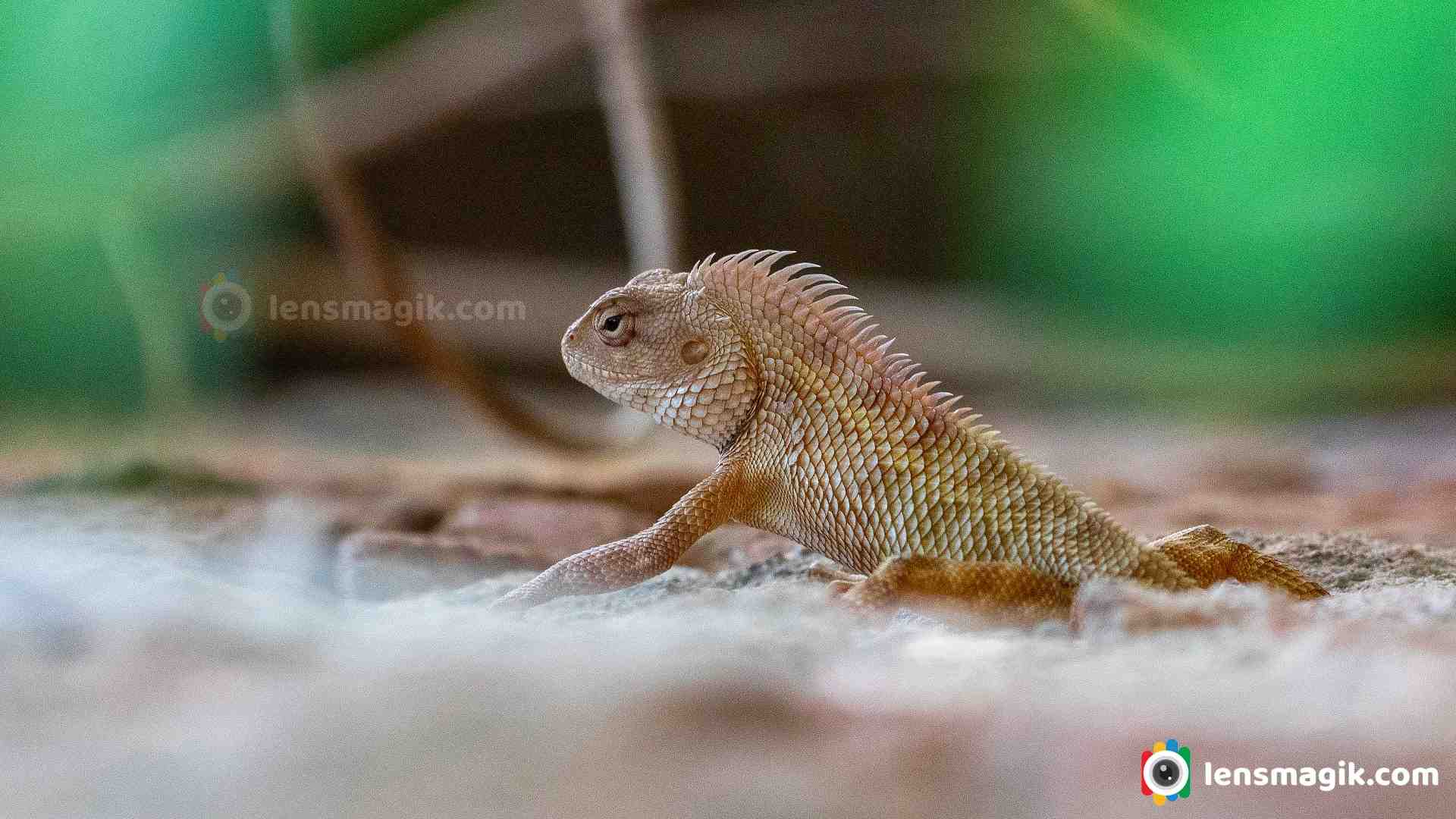
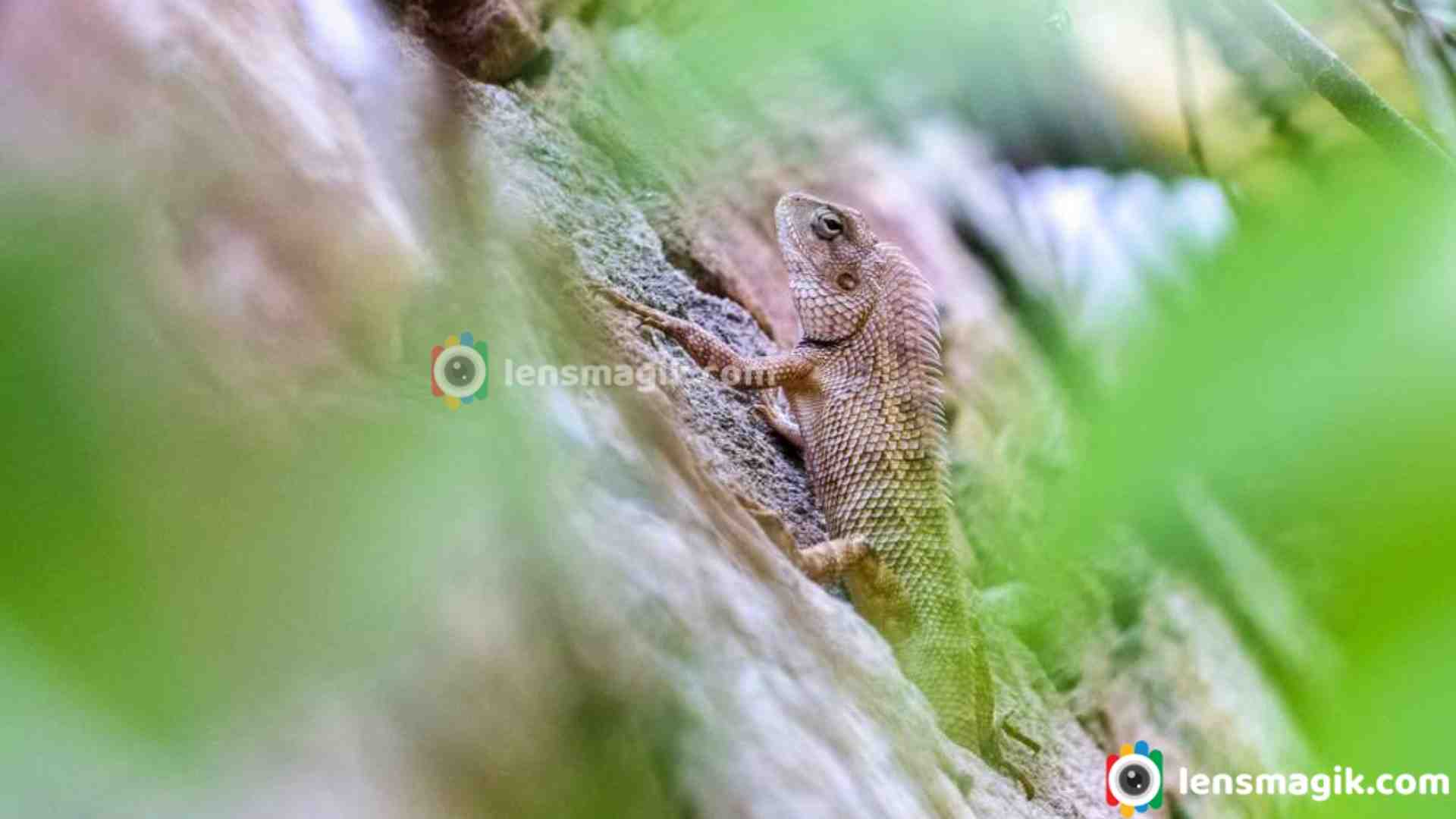
Description and facts about Oriental Garden Lizard :
- Male oriental garden lizard has bright red throat in breeding season .
- Length of Oriental garden lizard is around 10 cm. Total length with tail is around 37 cm.
- Dorsal crest elevated on neck and anterior part of trunk.
- Ground color is light brownish. It can be change into red, black or mixture of both.
- During breeding season male change its color to orange in head and shoulders. Male change head color to red after successful battle with rival.
- Lizards don't drop their tail and also tail is very long, pointy and stiff.
- They eat mainly insects like grasshopper, crickets , ants and rodents like geckos .
- Female lay 10-20 eggs which are long spindle shape and covered with leathery skin. They hatch in 6-7 weeks and they also able to breed in 1 year.
- They are diurnal means they are active during a day.
- They are excellent climber, thanks to their sharp claws and moving eyes.
- Some spices of lizard will go their entire life without drinking water
- Average lifespan of lizard is around 3-5 years.
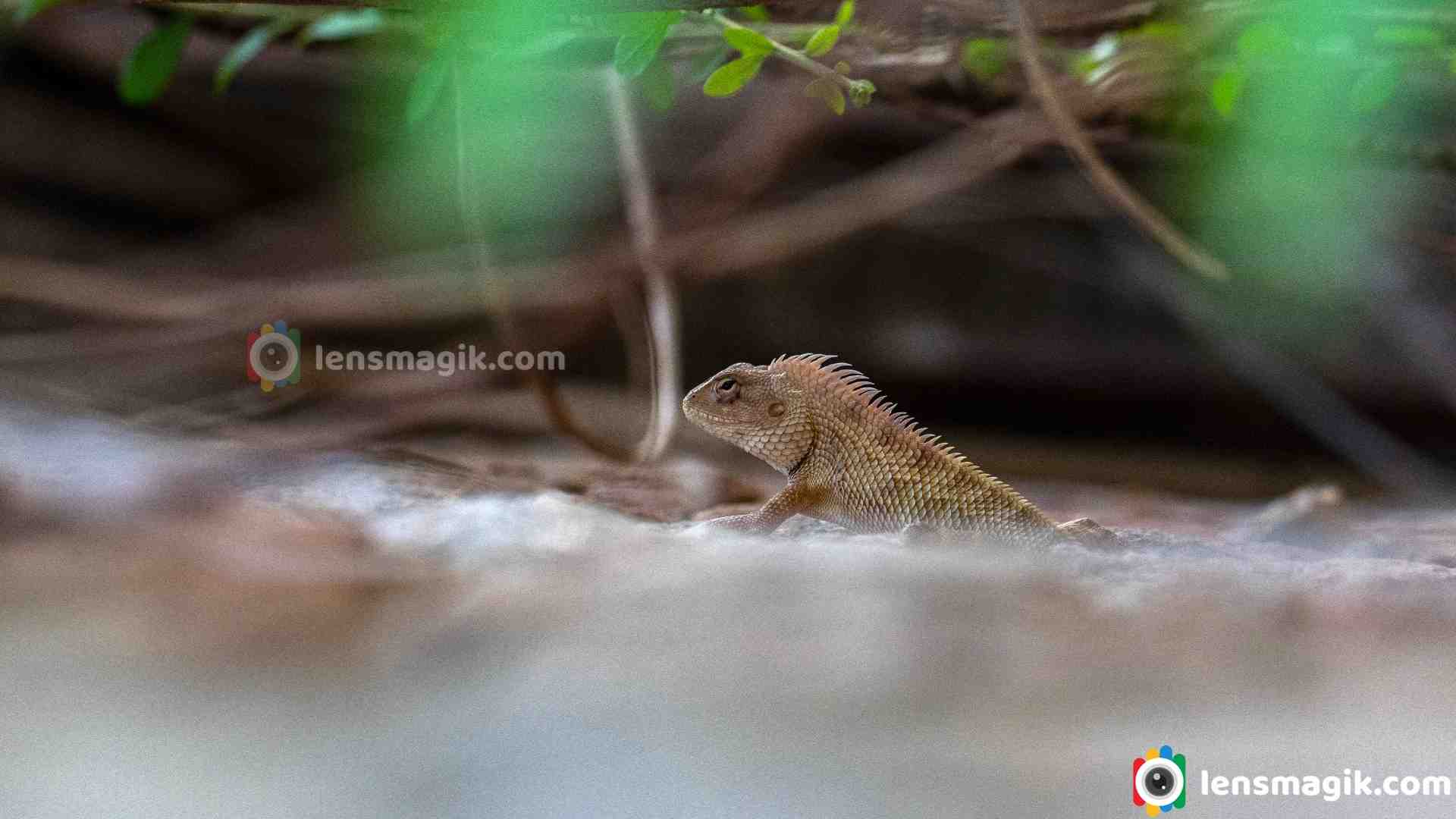
Oriental Garden Lizard can move each of their eyes in different direction. Oriental garden lizard do not attack on humans and don't suck blood. Lizards are live everywhere even in the houses also. In India housewives are scared of lizards. There are various spices of lizards found in home and garden also. Lizards are in Reptilia class and they are in least concern in IUCN list. I found many lizards in farm areas and agriculture areas near to my home.
Gear Used : Canon 6D, Canon 80D, Canon 100 mm macro lens
Exif Data : F-stop = f/5 , Exposure : 1/100 sec, ISO : 640, Focal length : 100 mm , No flash
Read more
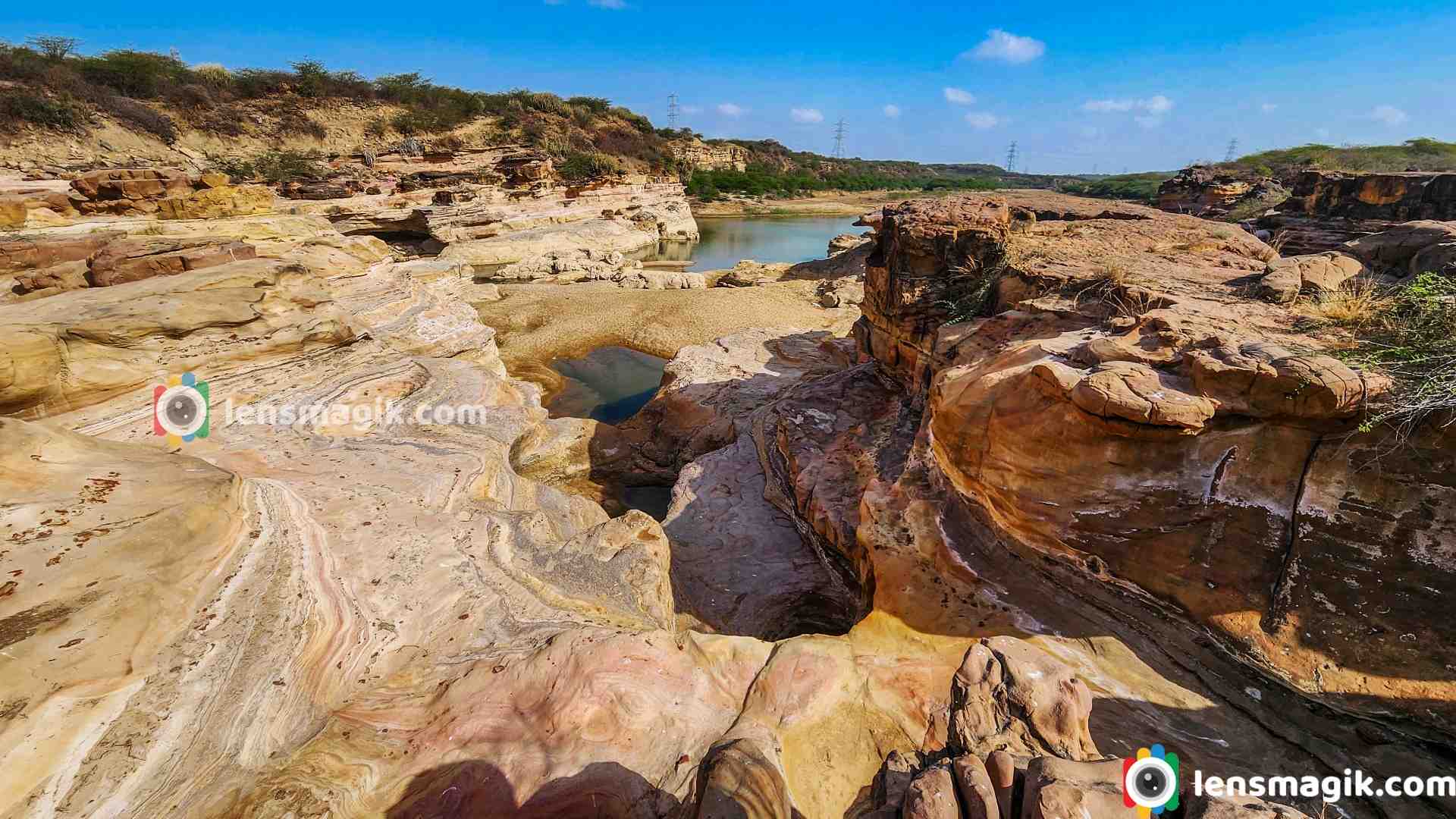
Kadiya Dhro is a fascinating natural wonder located in the Kutch district of Gujarat, India. It is looks like a grand canyon site and similar to it. Site is not much big but it is far from main road of Ulat in Kutch. You have to drive around 5 km from main road. There is a local transport of Jeep get to the Kadiya Dhro site and come back in 1 hour . They charge 100-200 INR per person or hire a jeep around 1000-2000 INR depend on season. Most people not visited Kadiya Dhro site because it is not in the main route of Kutch , Bhuj and Rann of Kutch. But i think it worth to visit it. Kadiya Dhro site was discovered by traveller Varun Suchday in 2020. Kadiya Dhro is located in between White Desert of Kutch ( Rann of Kutch ) and Bhuj City.
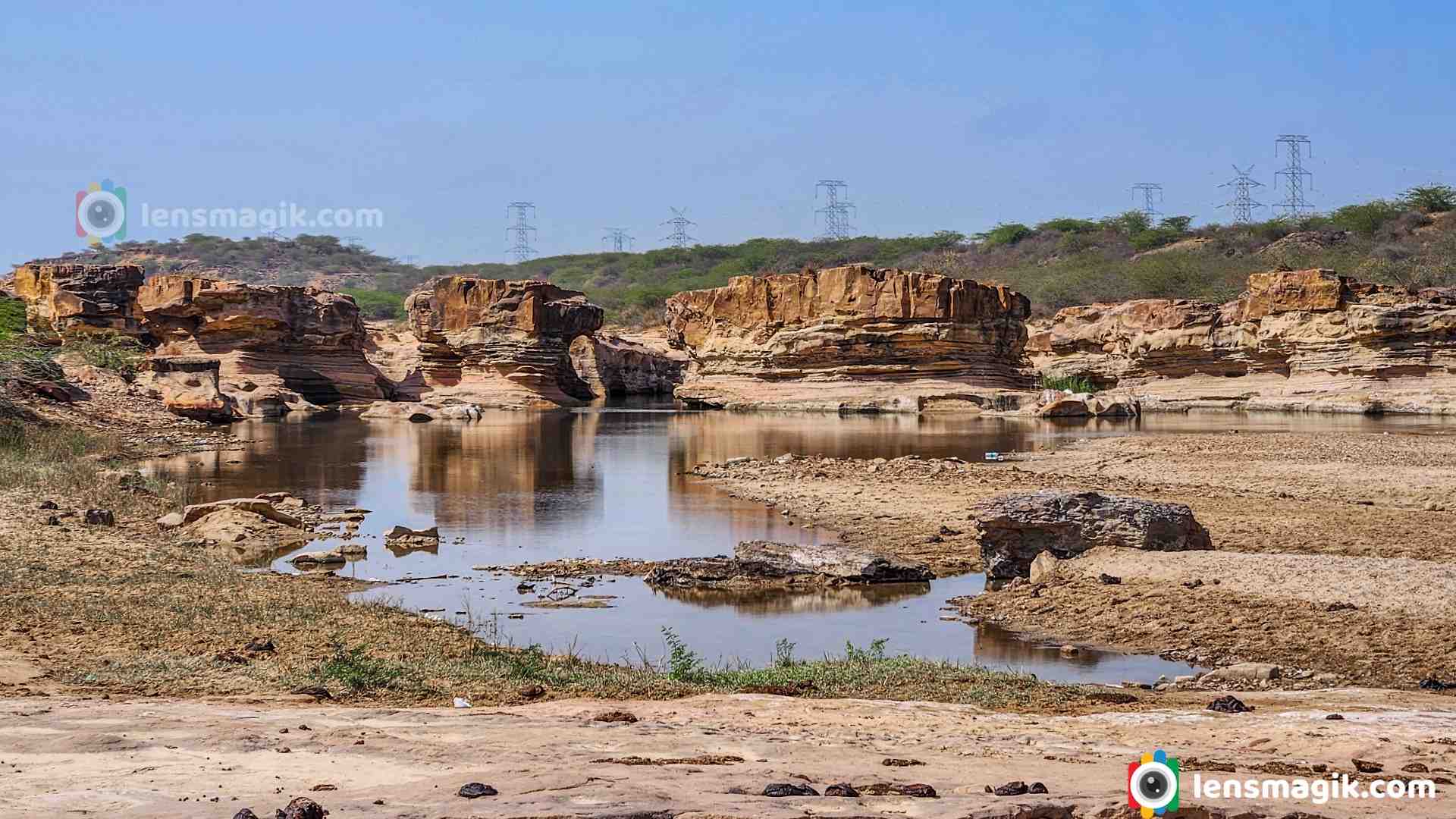
- Grand Canyon of India: Kadiya Dhro is nicknamed the "Grand Canyon of India" due to its resemblance to the famous landmark in the United States. Layers of colorful sandstone have been carved by the wind and river over thousands of years, creating a visually striking landscape.
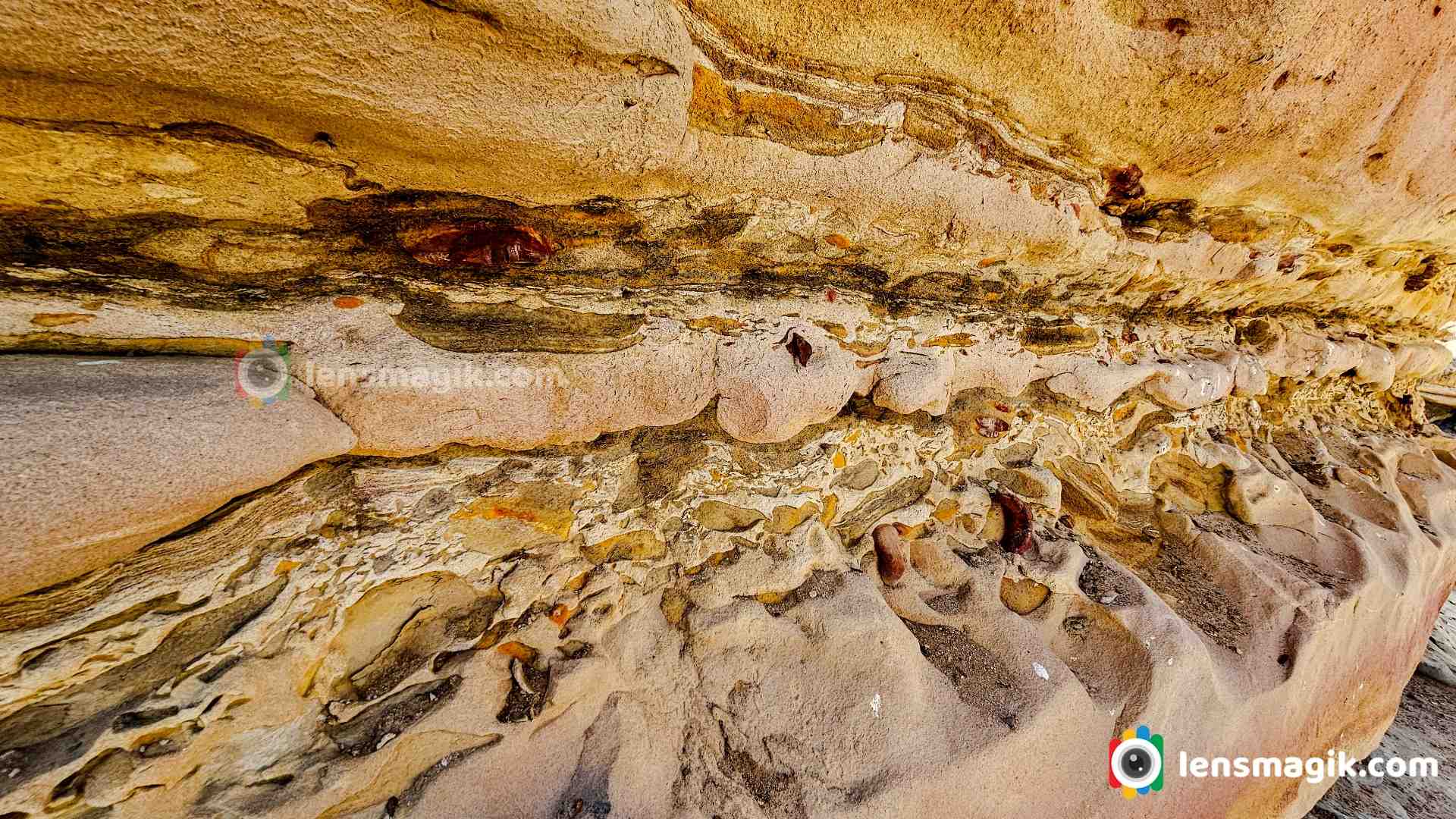
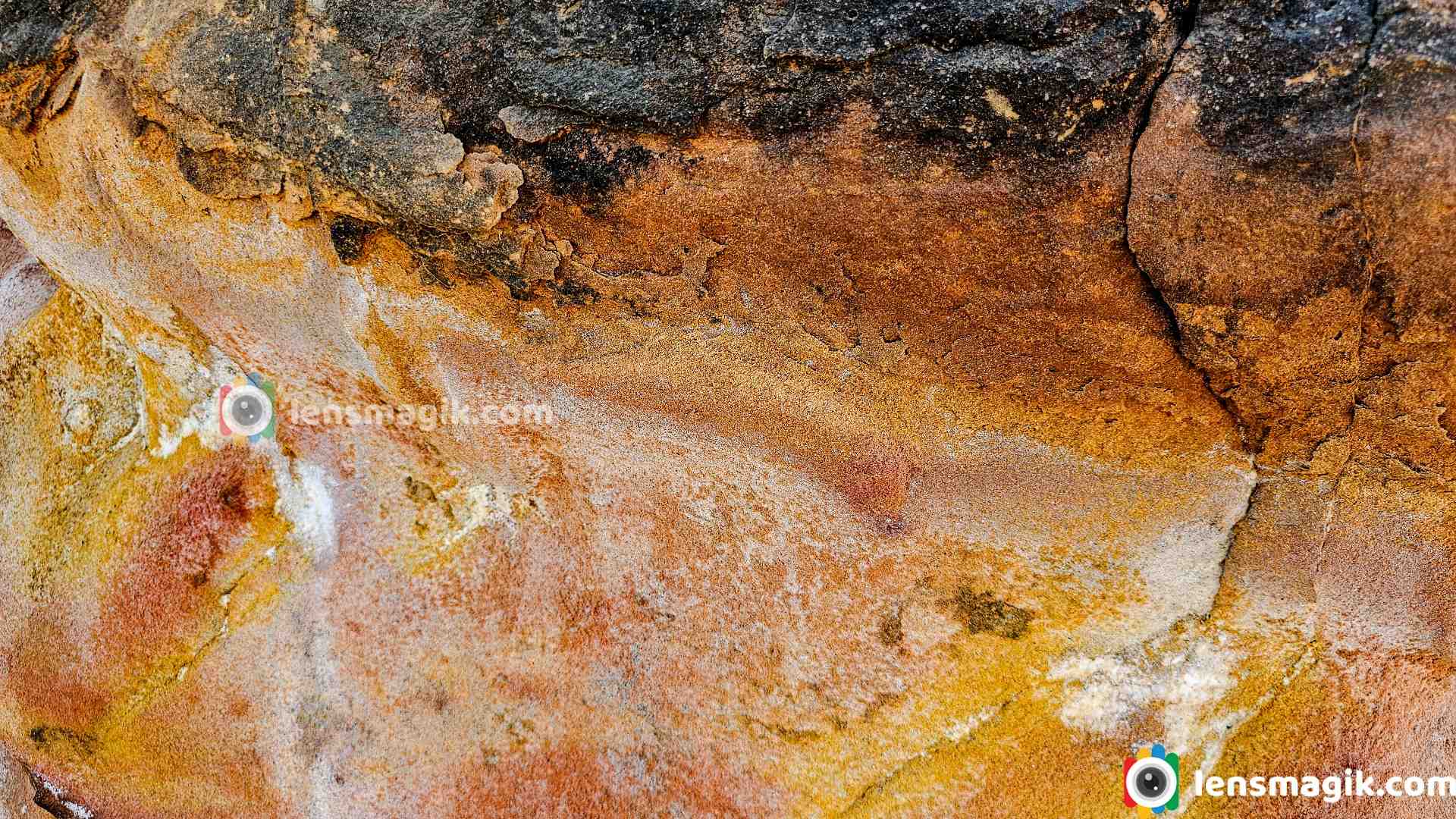
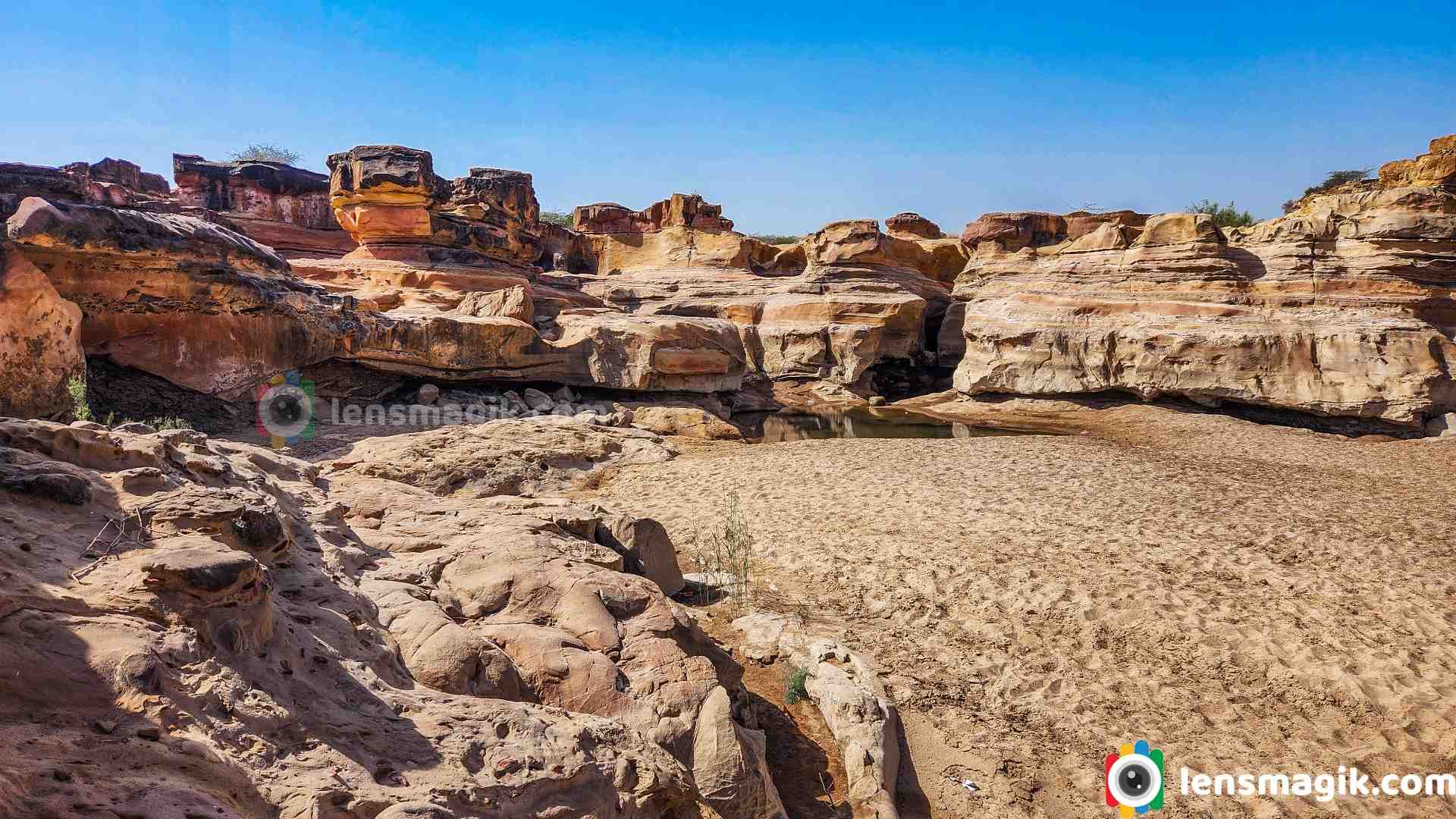
Location: It's situated about 32 kilometers from Bhuj, near a small village in the Kutch district.
Getting There: Reaching Kadiya Dhro requires an off-road drive of around 4-5 kilometers, so a jeep with good ground clearance is recommended. You can find jeeps available for hire locally
Best Time to Visit: The ideal time to visit is between November and February, when the weather is pleasant and sunny
Things to Do: Enjoy the scenic beauty of the rock formations, explore the surrounding area, and be on the lookout for the diverse birdlife. Keep in mind that crocodiles have been spotted here, so avoid swimming in the water .
Hidden Gem: Kadiya Dhro was recently included in The New York Times' list of "52 Places to Visit in the World" in 2021, bringing it more recognition .
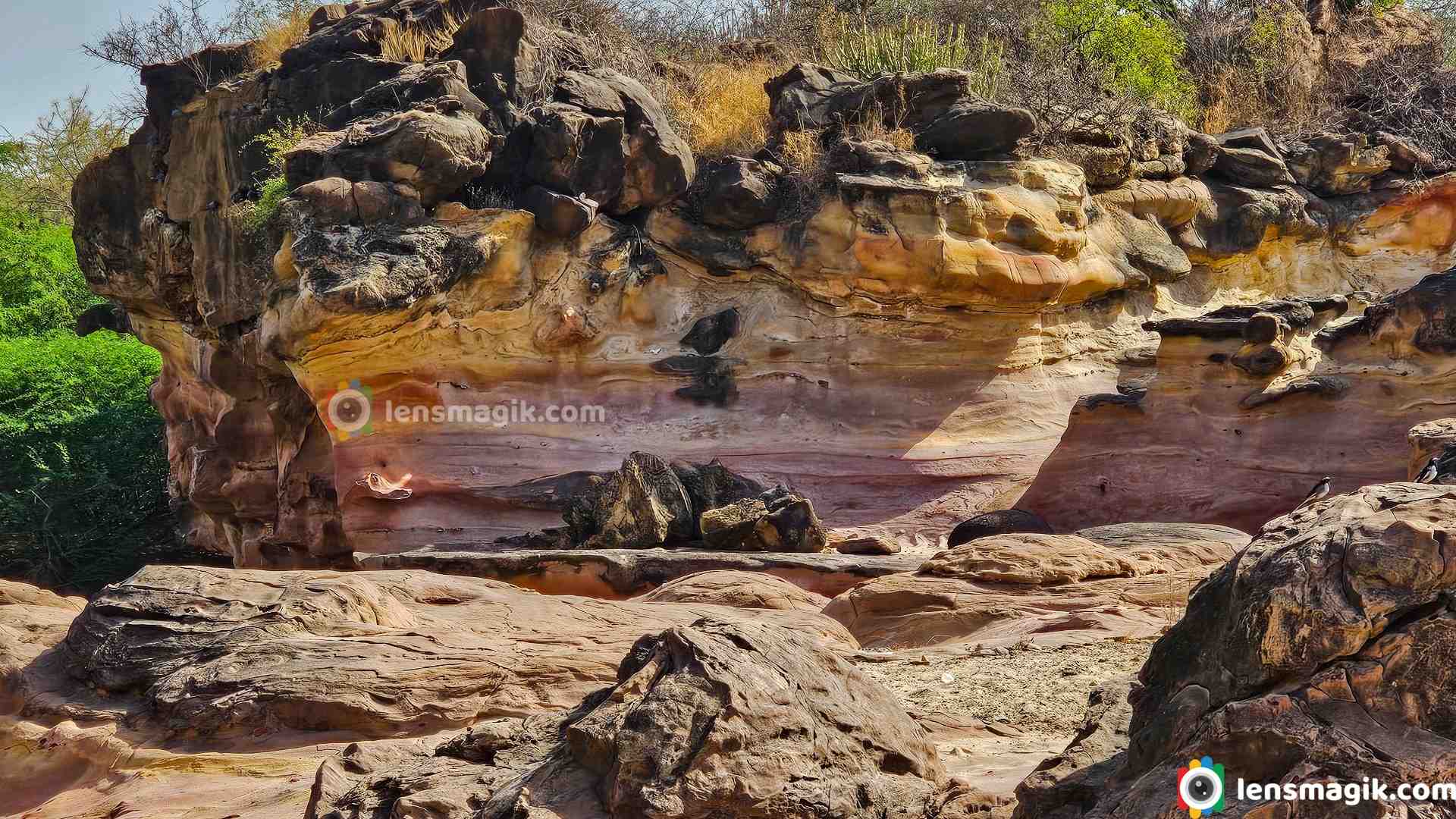
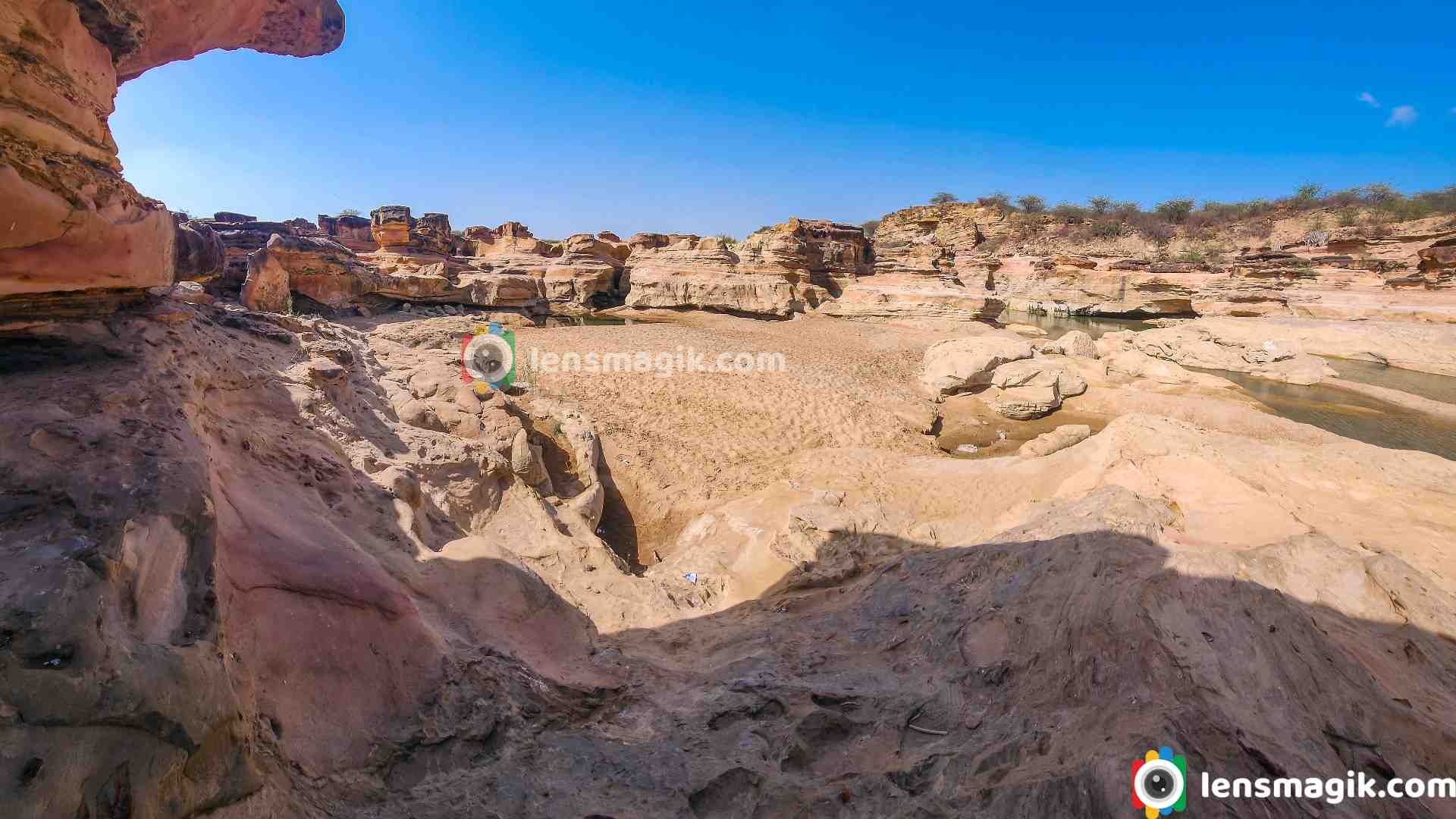
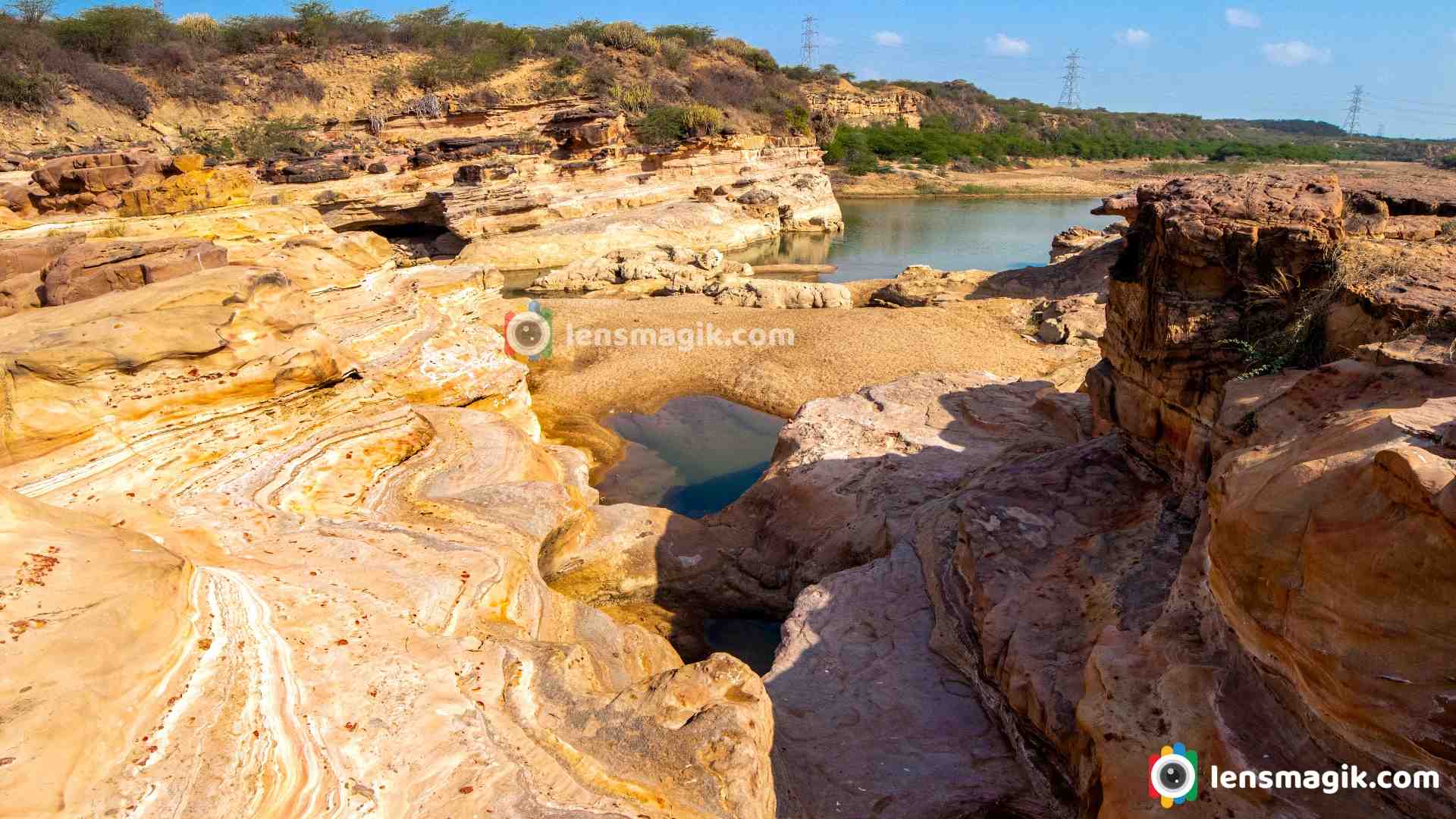
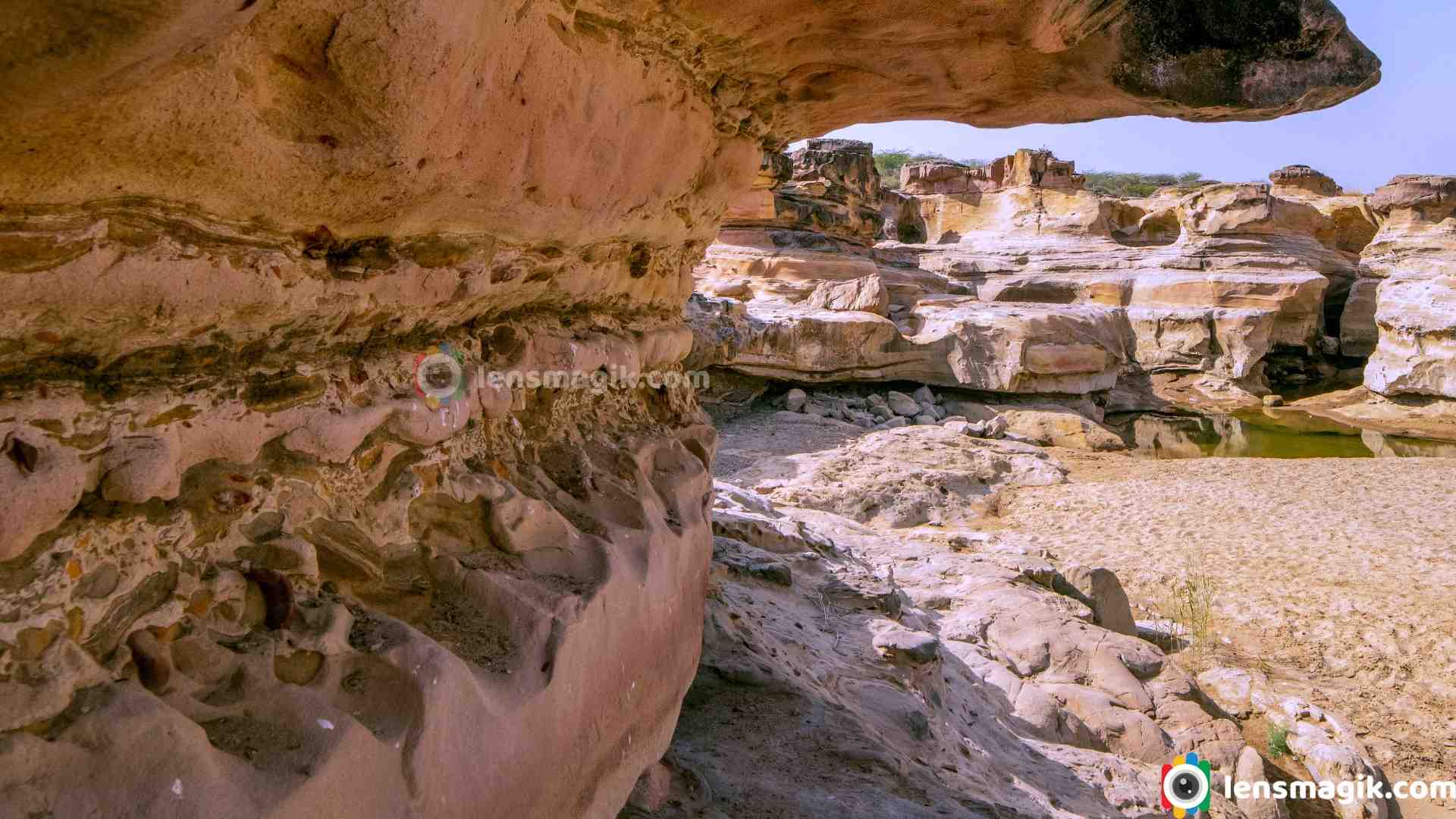
If you're looking for a unique and off-the-beaten-path destination in Gujarat, Kadiya Dhro is definitely worth considering. Also Kadiya Dhro is less crowded site so you can enjoy a lot without any disturbance. The local jeep allow you for 1 hour visit site but i suggest that reach early morning or late evening to watch sunrise or sunset and hire jeep for atleast 2-3 hours for better visit site. Also some places have good photographs to take with sunset and sunrise. We had a limited time for visit Kadiya Dhro so we reach in the afternoon in very sunny but still is good site to capture in your camera.
Photos Taken with : Canon 6D, Canon 80D, Samsund S22 mobile, DJI Mavic Air 2
Places to visit in Kutch : White Desert , Dholavira, Road To Heaven, Bhuj , Smritivan, Mandvi Beach, Vijay Vilas Palace
Read more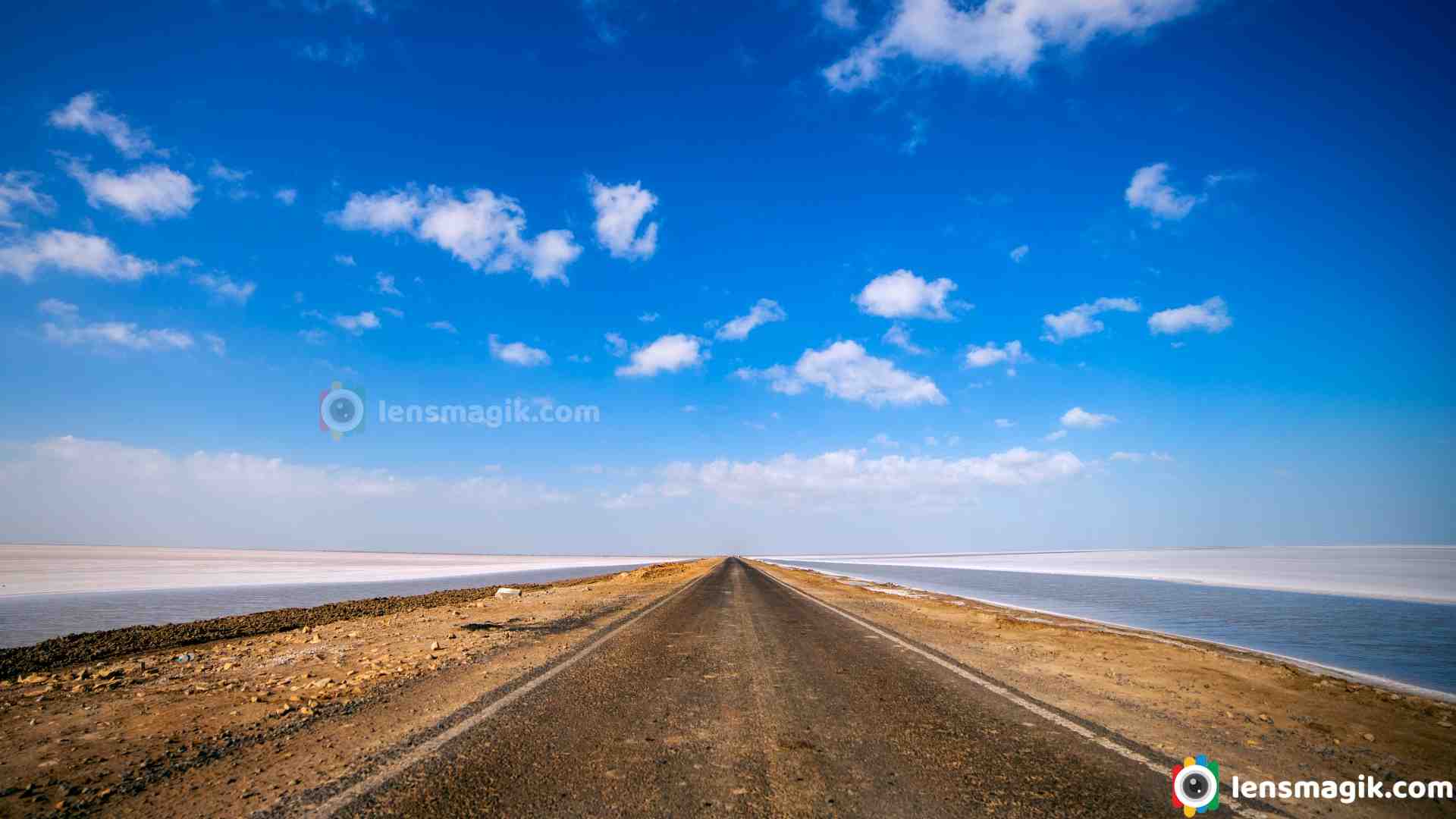
Road To Heaven is named to the road from Khavda to Dholavira in Kutch Gujarat. The road is so wonderful and scenery so it known as Road to Heaven . Khavda to Dholavira distance is around 58km but from Khavda there is a single line narrow road passes through small villages around 15-20 km approx. The main road starts after it and it is around 30-35 km approx. strait to Dholavira. Road is under constriction but almost 70-80% work done. The road heading to the city of Harappan Civilization Dholavira which is one of the largest site of Harappan Civilization and Indus valley Civilization.
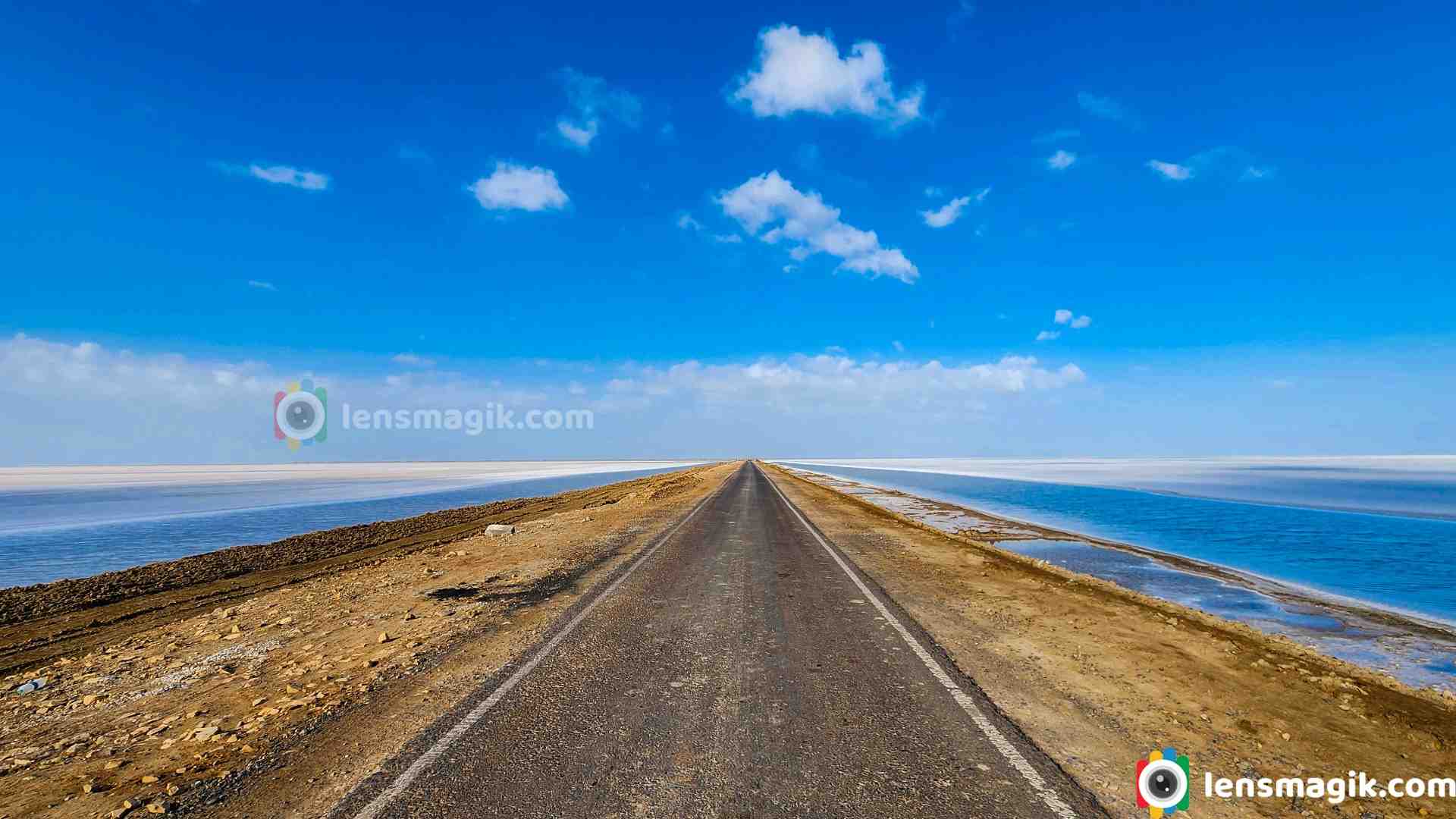
Kutch is a largest district of Gujarat and also of India. Main City or Headquarter of Kutch District is Bhuj. Kutch is famous for White Desert or White Rann. In Every winter season from December to February celebrate “ Rann Utsav “ to attract foreigners and also locals. Tent City made in white desert to stay and also cultural programs arranged in it. The main Rann Utsav held in Dhordo of Kutch.

After visit White desert people also visit Dholavira which is nearest destination from Dhordo and also Kalo Dungar in between. From Dhordo you will have to go Khavda first and then from Khavda to Dholavira which is connected through “ Road To Heaven “. Dholavira is located at Khadir Bet. Khadir bet is separated because after monsoon the water filled outer side of bet. So the Road To Heaven is the way to connect Khadir bet to main city Bhuj.
About Road To Heaven Dholavira / Road to Heaven in Kutch :
- · It connected from Khavda to Dholavira.
- · Road to heaven distance around 30-35 km.
- · After monsoon the rain water on the both side of the road. You can see beautiful Greater Flamingo birds in between. Water level is low but muddy.
- · After winter in January –February the water on both side of the road is evaporated and turn into salt. Not all water but some areas during the road.
- · Water on the both side of the road or Salt/ white layer on both side of the road make the beauty of the road and that’s why it name as “ Road To Heaven “
- · When you are on the road there is hardly some traffic you face the open road with both side water or salt at morning or evening make the scenery like a Heaven.

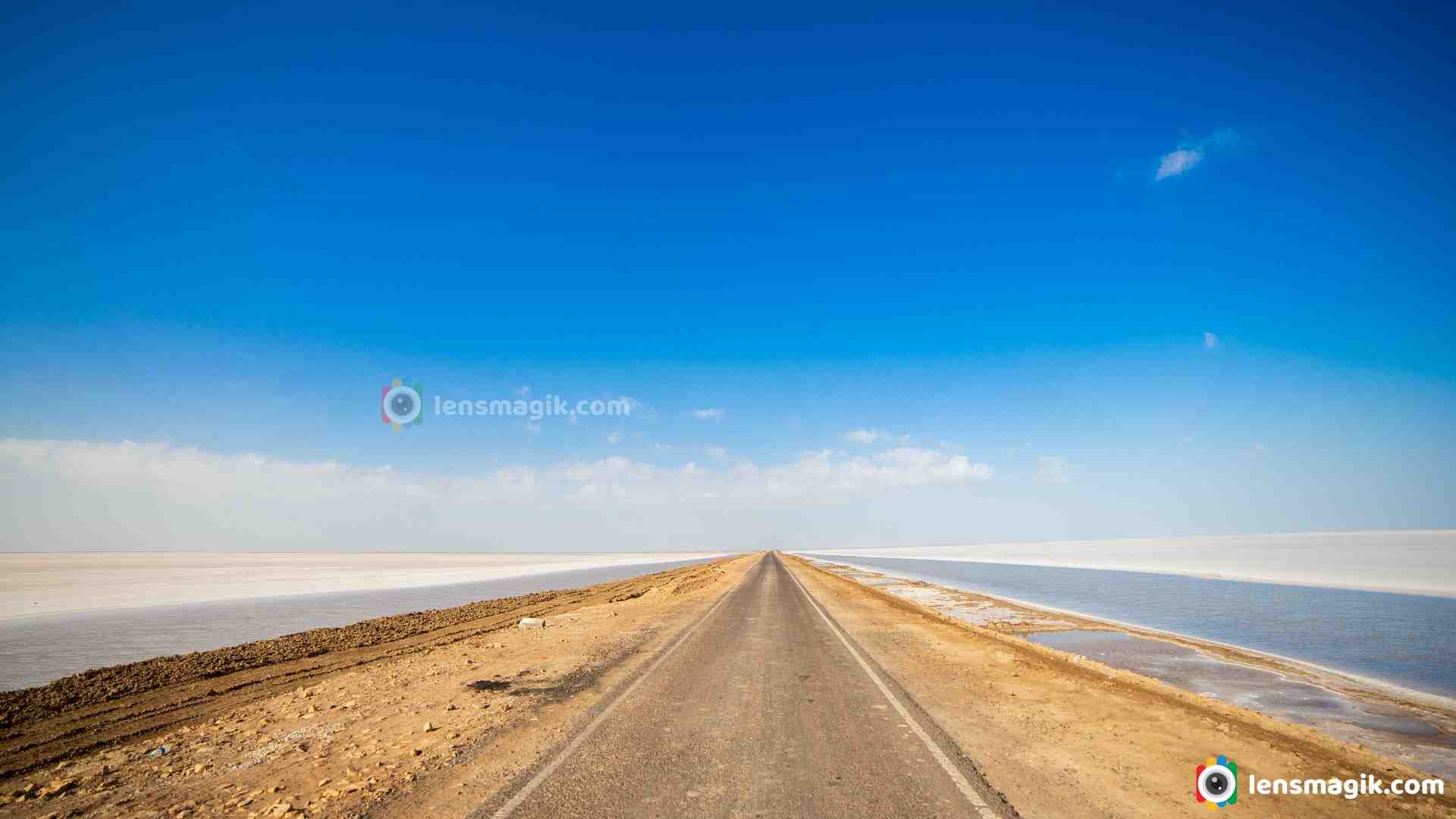
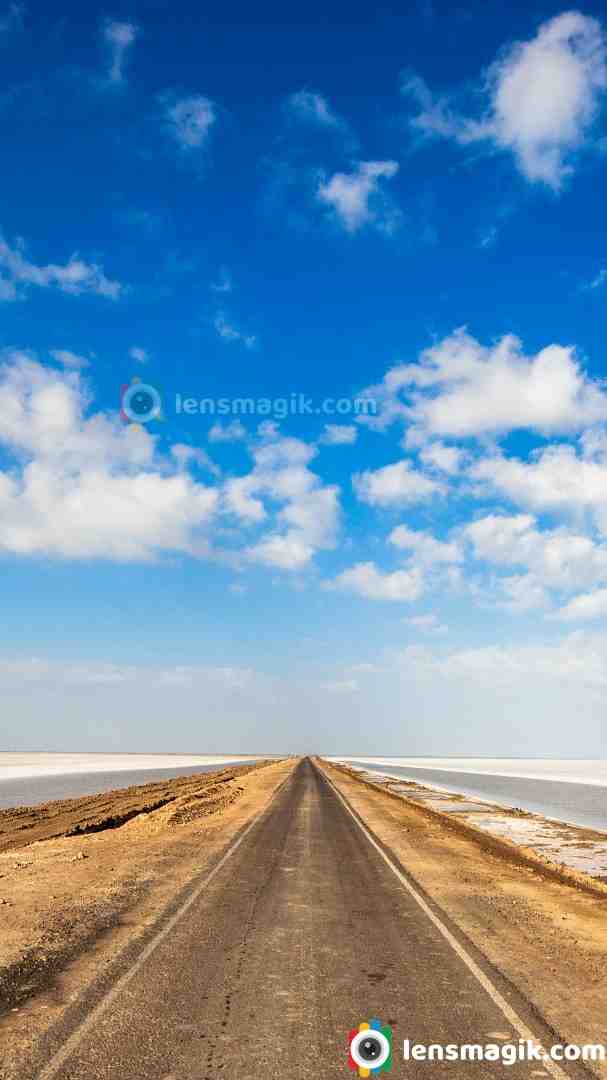
I must suggest to visit Road To Heaven in Kutch while you visit Kutch. Also Visit Dholavira which is one of the largest Harappan Civilization site.
Places to visit near Road To Heaven :
Dholavira, Kalo Dungar, Dhordo, White Desert
Places to Visit near Bhuj : White Desert , Kadiya dhro, Chhatardi, Mandvi beach, Vijay vilas palace, Bhujyo Dungar, Smriti Van, Vande matram memorial
Camera Used : Canon 80D, Canon 6D, DJI Mavic Air2
Read more
Accentor is a small bird of prunellidae family. In India it is generally found in East Sikkim area. It built its nest low in a bush. When i was on a trip to Singalila National Park. I found at sandakphu area. Sandakphu is high altitude place in Singalila National Park located in West Bengal. From here you can see Mt. Kanchenjunga very clear which is highest peak of West Bengal. Lots of Birds here. To visit Singalila Park November to February you can found lots of snow and good landscapes too with snow on Mt Kanchenjunga. Also if you are going for birding you can visit March to May/June Month is the best . It is very cold weather during winter November to February at Singalila National park.
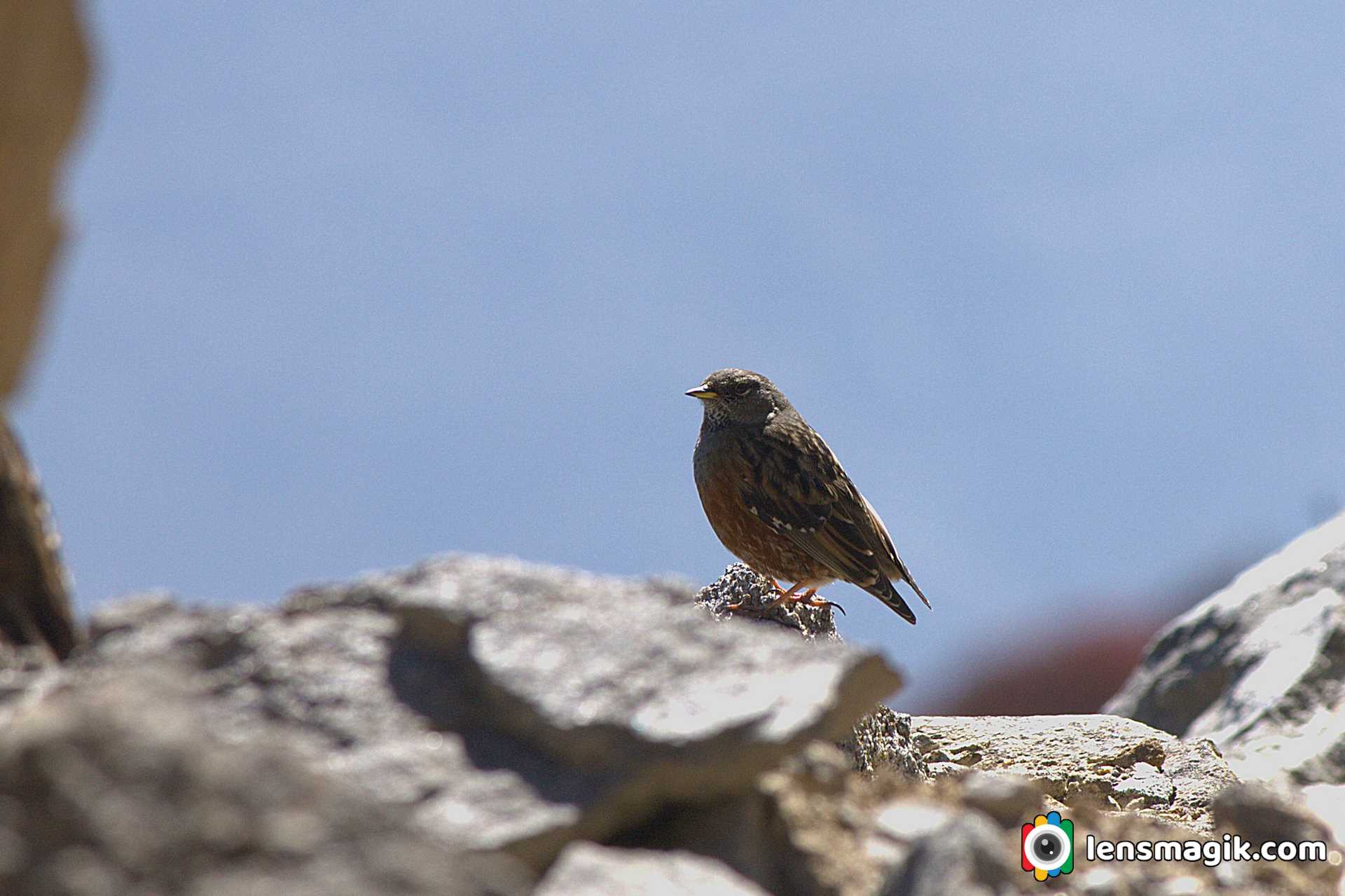
About Alpine Accentor Bird :
- Alpine Accentor bird is robin size bird. Length of bird is around 15 -17 cm.
- Bird just like similar to house sparrow in color with brown back streaked.
- Adult Alpine Accentor have red brown spotting on underparts
- Also adult have grey head too.
- In Asia Accentor found at 2000 m above height. Specially at Himalayas.
- It build nest in bush.
- It laying 3-4 plain (not spotted) eggs of sky blue color.
Singalila National Park :
Singalila national park is located in West Bengal. There are lots of birds in this sanctuary. Also its good for trekking at Sandakphu. From here you can see Mt. Kanchenjunga easily and very closely. Also a beautiful Himalayan Mountain range with snow. Amazing weather very cold in winter and moderate in summer. Summer season is the best for birding at sandakphu.
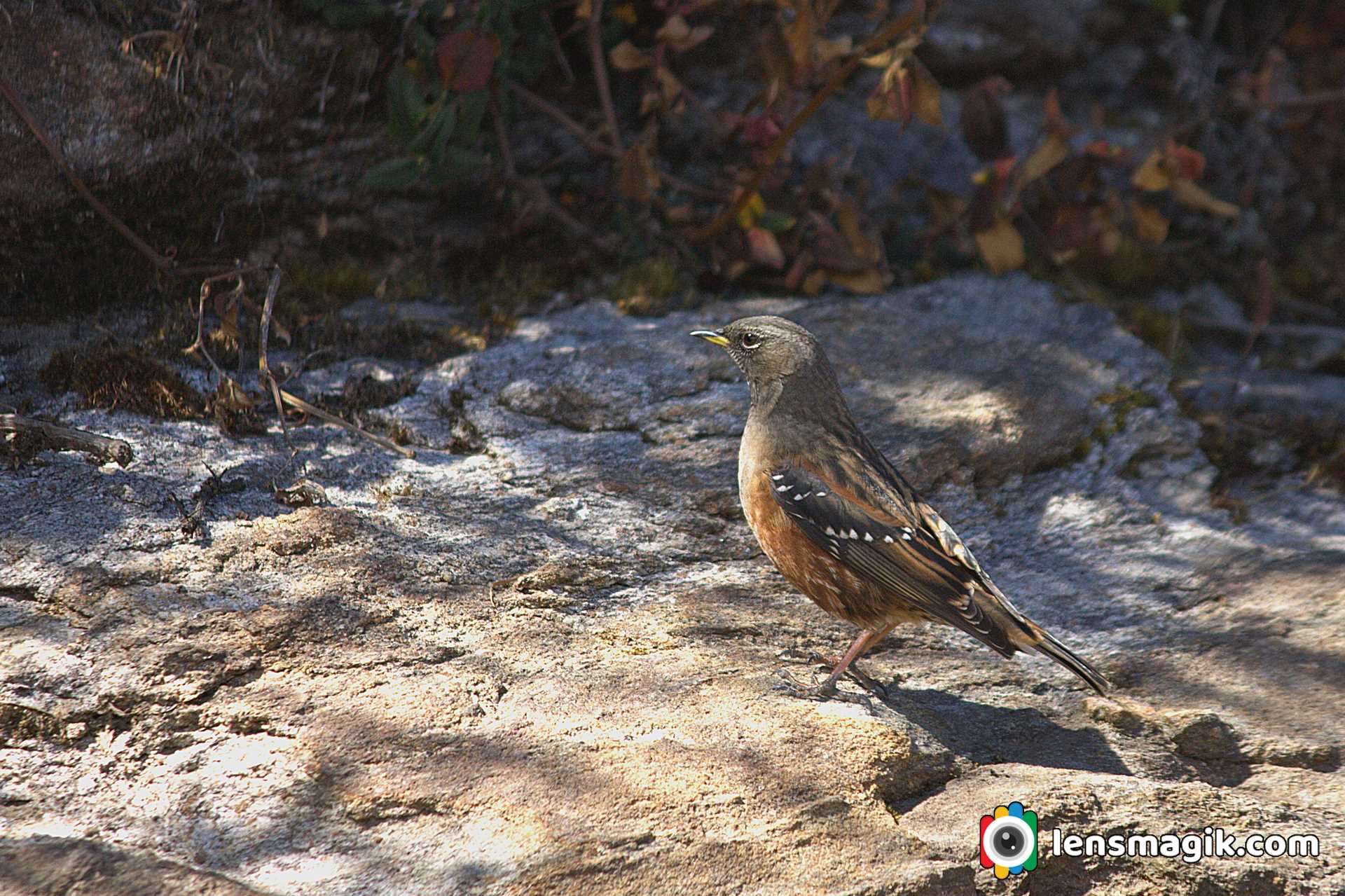
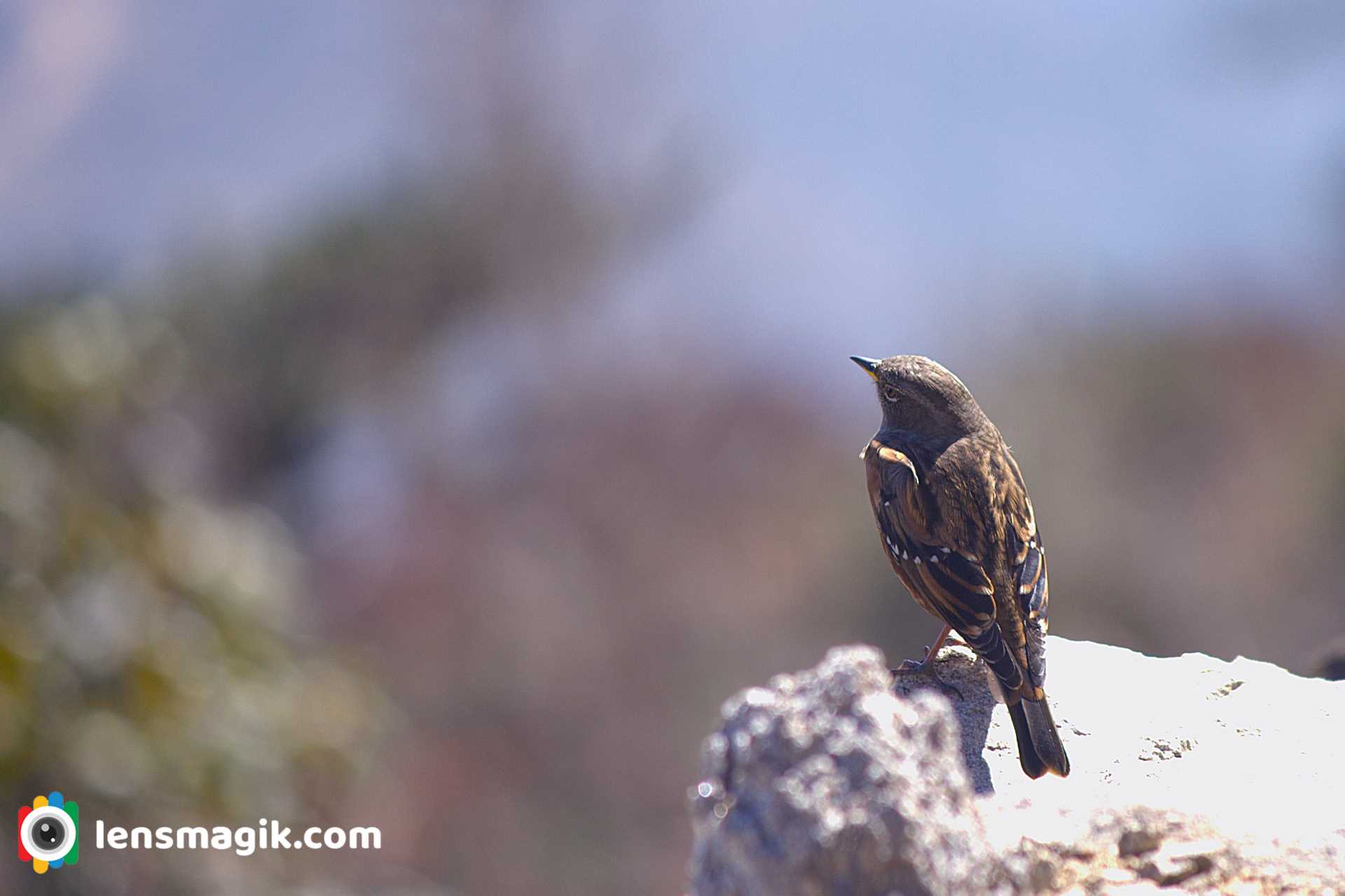

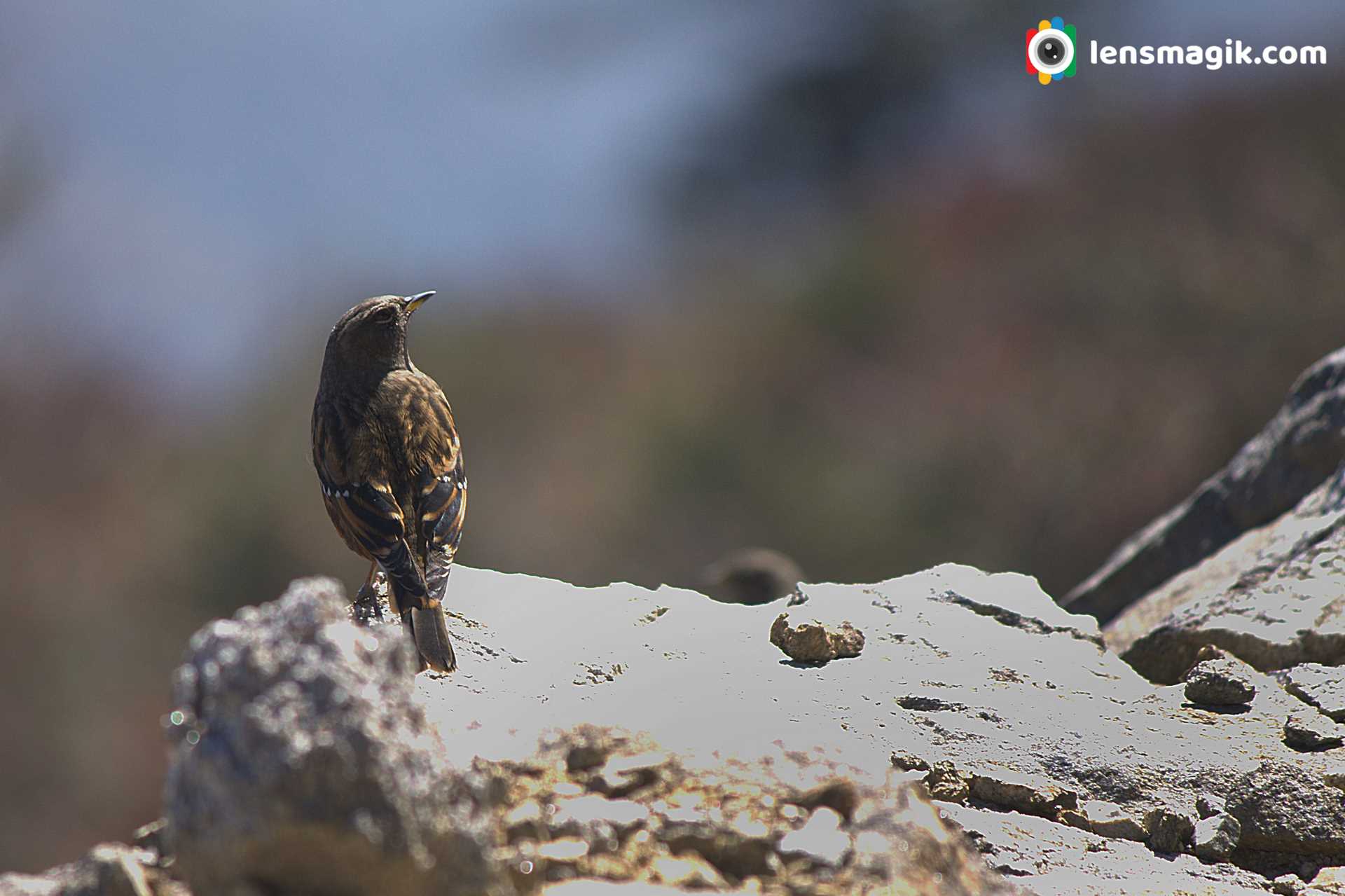
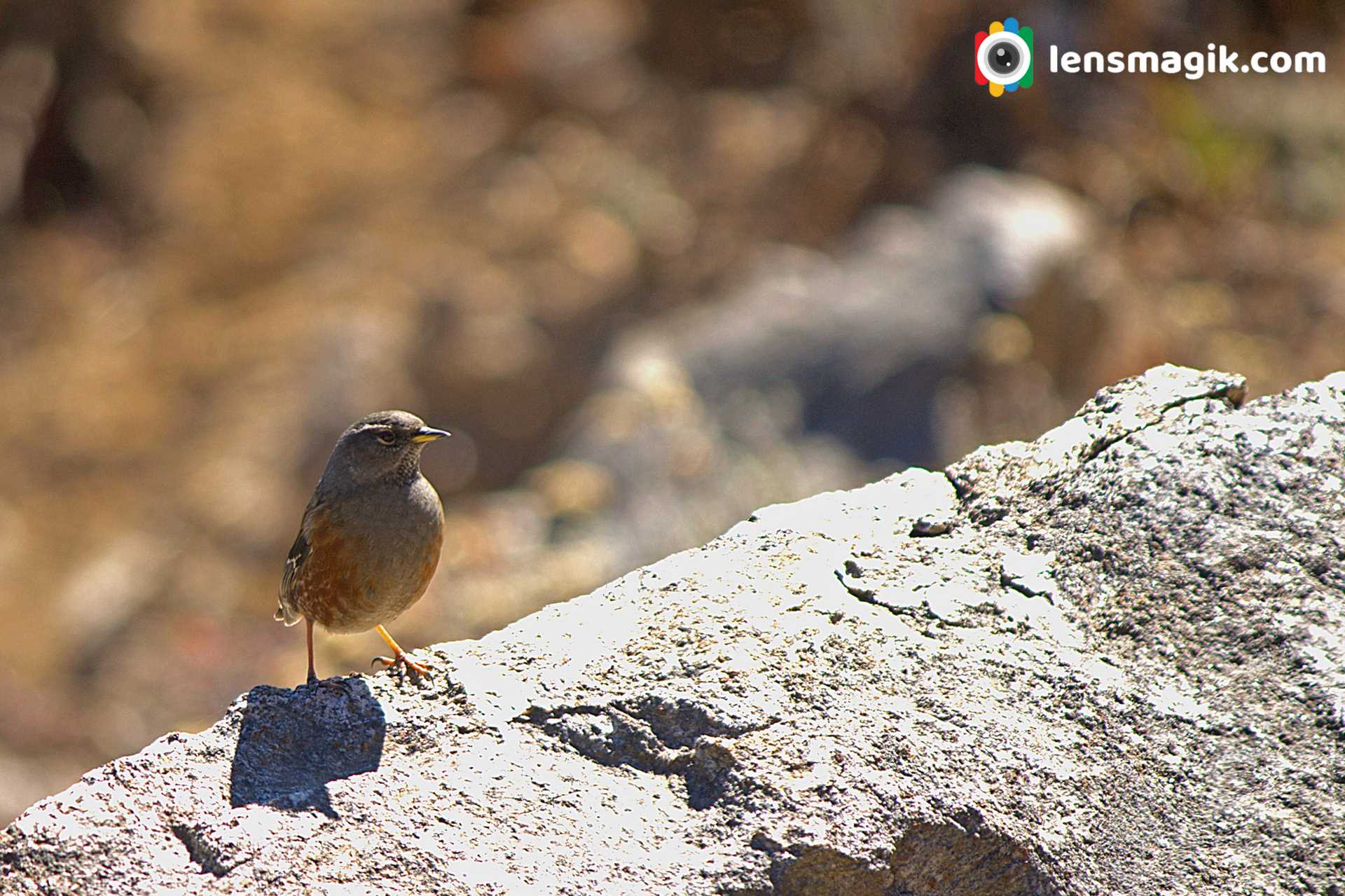
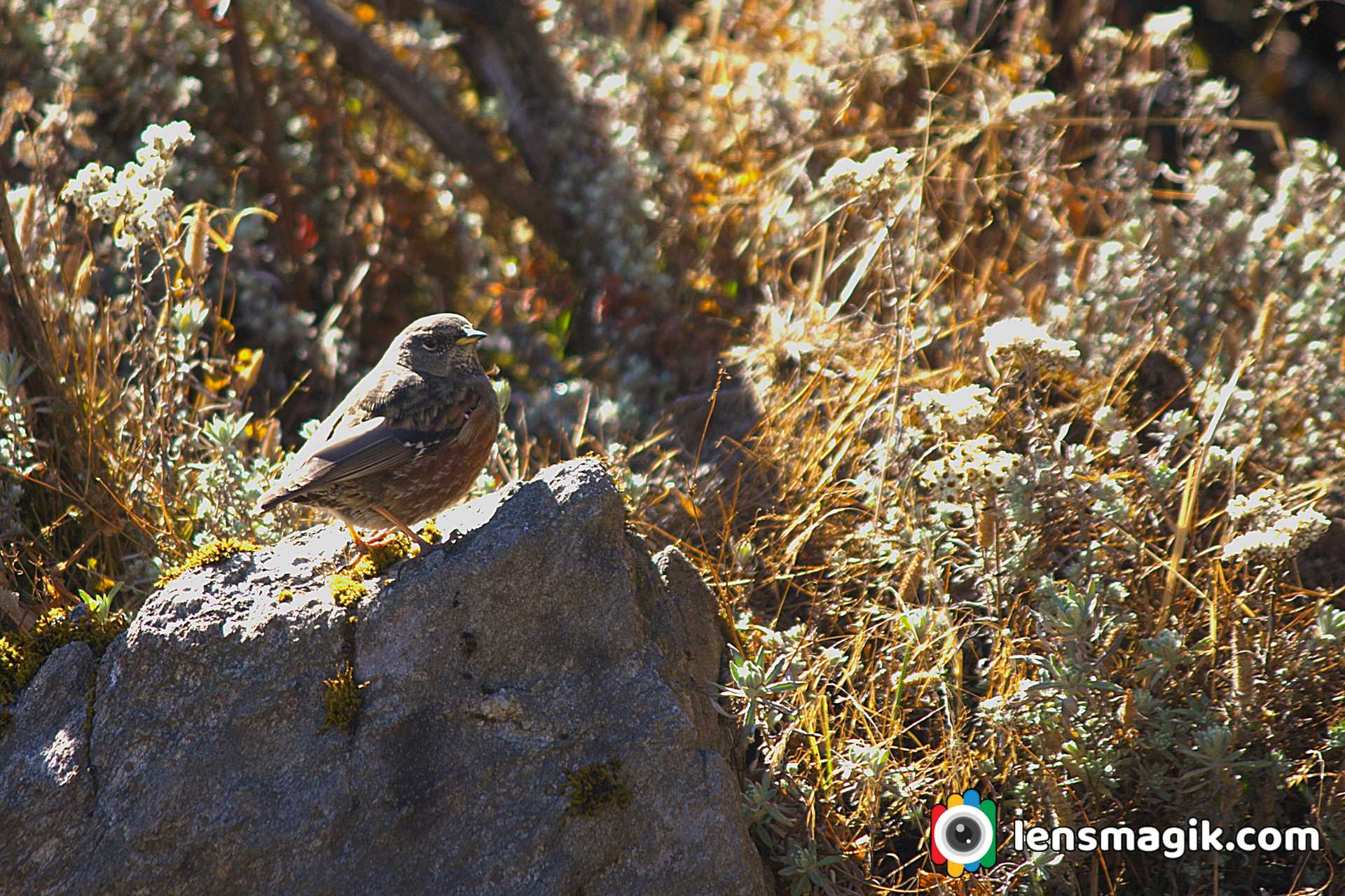
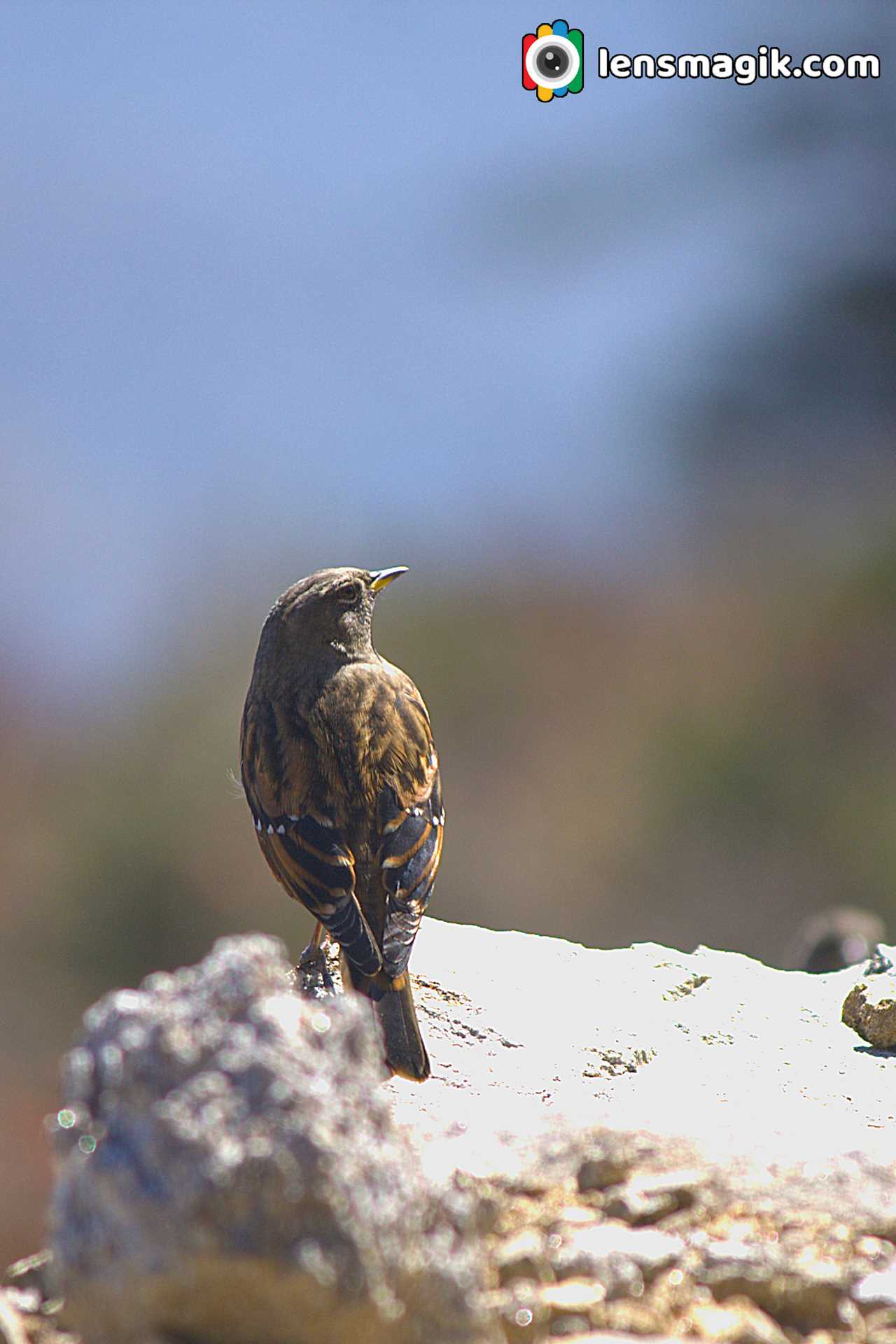
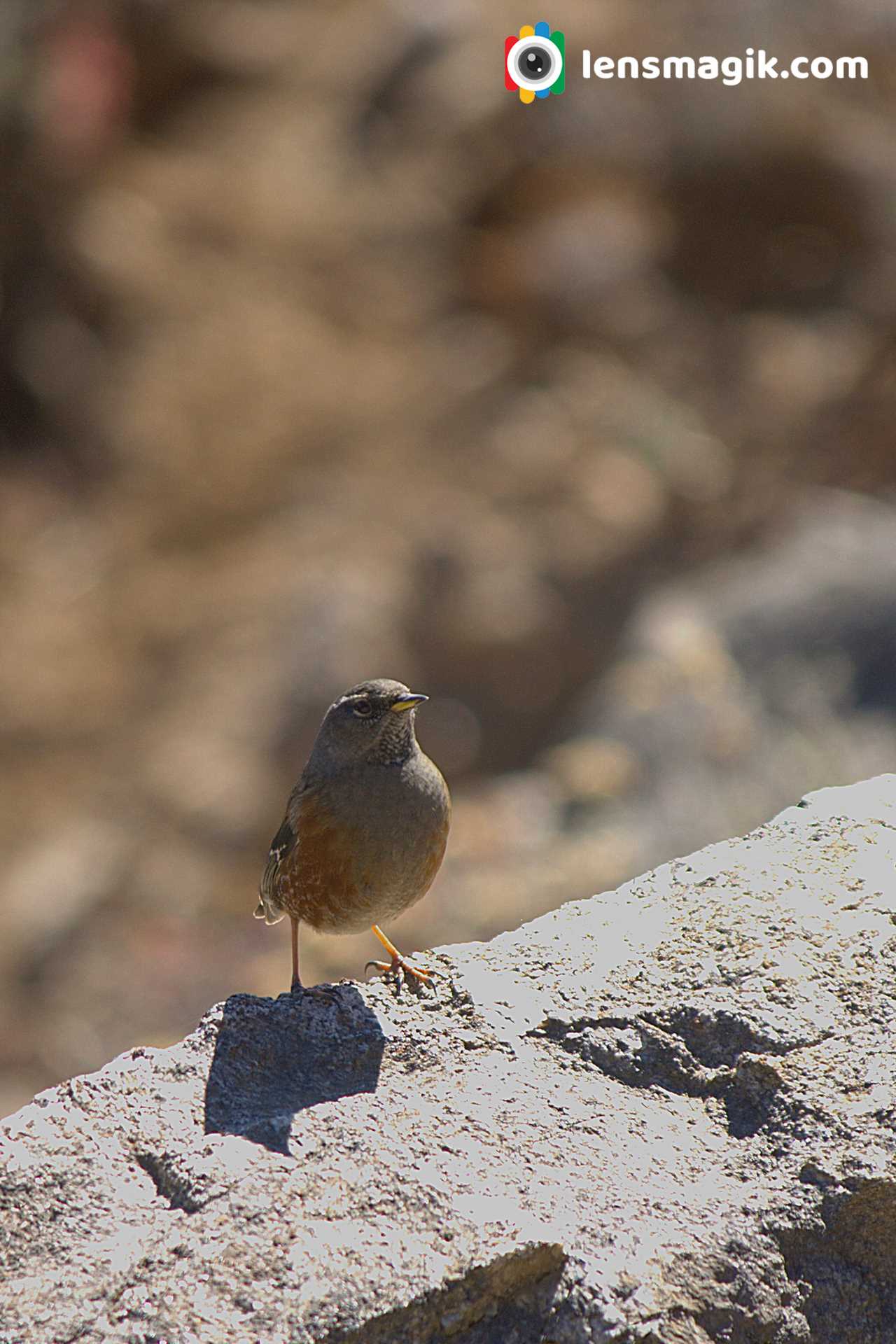
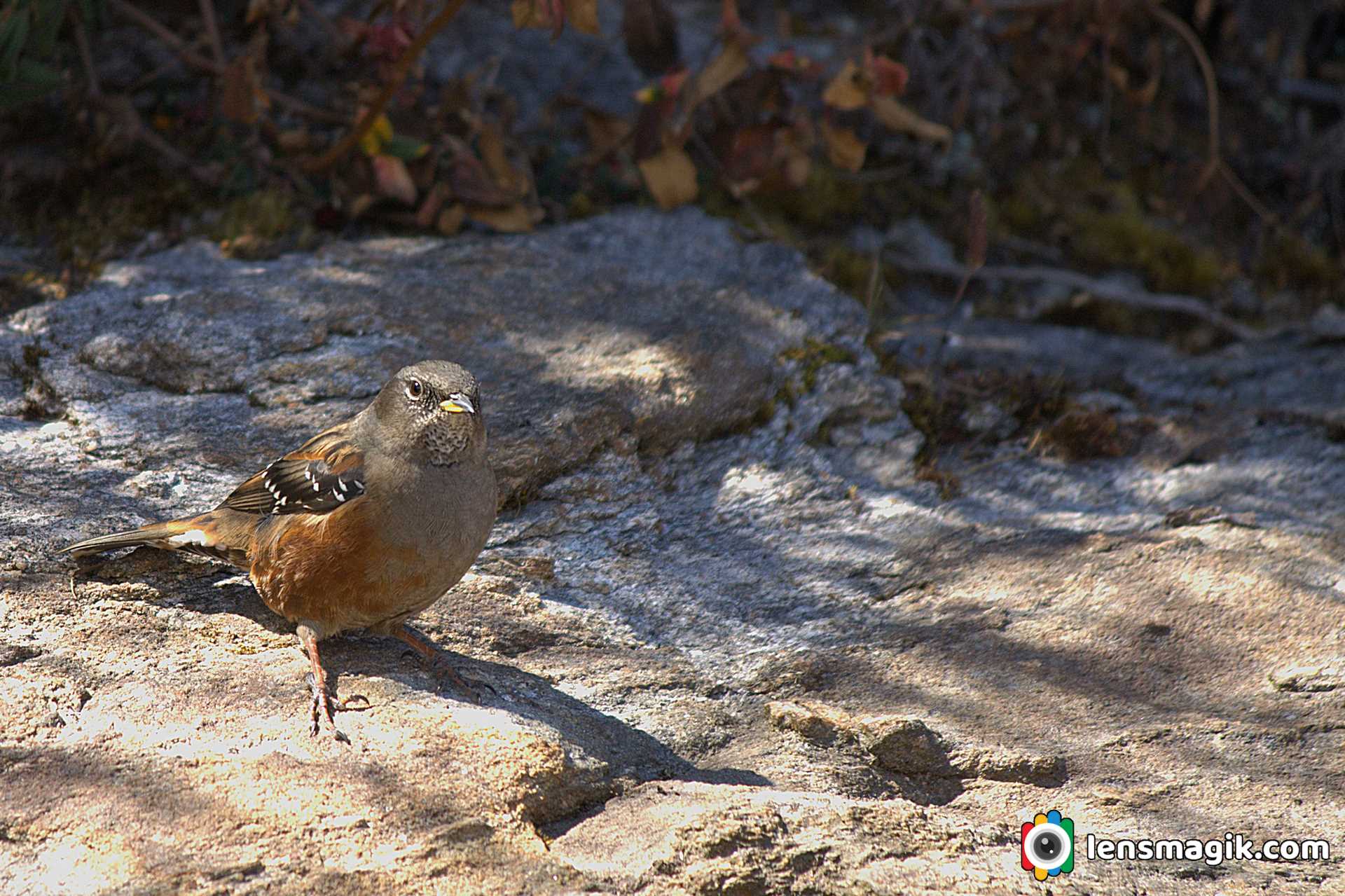
Alpine Accentor bird Binominal Name is Prunella Collaris . Total 9 subspices are recognised of Alpine Accentor bird.
Gear used : Canon 1000 D, Canon 55-250 mm Lens.
Road To Heaven is named to the road from Khavda to Dholavira in Kutch Gujarat. The road is so wonderful and scenery so it known as Road to Heaven . Khavda to Dholavira distance is around 58km but from Khavda there is a single line narrow road passes through small villages around 15-20 km approx. The main road starts after it and it is around 30-35 km approx. strait to Dholavira. Road is under constriction but almost 70-80% work done. The road heading to the city of Harappan Civilization Dholavira which is one of the largest site of Harappan Civilization and Indus valley Civilization.

Kutch is a largest district of Gujarat and also of India. Main City or Headquarter of Kutch District is Bhuj. Kutch is famous for White Desert or White Rann. In Every winter season from December to February celebrate “ Rann Utsav “ to attract foreigners and also locals. Tent City made in white desert to stay and also cultural programs arranged in it. The main Rann Utsav held in Dhordo of Kutch.

After visit White desert people also visit Dholavira which is nearest destination from Dhordo and also Kalo Dungar in between. From Dhordo you will have to go Khavda first and then from Khavda to Dholavira which is connected through “ Road To Heaven “. Dholavira is located at Khadir Bet. Khadir bet is separated because after monsoon the water filled outer side of bet. So the Road To Heaven is the way to connect Khadir bet to main city Bhuj.
About Road To Heaven Dholavira / Road to Heaven in Kutch :
- · It connected from Khavda to Dholavira.
- · Road to heaven distance around 30-35 km.
- · After monsoon the rain water on the both side of the road. You can see beautiful Greater Flamingo birds in between. Water level is low but muddy.
- · After winter in January –February the water on both side of the road is evaporated and turn into salt. Not all water but some areas during the road.
- · Water on the both side of the road or Salt/ white layer on both side of the road make the beauty of the road and that’s why it name as “ Road To Heaven “
- · When you are on the road there is hardly some traffic you face the open road with both side water or salt at morning or evening make the scenery like a Heaven.



I must suggest to visit Road To Heaven in Kutch while you visit Kutch. Also Visit Dholavira which is one of the largest Harappan Civilization site.
Places to visit near Road To Heaven :
Dholavira, Kalo Dungar, Dhordo, White Desert
Places to Visit near Bhuj : White Desert , Kadiya dhro, Chhatardi, Mandvi beach, Vijay vilas palace, Bhujyo Dungar, Smriti Van, Vande matram memorial
Camera Used : Canon 80D, Canon 6D, DJI Mavic Air2
It is the largest species of Flamingo bird family and also a most widespread species of flamingo family.It is found in India ,south east , middle east and Africa. It is migratory bird. They also breed in India. In Gujarat they breed in Rann Of Kutch , Little Rann of Kutch also found in Thol Bird Sanctuary. I often visit Thol sanctuary so got good shots of them. Best time for shoot them is may-Jun at Thol bird sanctuary bcz of water level is too low . It is been recorded that some flamingo birds are resident in Gujarat at many places like LRK, Khijadia sanctuary, Nalsarovar and Thol Sanctuary. They also breed here and stay for all seasons. So you can find greater flamingo birds in all seasons in Gujarat at many places.
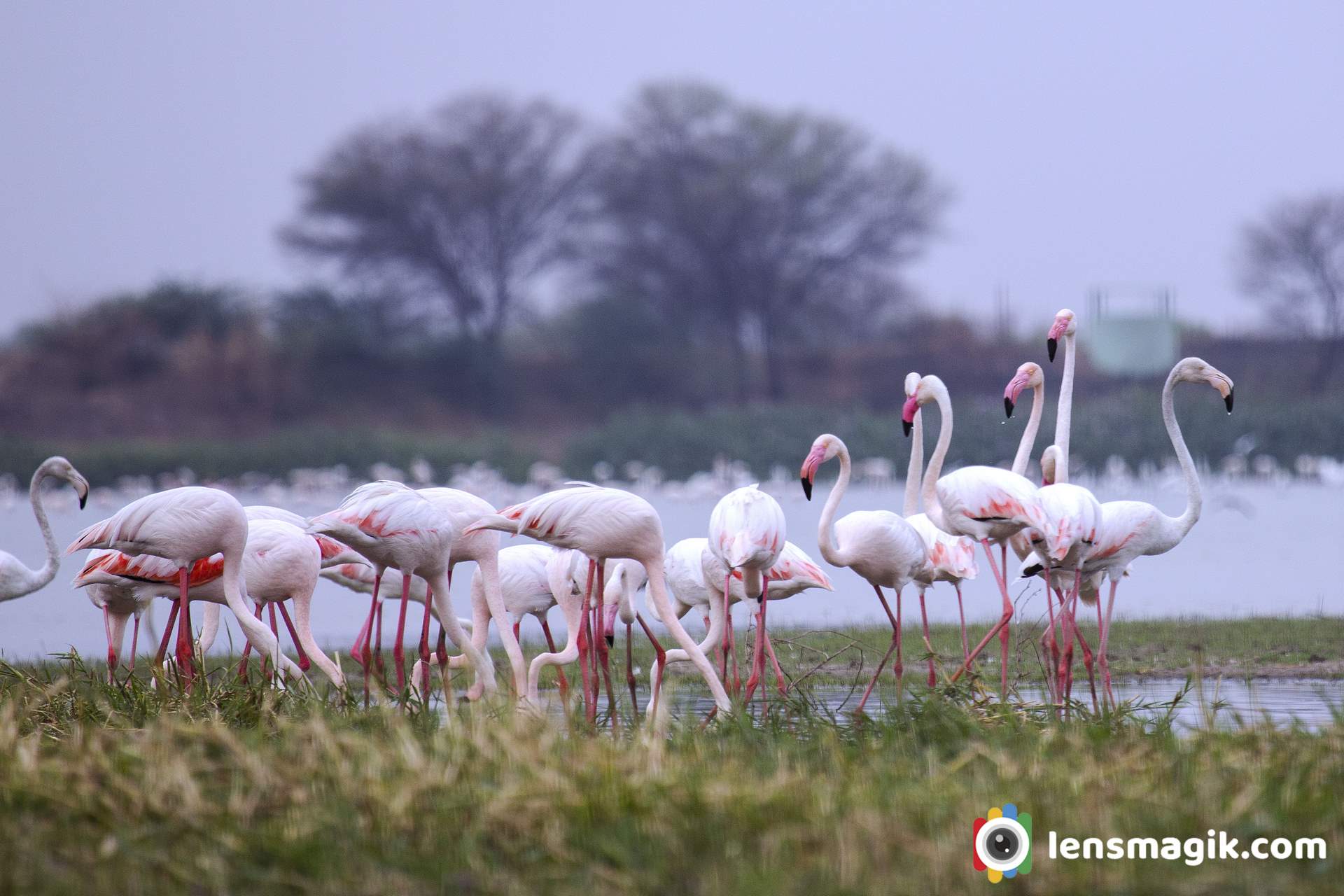
Flamingo bird facts and description :
- Greater flamingo bird is the largest living spices of flamingo.
- Greater flamingo has no subspices.
- Flamingo color most of pinkish white in plumage. Wings are red and feathers are black in end.
- Greater Flamingo bird call is like honking.
- The average lifespan of flamingo bird is 30-40 years.
- Main Difference between Greater flamingo and lesser flamingo is height . Lesser flamingo is shorter than greater flamingo. Also Greater flamingo has pale pink bill and black tip. In other case lesser flamingo has dark crimson bill. Lesser flamingo is also more red in color than greater flamingos.
Greater Flamingo birds In Thol Lake : Thol sanctuary is often i visit. Flamingo birds are stay here all seasons. I got good numbers of Greater flamingo and lesser flamingo bird images in a group when i visit Thol. This is my best time with flamingos. Also i got some beautiful pictures of flamingo birds with group and also in duo with some masti. Flamingos looks very good in frame bcz of their color. Thol lake is good place for birders because more than 150 birds spices found here. Also some mammals like Blue bull and black buck also found here. Lots of water birds and tree birds found here. Also sanctuary is not so big so you can find all birds in around 6 sqkm area. Best time to visit thol lake is November to March. All migratory birds are visit in winter so that is best time. Early morning is best for birders.
Timing And Fees of Thol Sanctuary :
Thol Sanctuary open at 6 AM in morning and close at around 5 PM
Fees of Thol Sanctuary is 50 INR per person and camera fees are 200 INR. Car fees are 500 INR.
Weekend fees may change that actually i don't know about it.
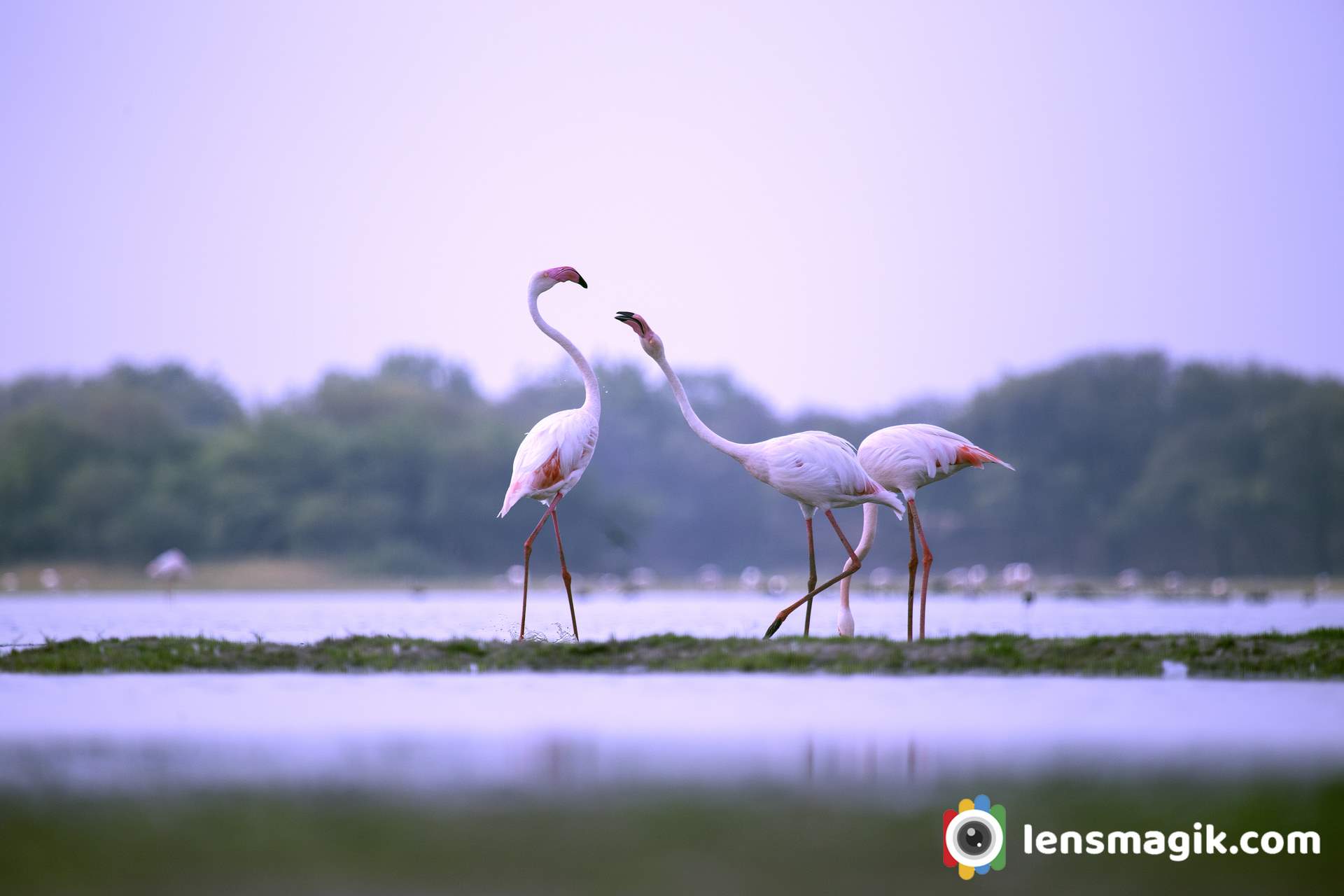
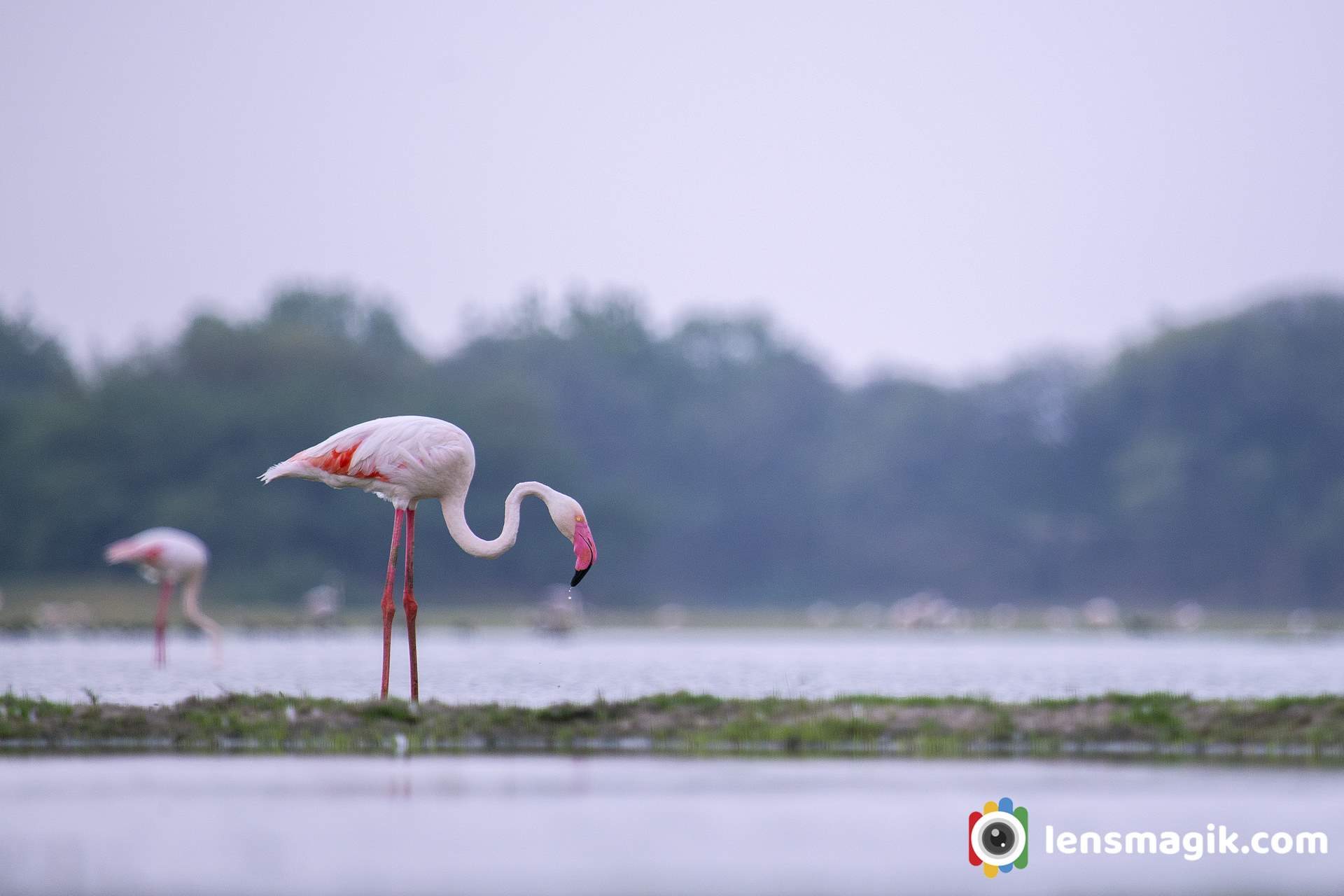
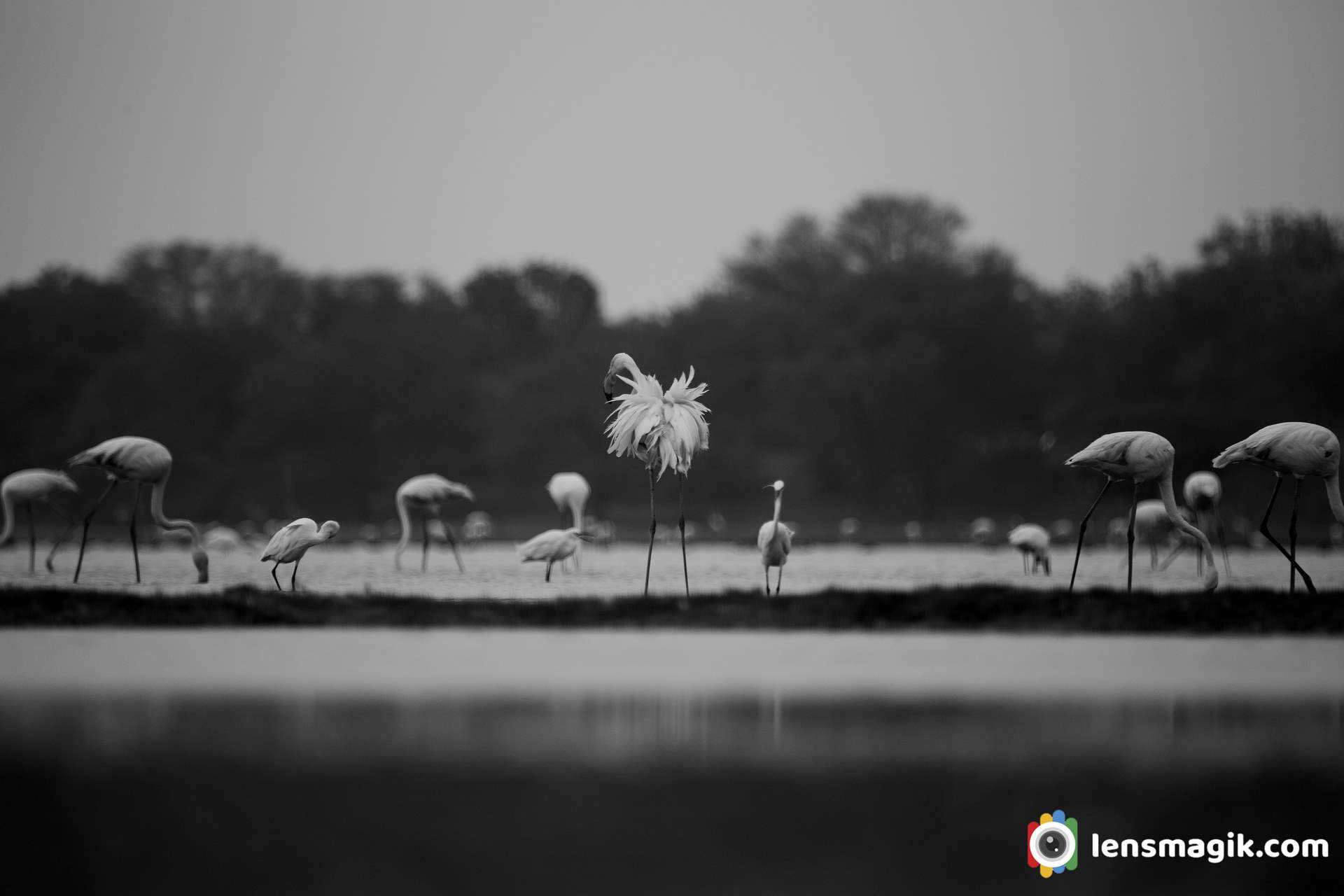
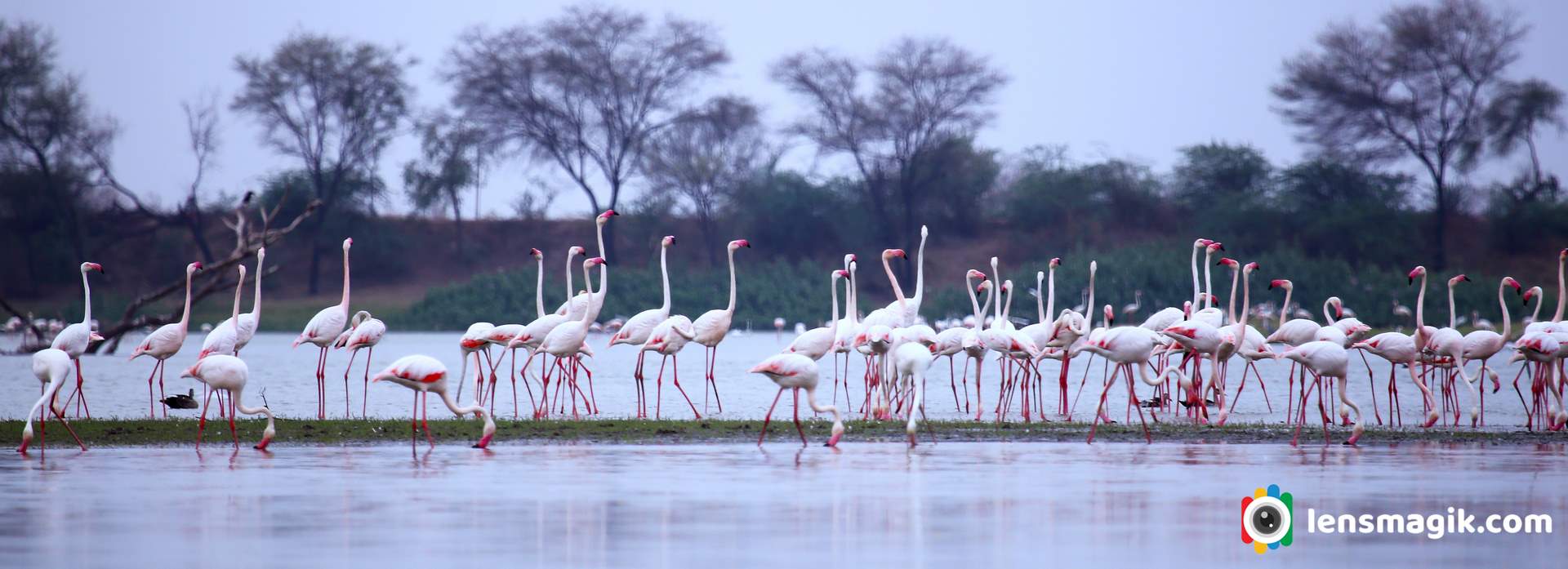
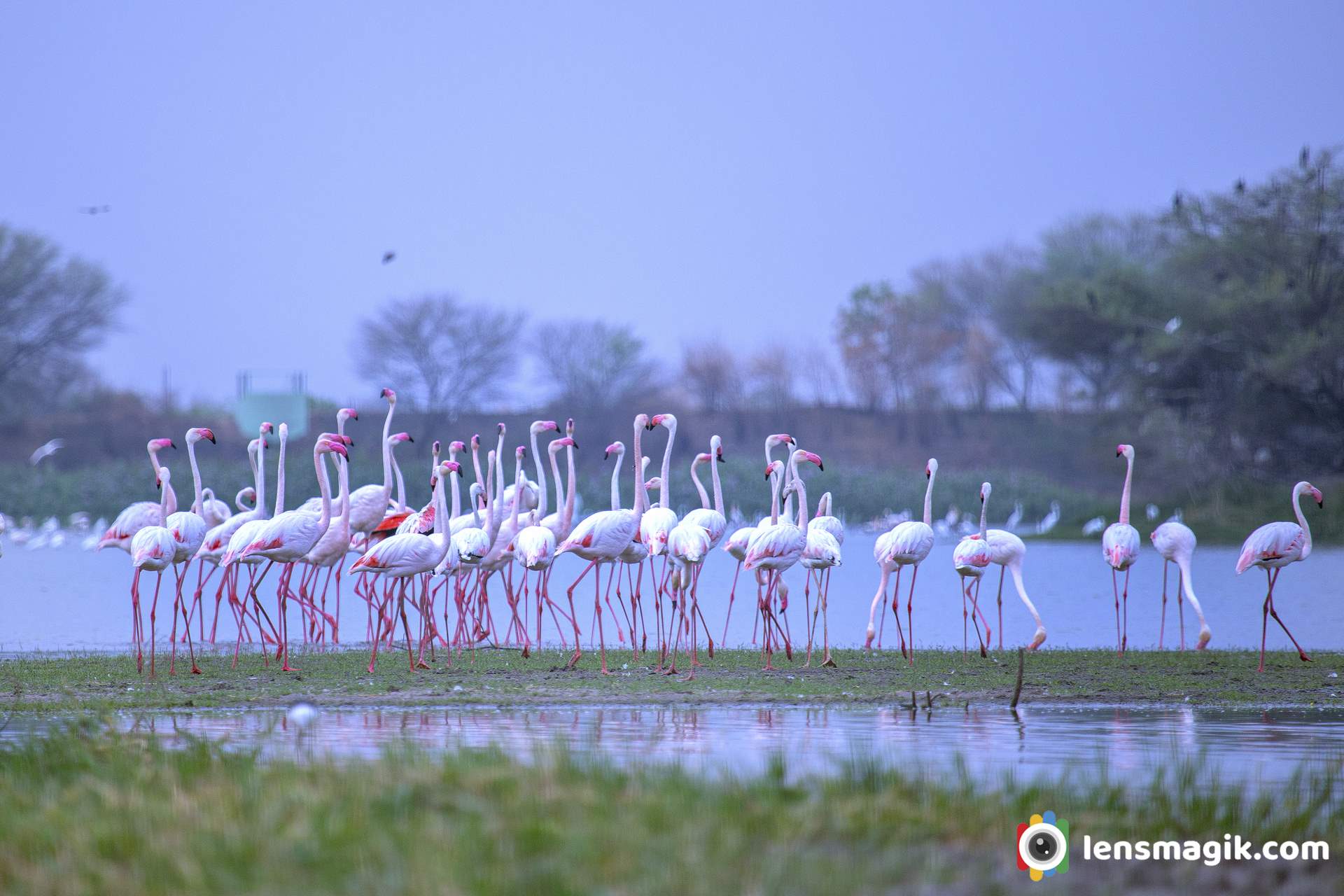
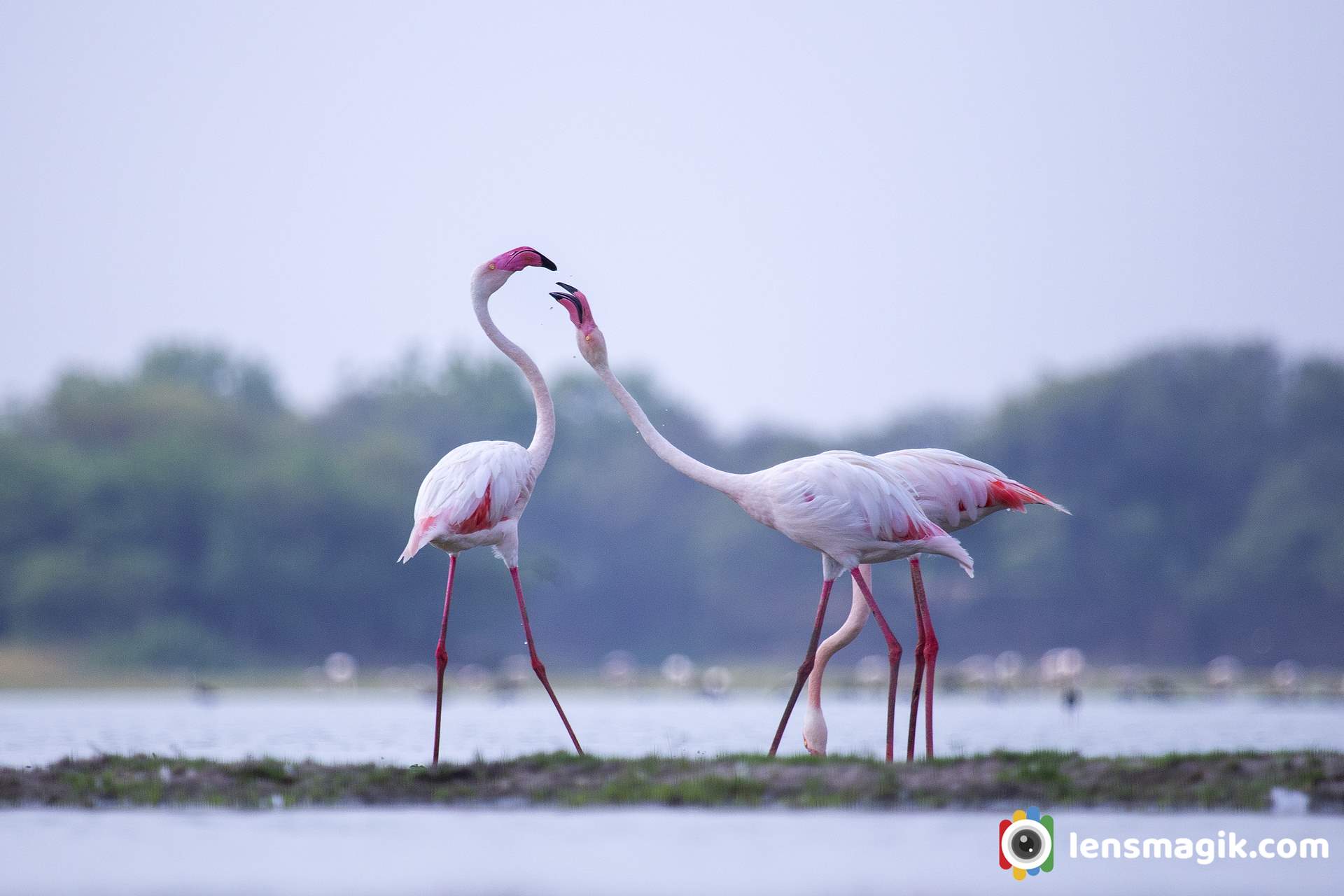

Two flamingos with little egret in between of them with down head all. The images of flamingo bird making a good frame. Because of its color flamingo birds images are very attractive and also their grouping make a perfect frame of flamingo bird picture.
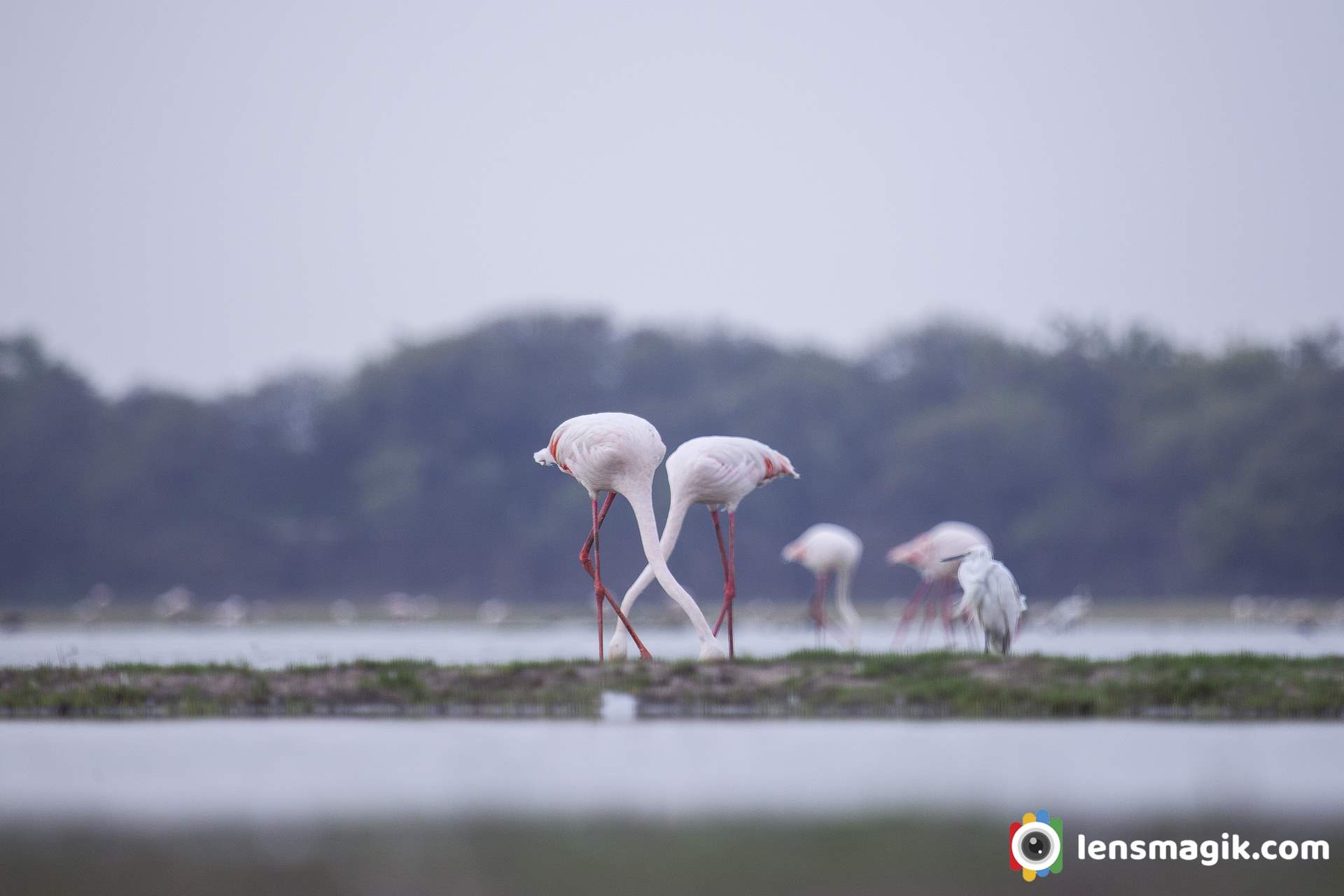
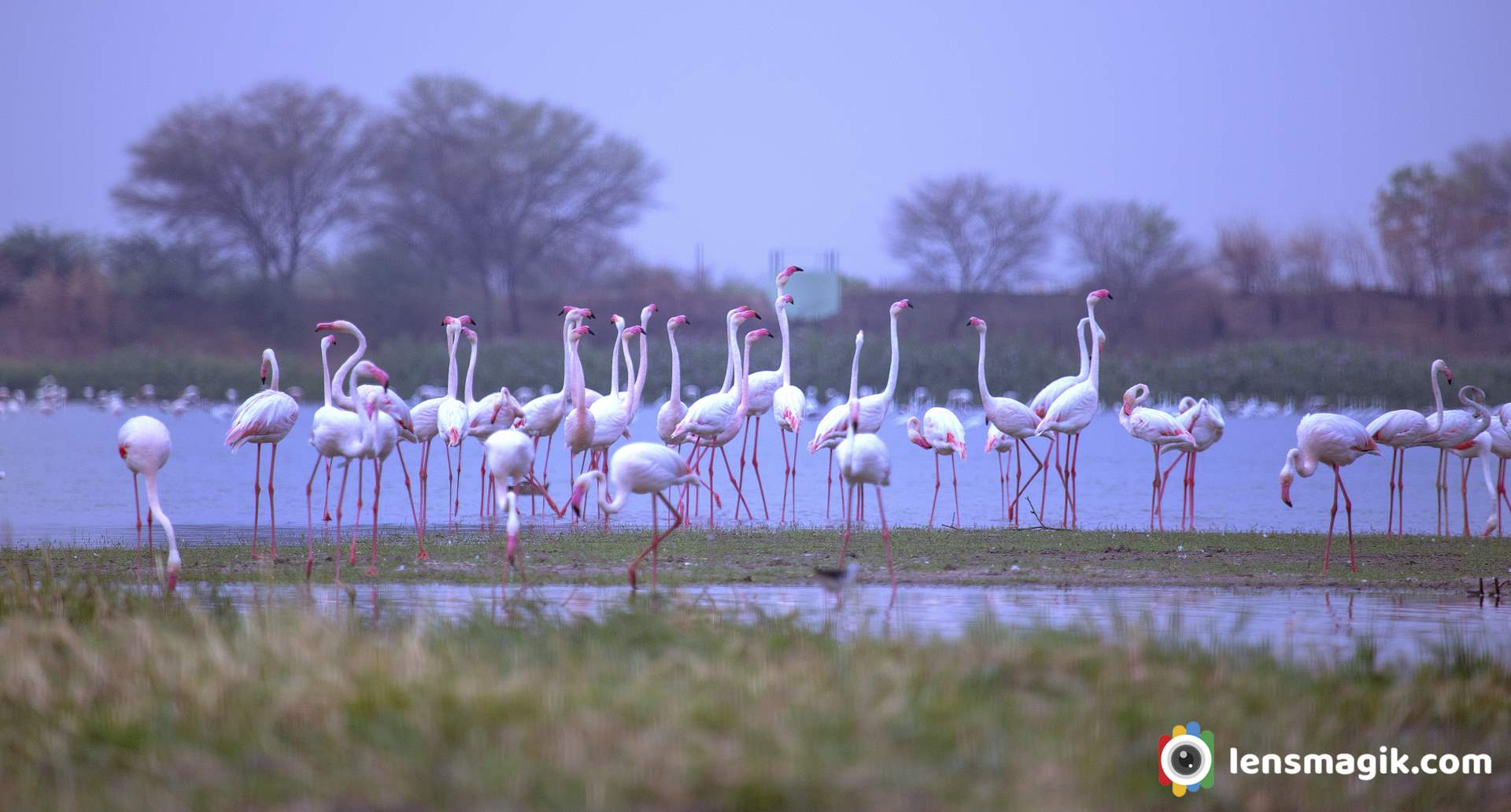
A morning pared time for flamingo birds. A beautiful Greater flamingo birds are in a raw make image nice and show their unity.
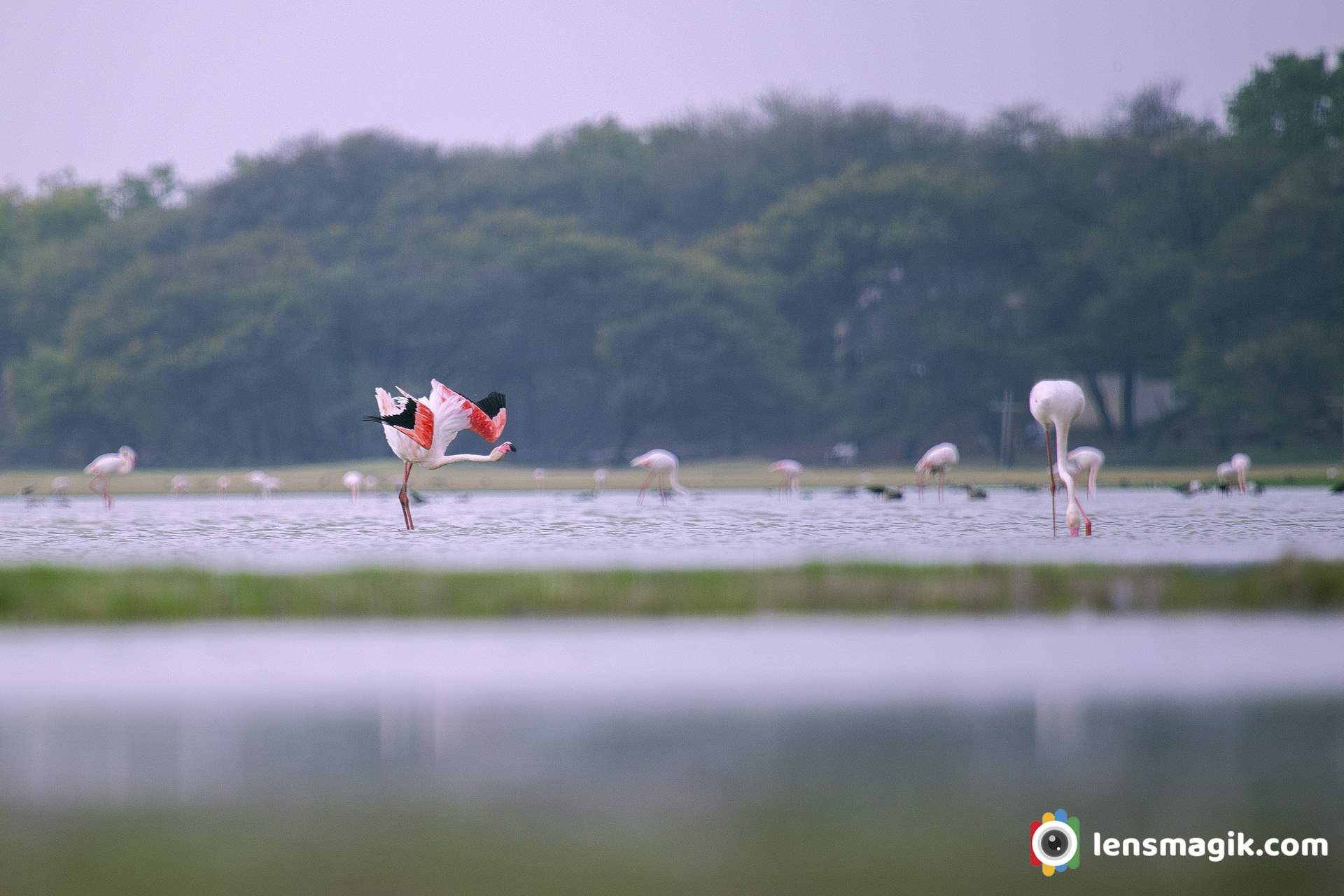
Perfact wingspan of Flamingo bird looks great. Pink Wings make image more attractive.
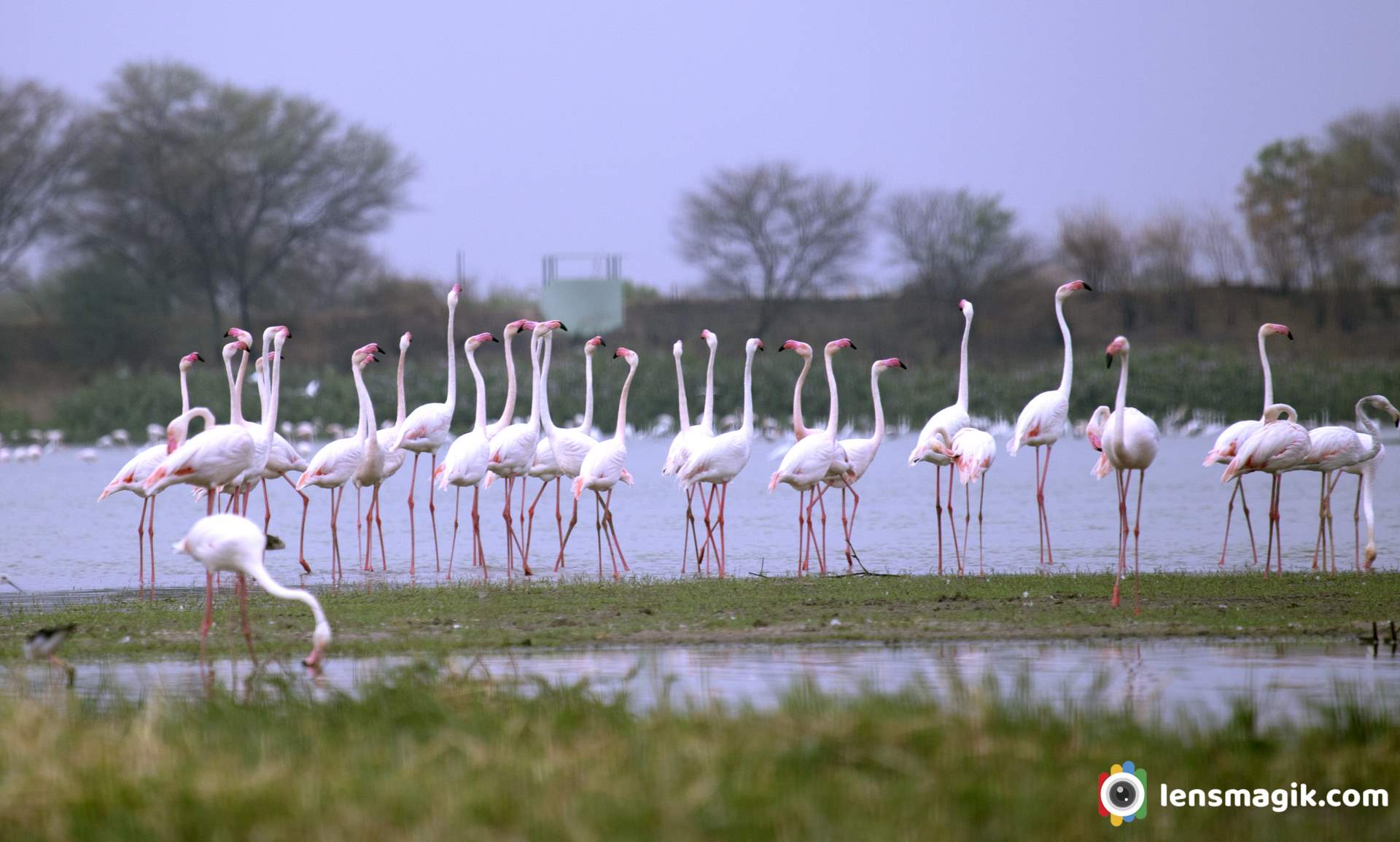
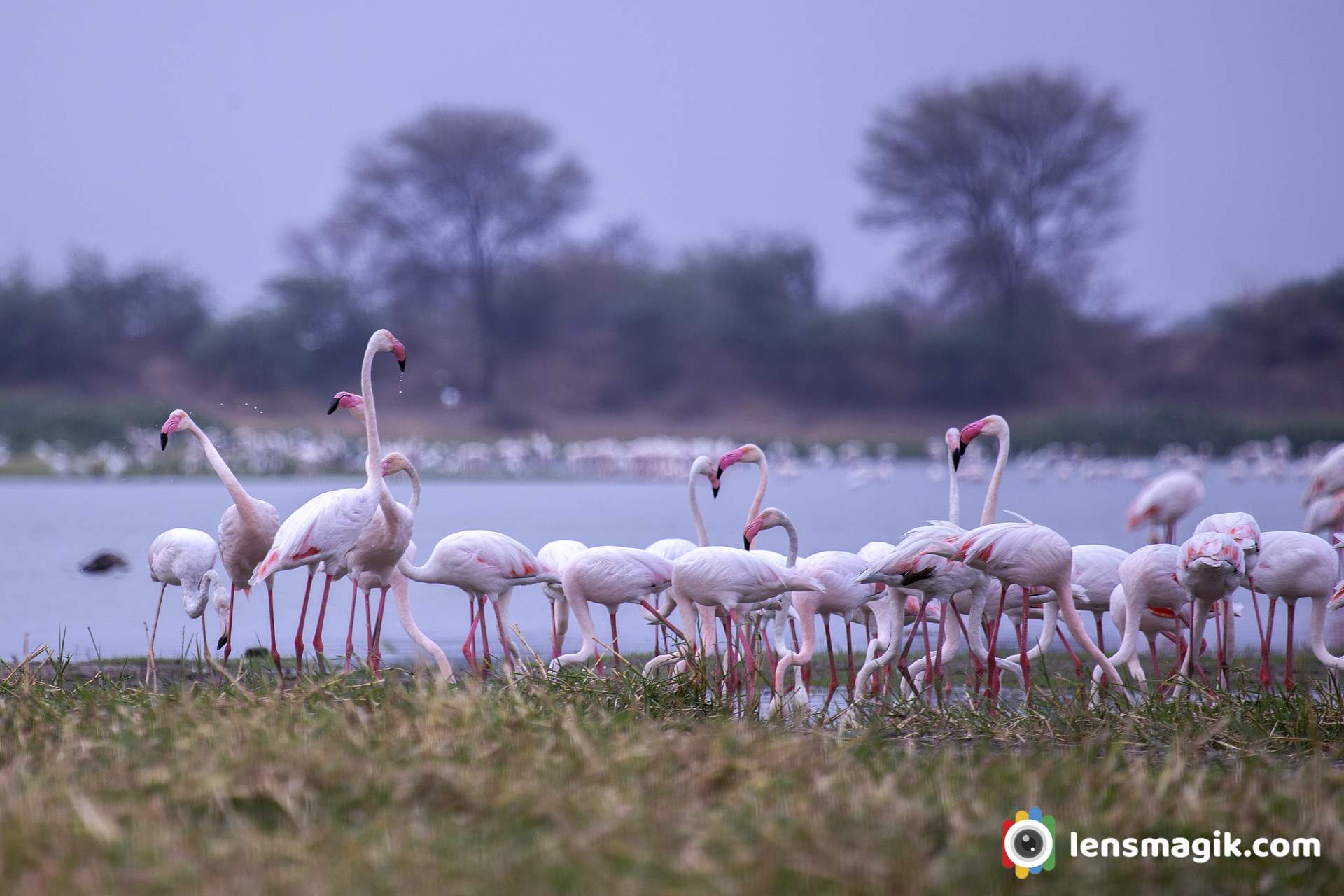
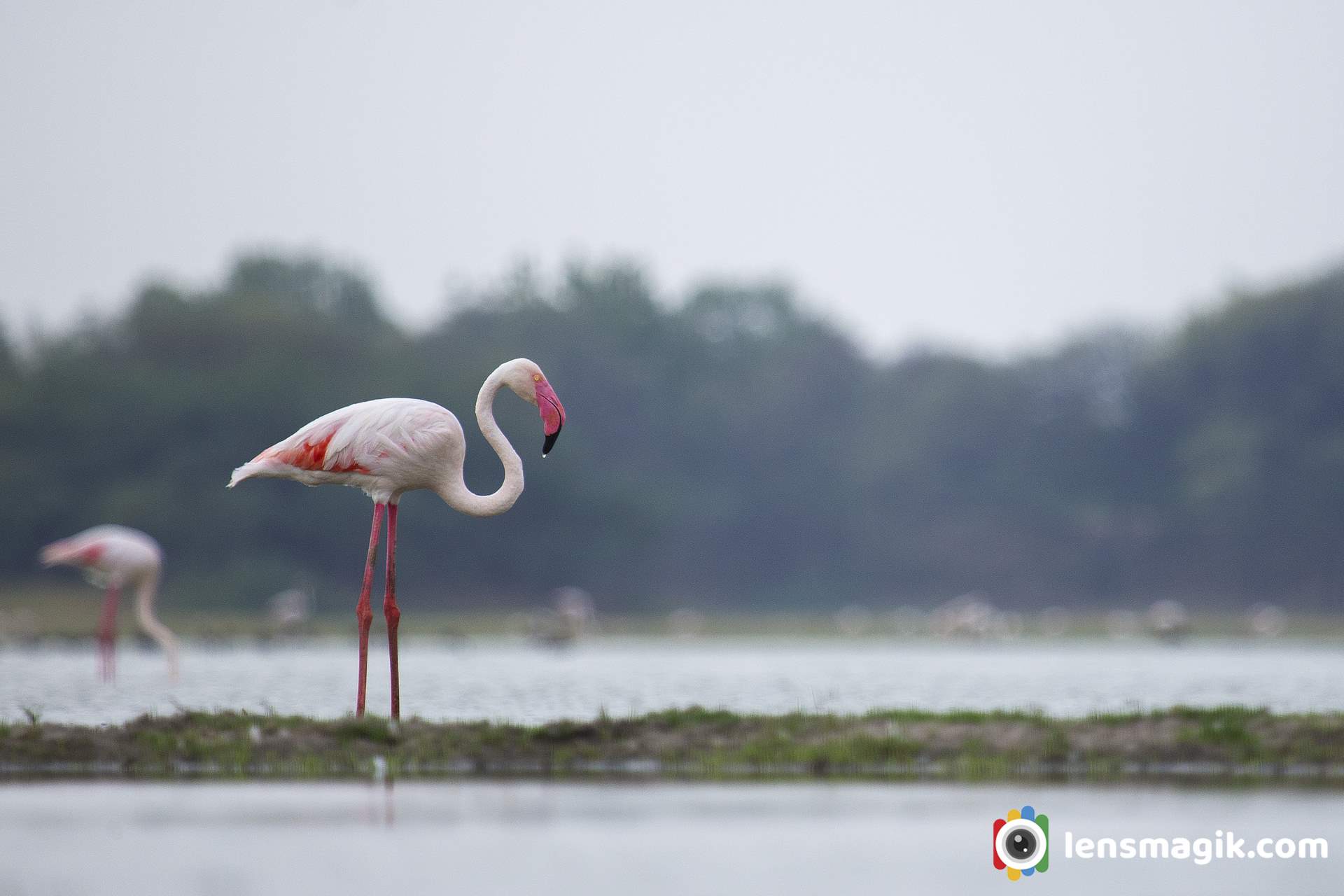
Solo Greater flamingo bird
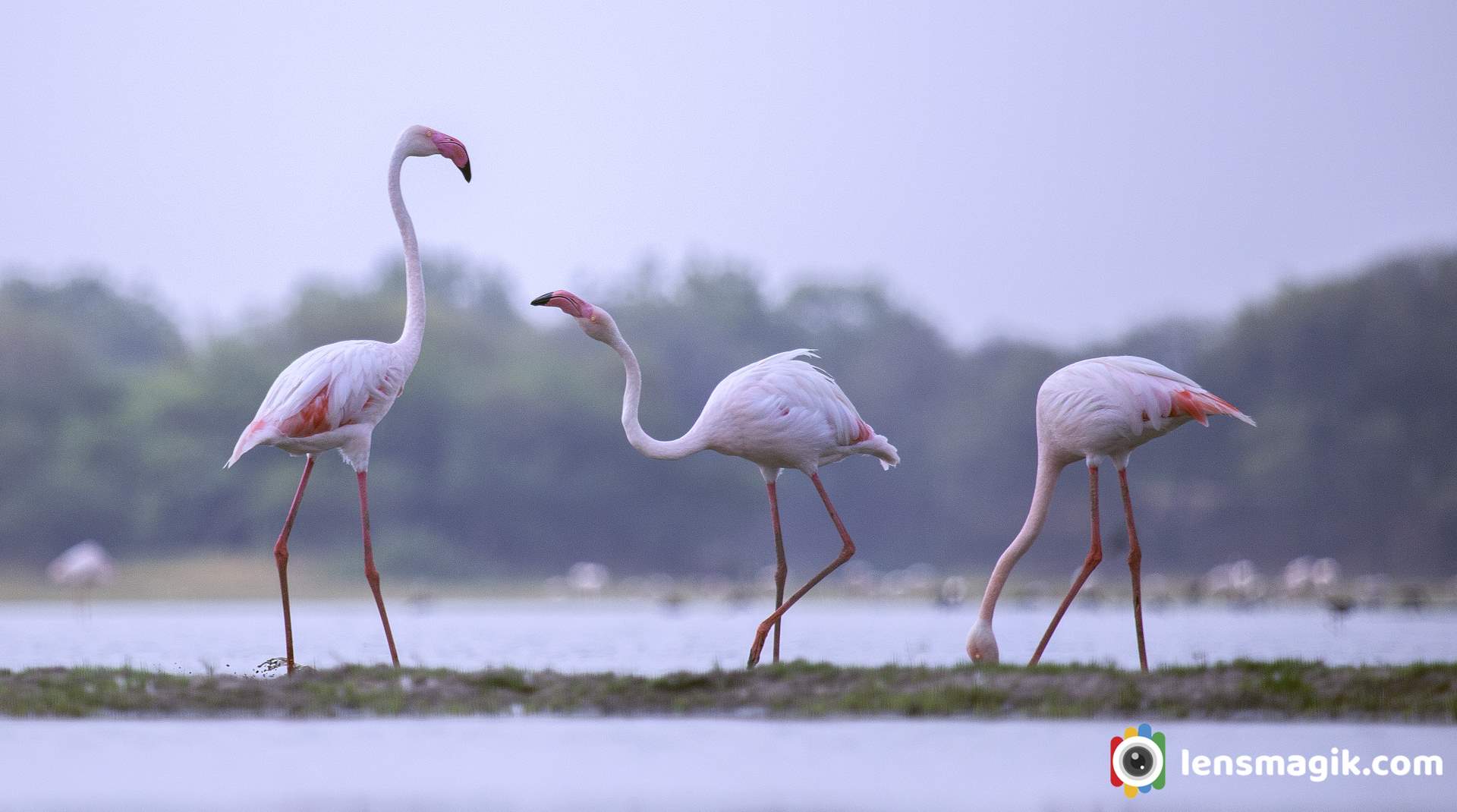
Some masti time for two flamingo birds .
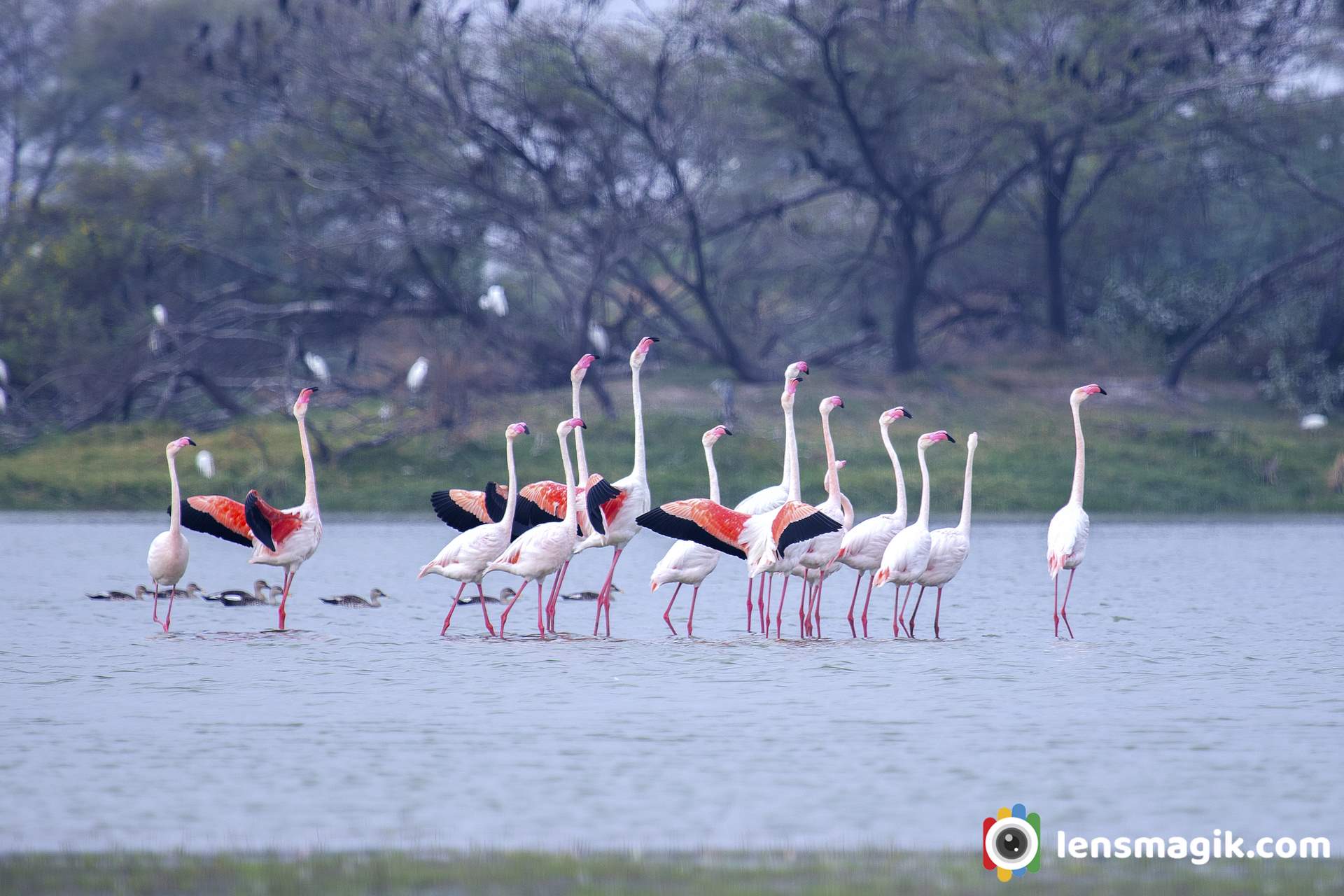
Above image shows the discipline of Flamingo Bird and looks like a morning pared they are doing .
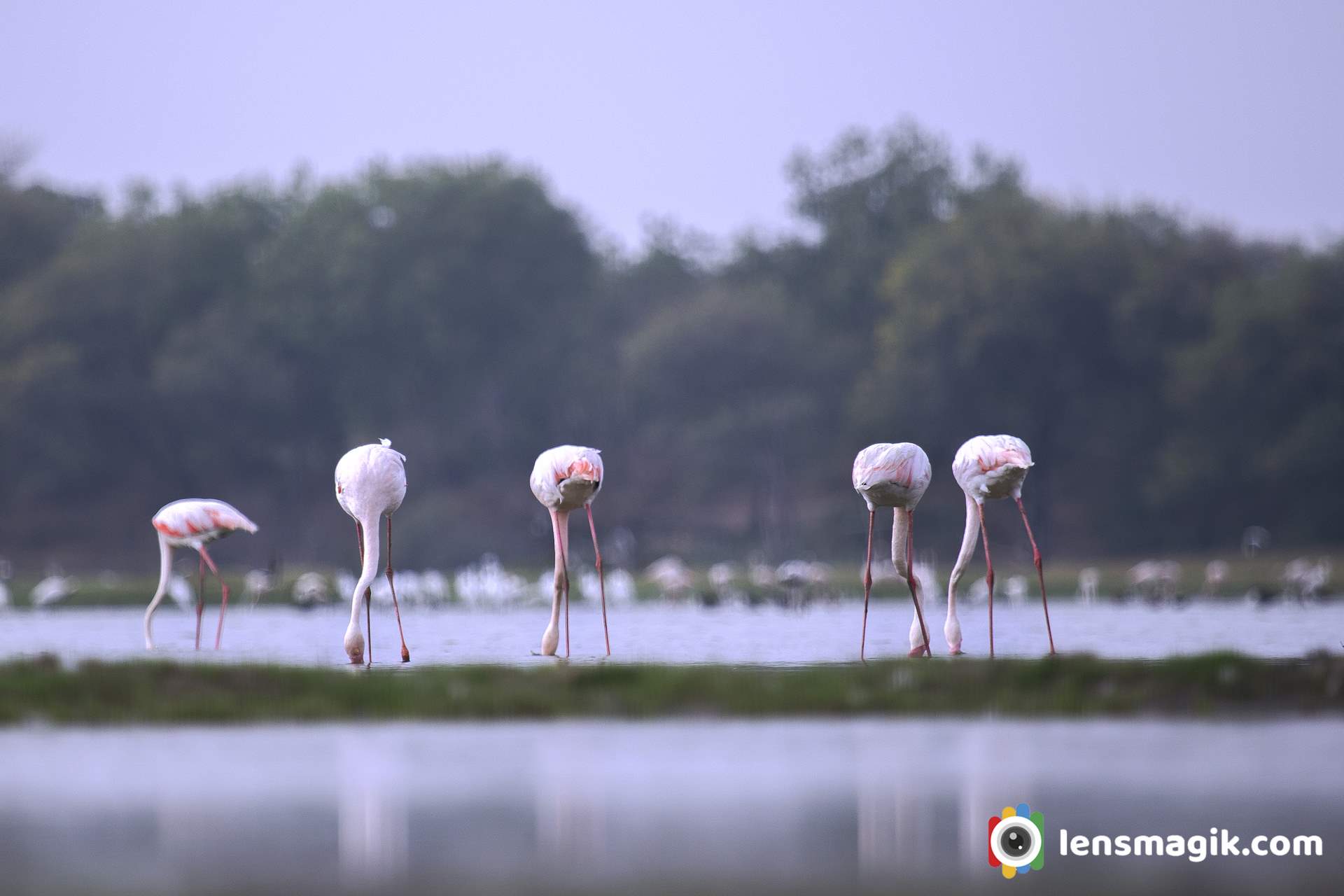
https://youtu.be/9dVBrR9NSOo
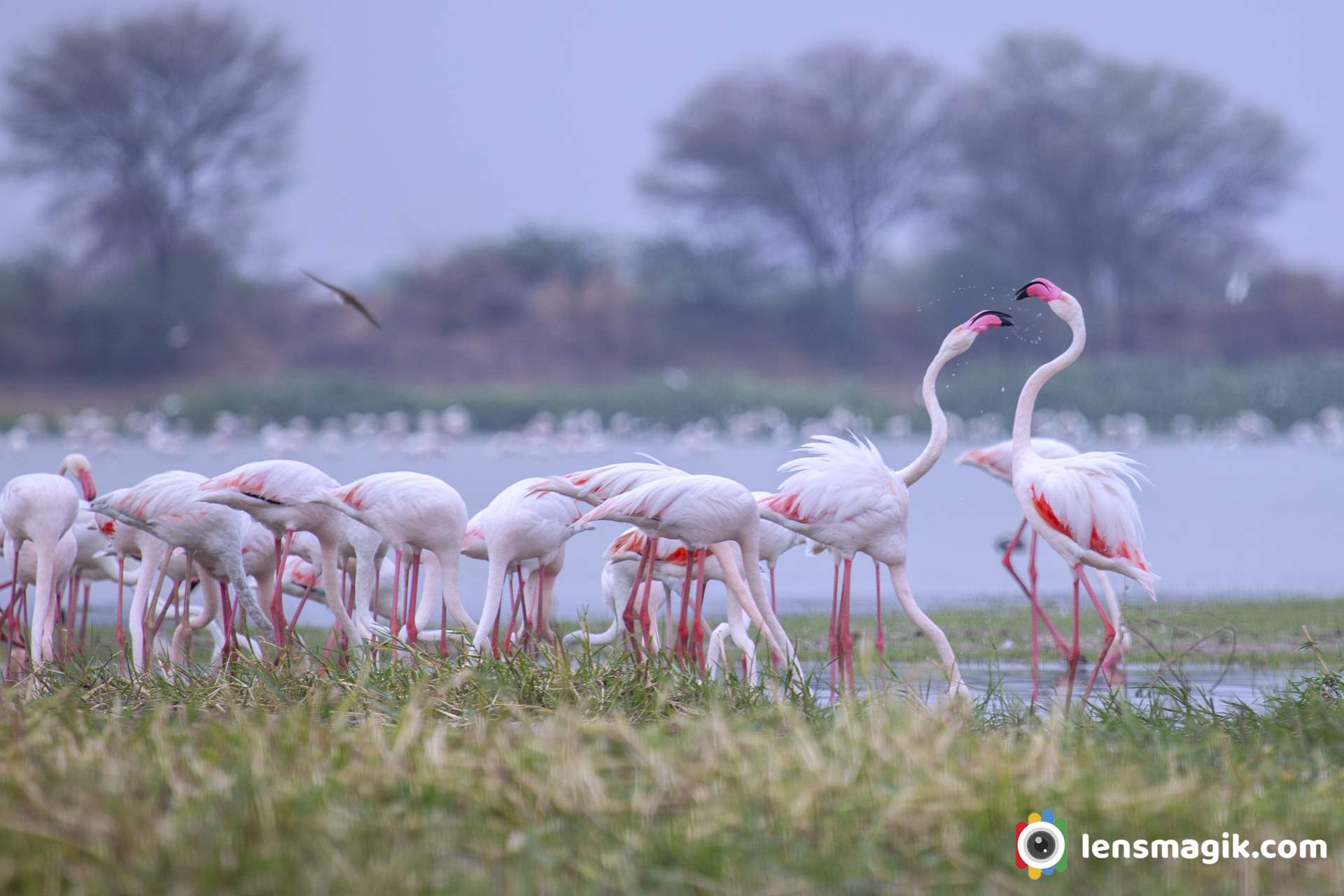
A group of Flamingo Birds at Thol Lake make your frame awesome.
Location : Thol Lake, Gujarat
Thol lake is just 25 km approx. from Ahmedabad. You can visit one day for Thol lake is enough. Also you can find another migratory birds like pelicans , bar headed goose, river tern and many more resident spices.
Ahmedabad to Thol lake distance about 25km
Thol bird sanctuary is located in Kadi Taluka in Mehsana District near sanand Gujarat. It is an artificial lake located near village Thol. In 1912 thol lake was built and it was declared as a Sanctuary in 1988. The main use of lake is use of water for irrigation. The Thol Bird Sanctuary or a Thol lake wildlife Sanctuary India is a habitat of more than 150 spices of birds. Also it is famous for migratory birds Flamingos and Sarus Crane which breeds here.


About Thol Lake / Thol Bird Sanctuary
Thol lake is located near Thol village and its area around 38000 acres. Lake faces all season winter , summer and monsoon. During winter temperature goes to 8 degree and in summer temperature goes to 43 degree. Thol lake is under control of Forest and Irrigation department of Gujarat. Thol lake water storage capacity is around 84 million cubic meters. Thol wildlife sanctuary is declared as Eco Sensitive Zone .
Flora and Fauna Thol Sanctuary :
Thol lake has many vegetation plants like Zizyphus, Acacia nilotica, Ficus, Capparis, Azadirachta indica etc. There are also some mix flora of Marshy and Aquatic plants reported in Thol Lake.
Thol lake is protected area and it is very good habitat for water birds. In thol bird sanctuary there are more than 150 spices of birds found . Among these more than 60 % of birds are water birds. Flamingo bird is most prominent bird of Thol Lake. Also Sarus Crane nest in large number here.
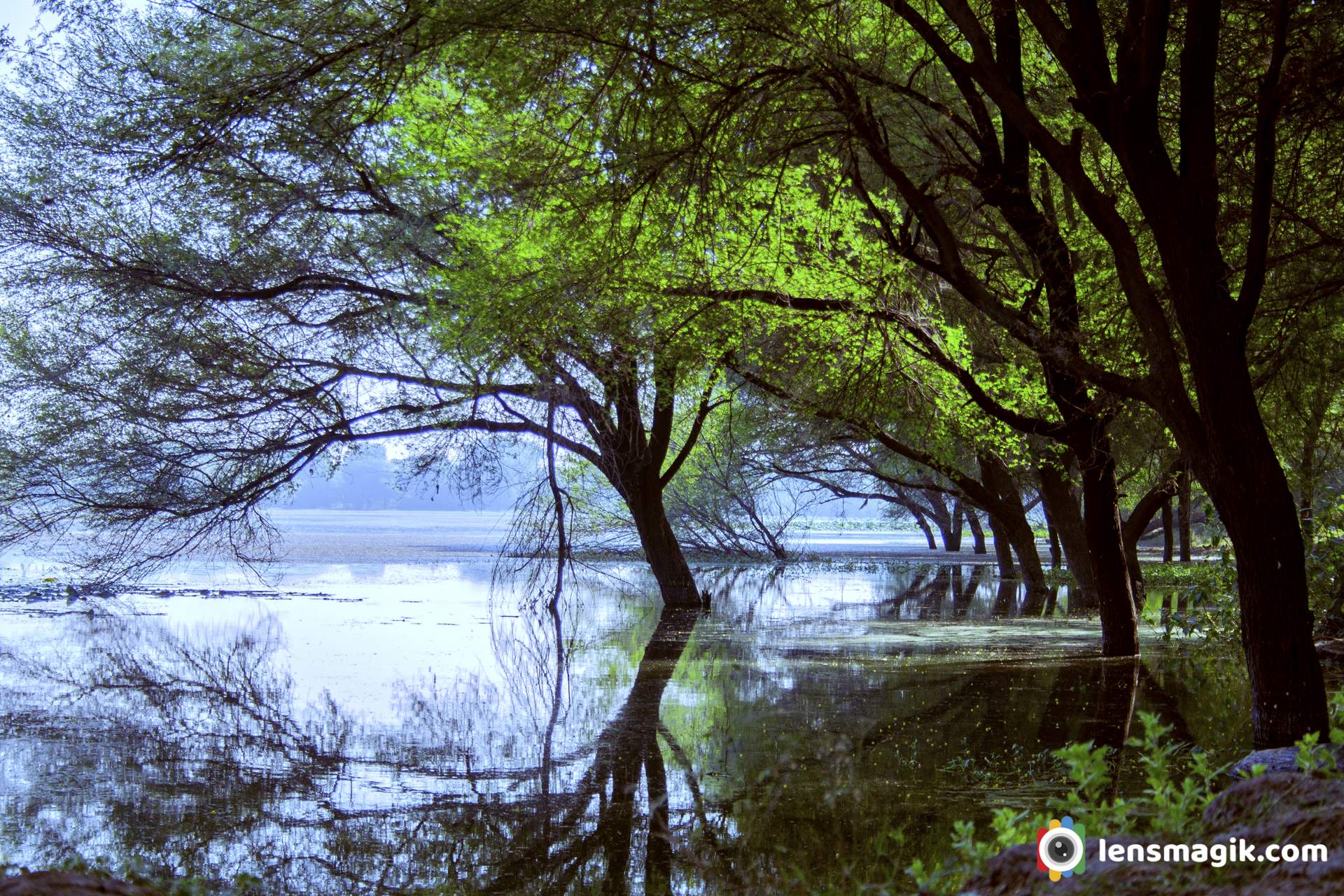
Famous Migratory Birds of Thol Lake
• Flamingos
• Sarus Crane
• Great White Pelican
• Mallards
• Bar Headed Geese , Grey Headed Geese
• Waterfowl
There are also some spices reported here like Dalmatian Pelican, Indian Skimmer, Greater Spotted Eagle, Indian Vulture and white rumped Vulture etc. In Mammals Bluebull, Blackbuck and Golden jackal reported here.
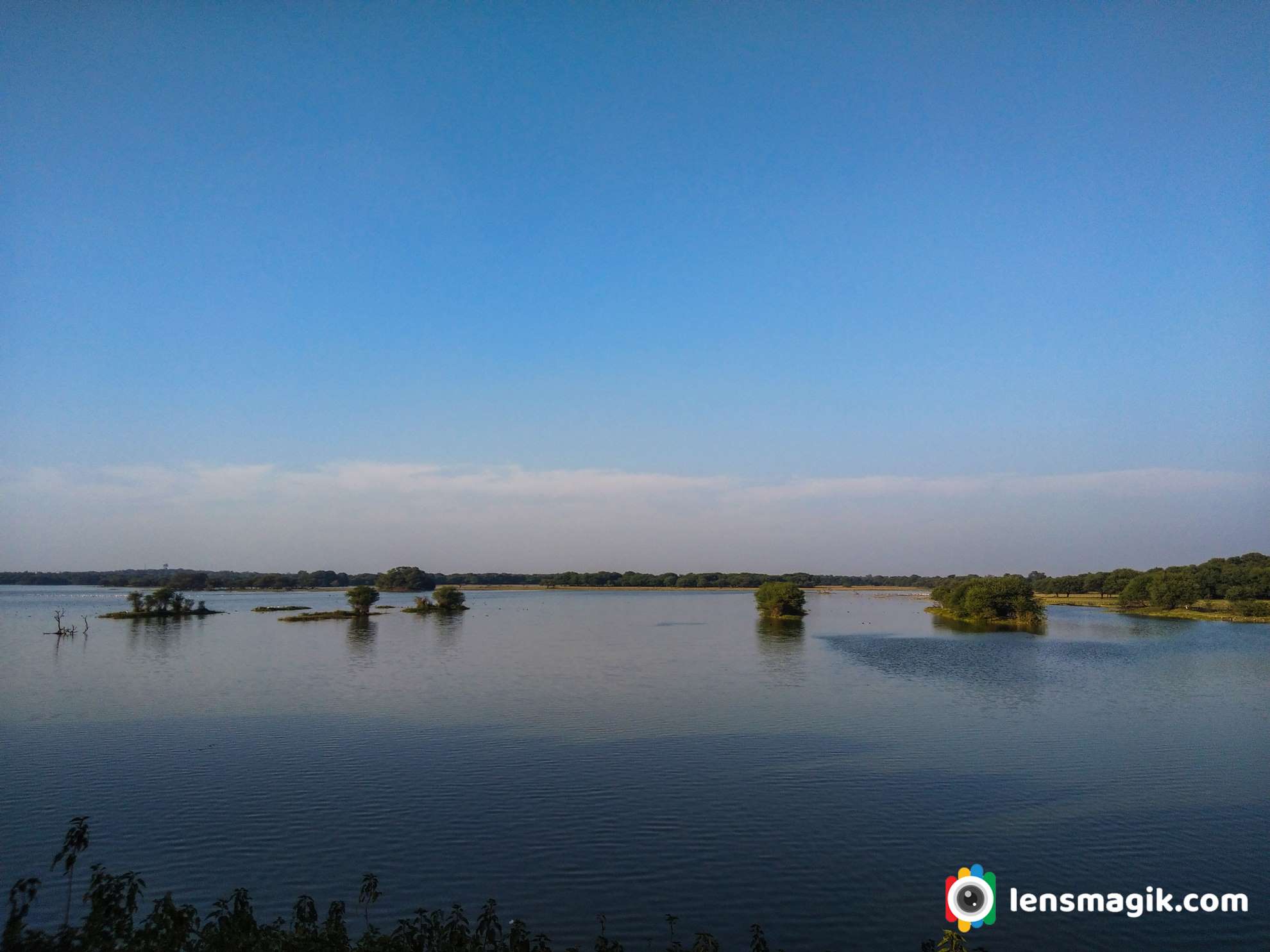
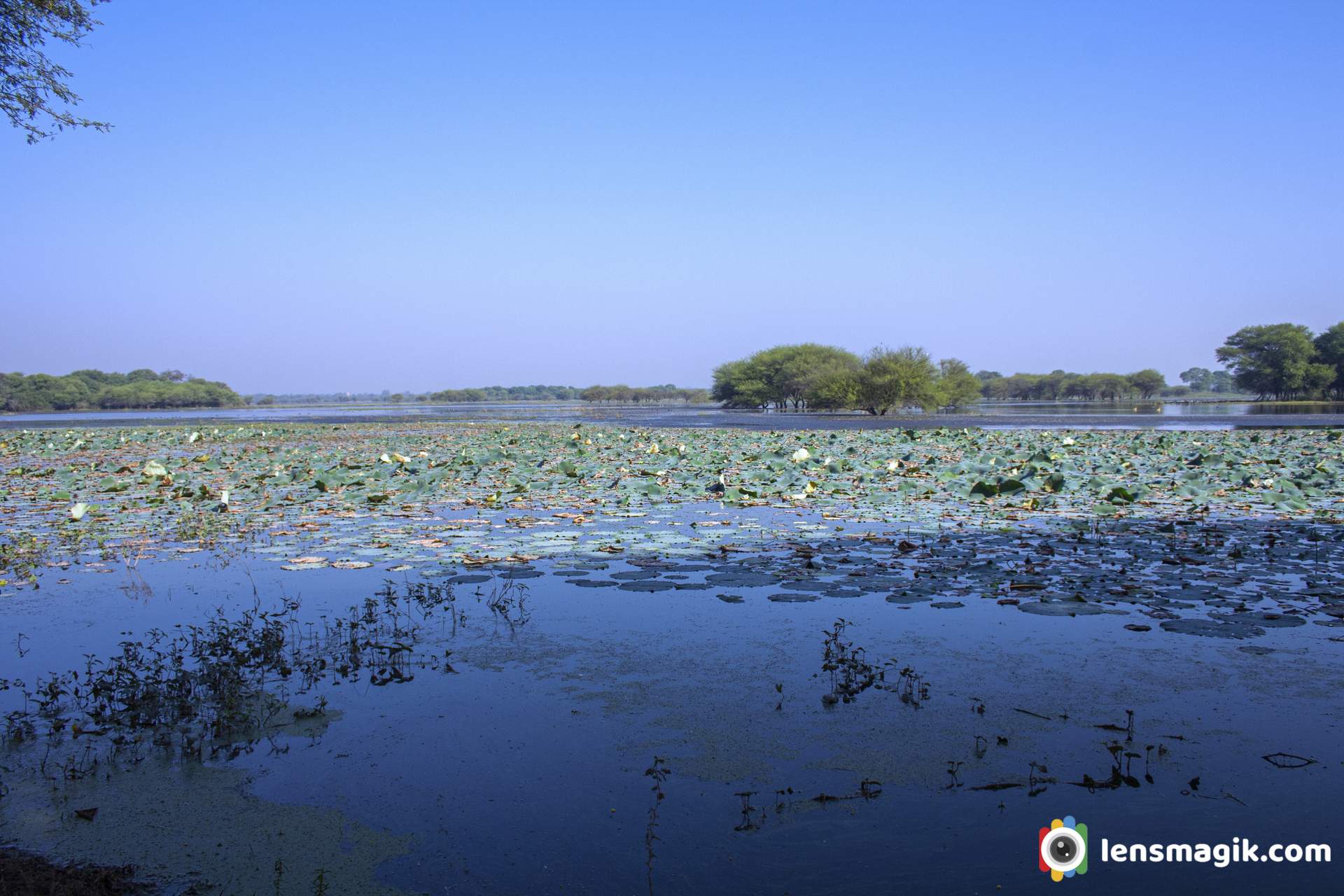
Thol Lake Timing and Fees :
Thol lake open everyday at 6 AM in morning and close at 5.30 PM in evening. Entry fees for Thol Lake or Thol sanctuary is 50 INR for per person. Also Camera fees extra at 200 INR and if you go via car then car fees also 500 INR. Foreigner fees are 10 $ per person.
Best Time to Visit Thol Sanctuary / Thol Lake :
Best time early morning for Thol Lake. In winter if you go before sunrise you can see Twilight sky amazing with lake shore and birds sound .During all season Thol lake has its own beauty. Every season you can visit at Thol Lake. But mostly during winter from November to March season is best for Thol Sanctuary visit. Because during winter lots of Migratory birds came here and stay for long time so for birding winter season is best at Thol Lake. Also during summer some of birds stays here like flamingos and pelicans, geese etc. So you can also see them in summer too. Also during summer water level of lake is low so may be the birds you can get in deep or sometimes closer. During monsoon most people don’t visit but if you like macro photography then you must visit Thol lake in monsoon. You can get some excellent macro subjects like waterdrops , Spiders, Insects etc.
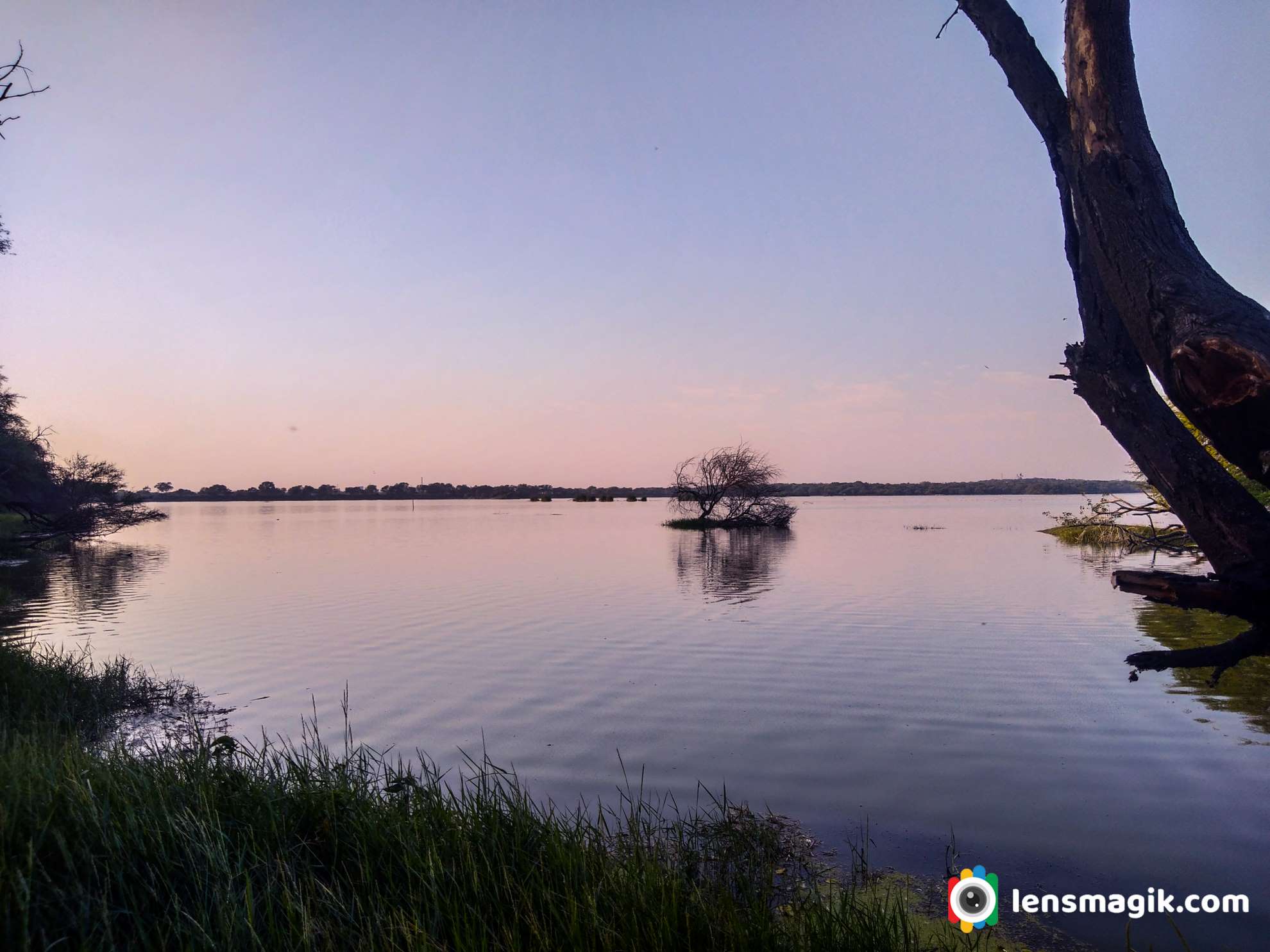
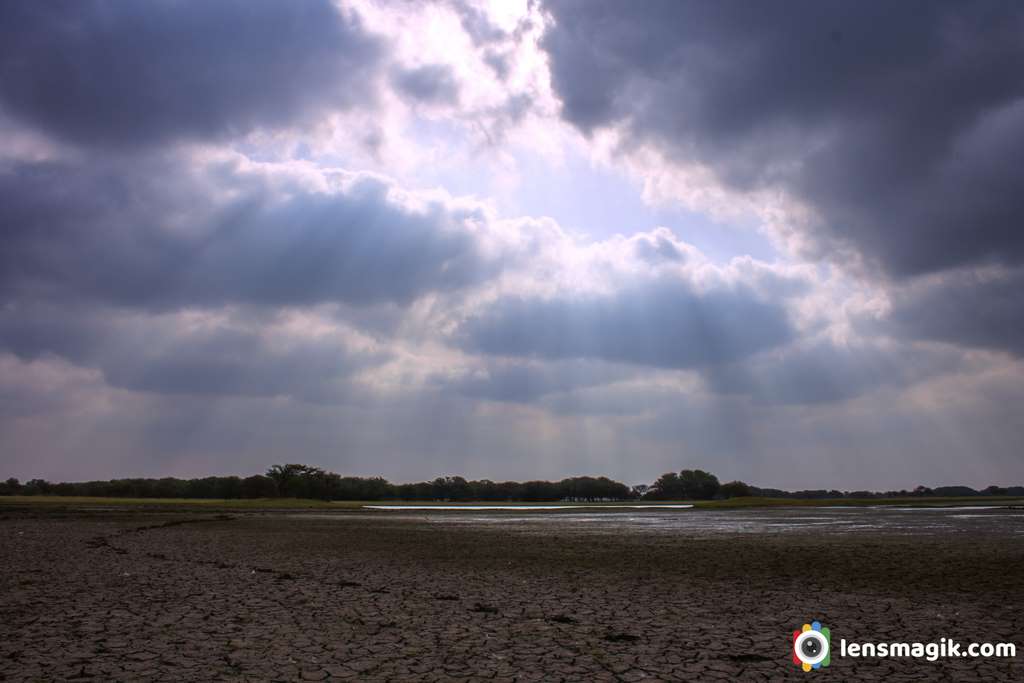
What to do and What not to do in Thol Lake / Keep in mind while visiting sanctuary in India :
• Keep silence in sanctuary
• Maintain discipline
• Keep sanctuary clean
• Do not throw plastic waste anywhere in sanctuary
• Protect wildlife
• Observe birds, mammals etc and protect them and identify them
• Follow rules of wildlife protection act -1972
• Don’t disturb birds and animals
• Don’t enter in sanctuary with liquor and inflammable objects
• Don’t make loud noice.
• Enter in sanctuary with permit only and keep receipt till you leave sanctuary
• Don’t feed birds and animals
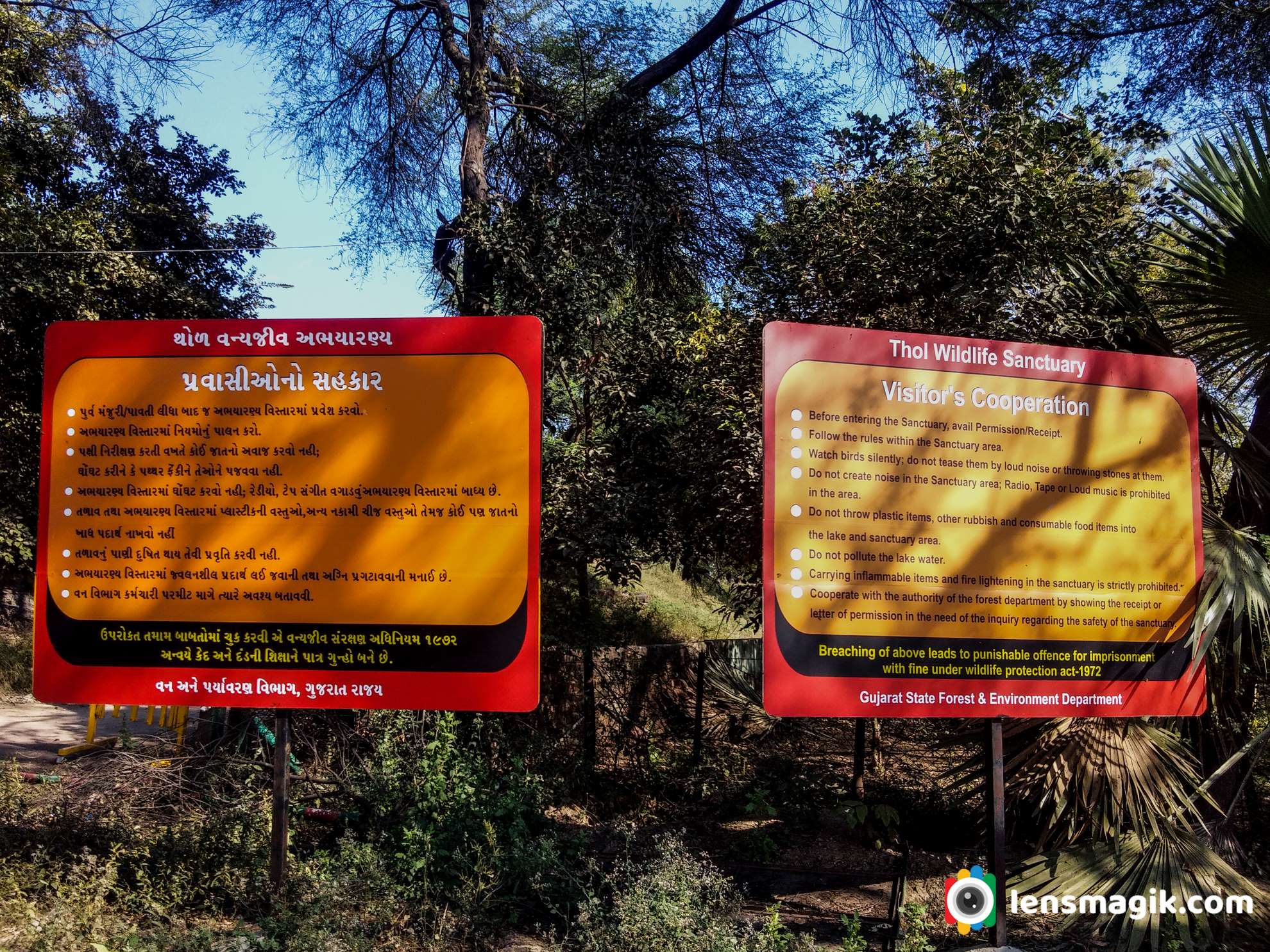
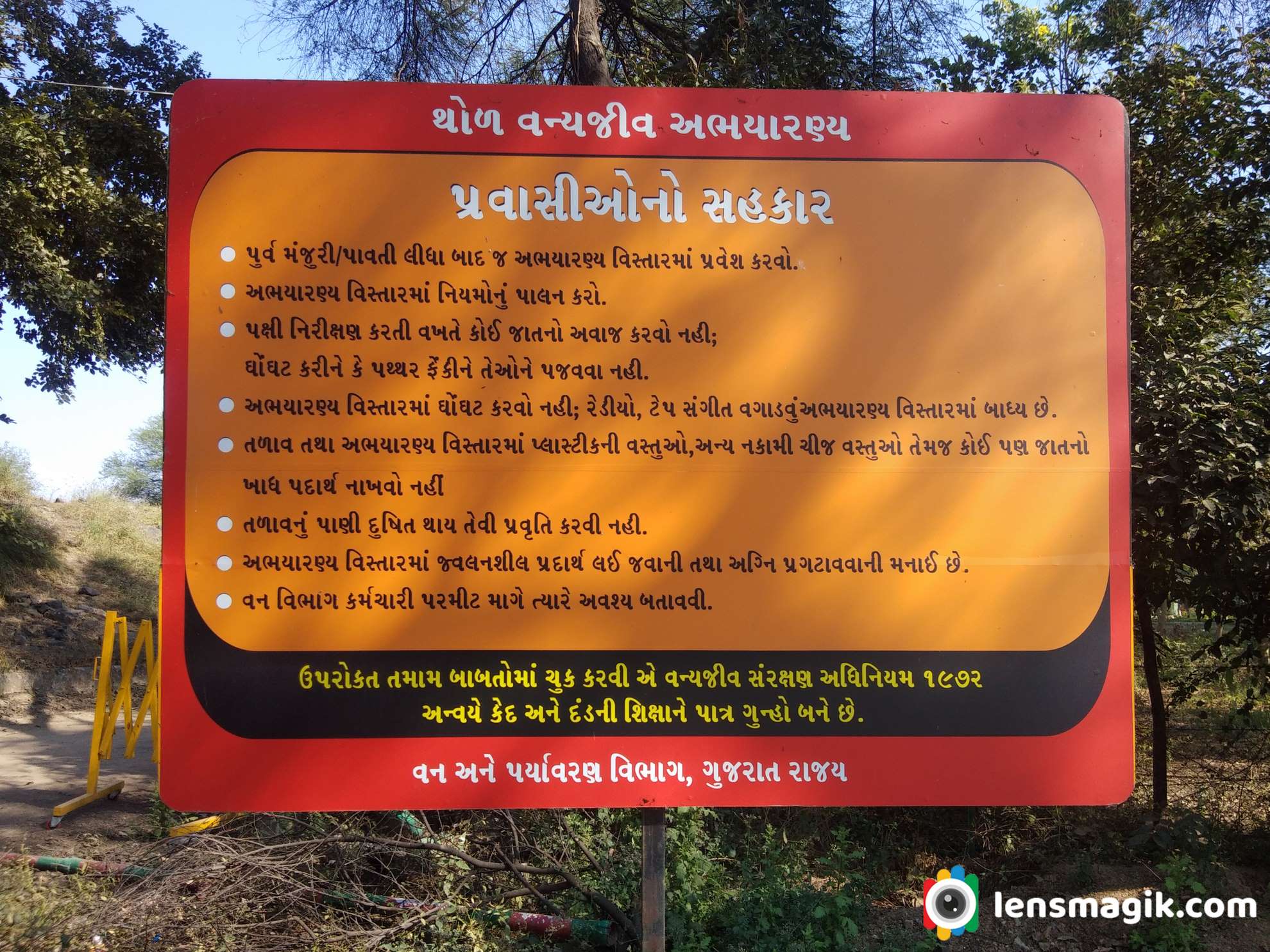
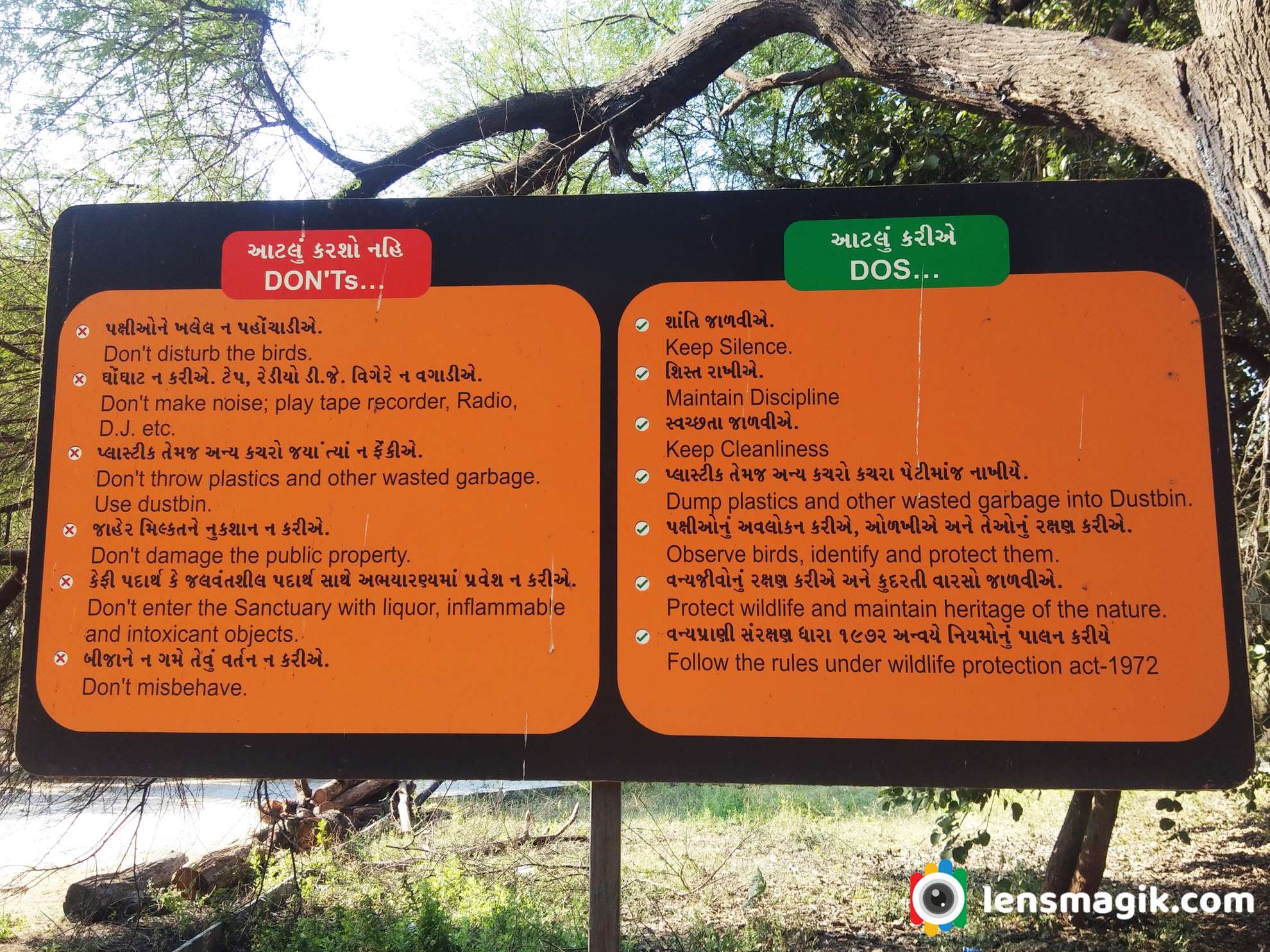
Where to Stay near Thol Lake :
Well near to Thol Lake there are not good places to stay at night but you can go near to destinations like Kadi, Kalol or Gandhinagar , Ahmedabad where you can get good places to stay at night. Nearest I suggest Kalol around 15-18 km or you can go Ahmedabad around 25 km.
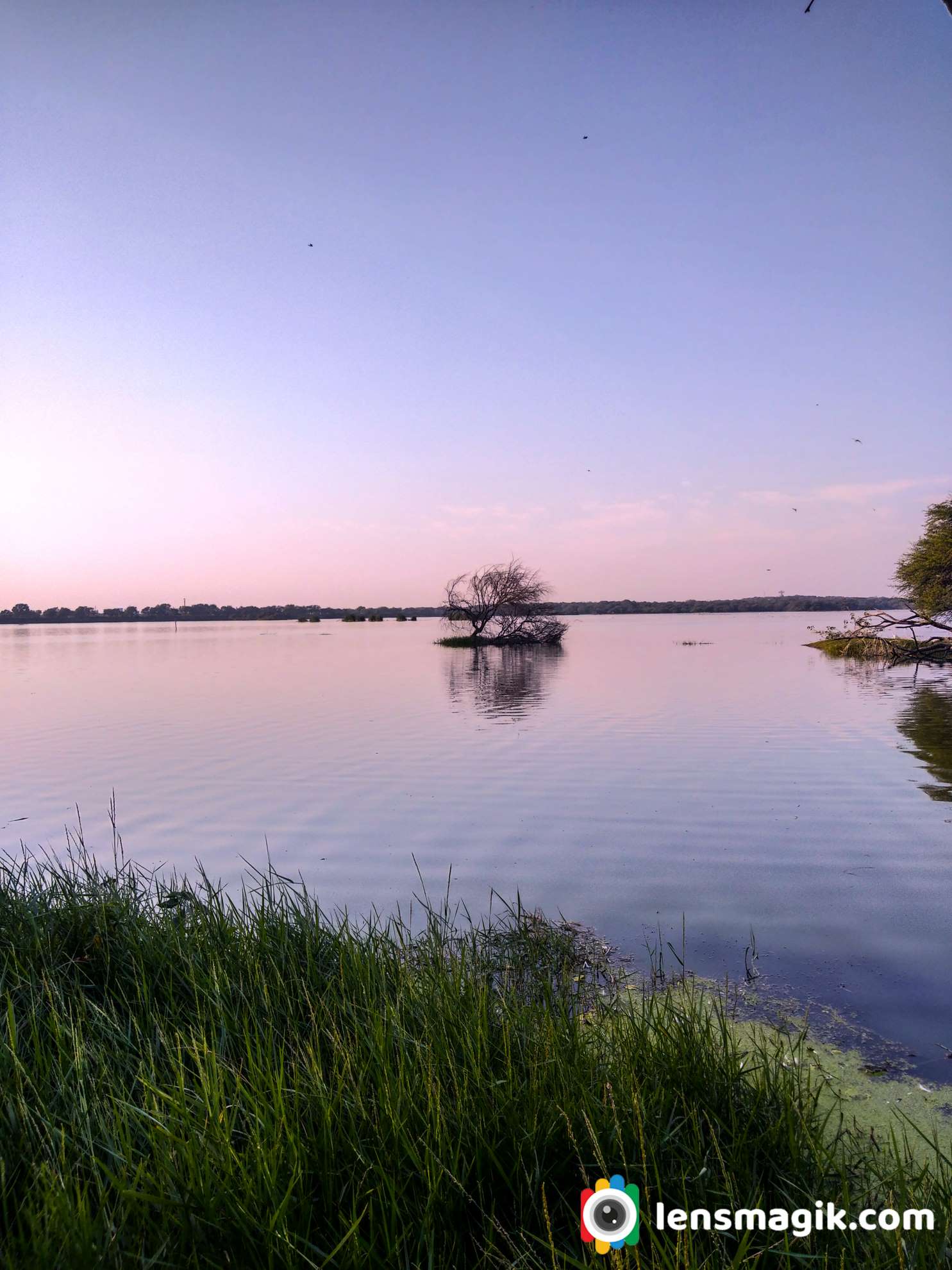

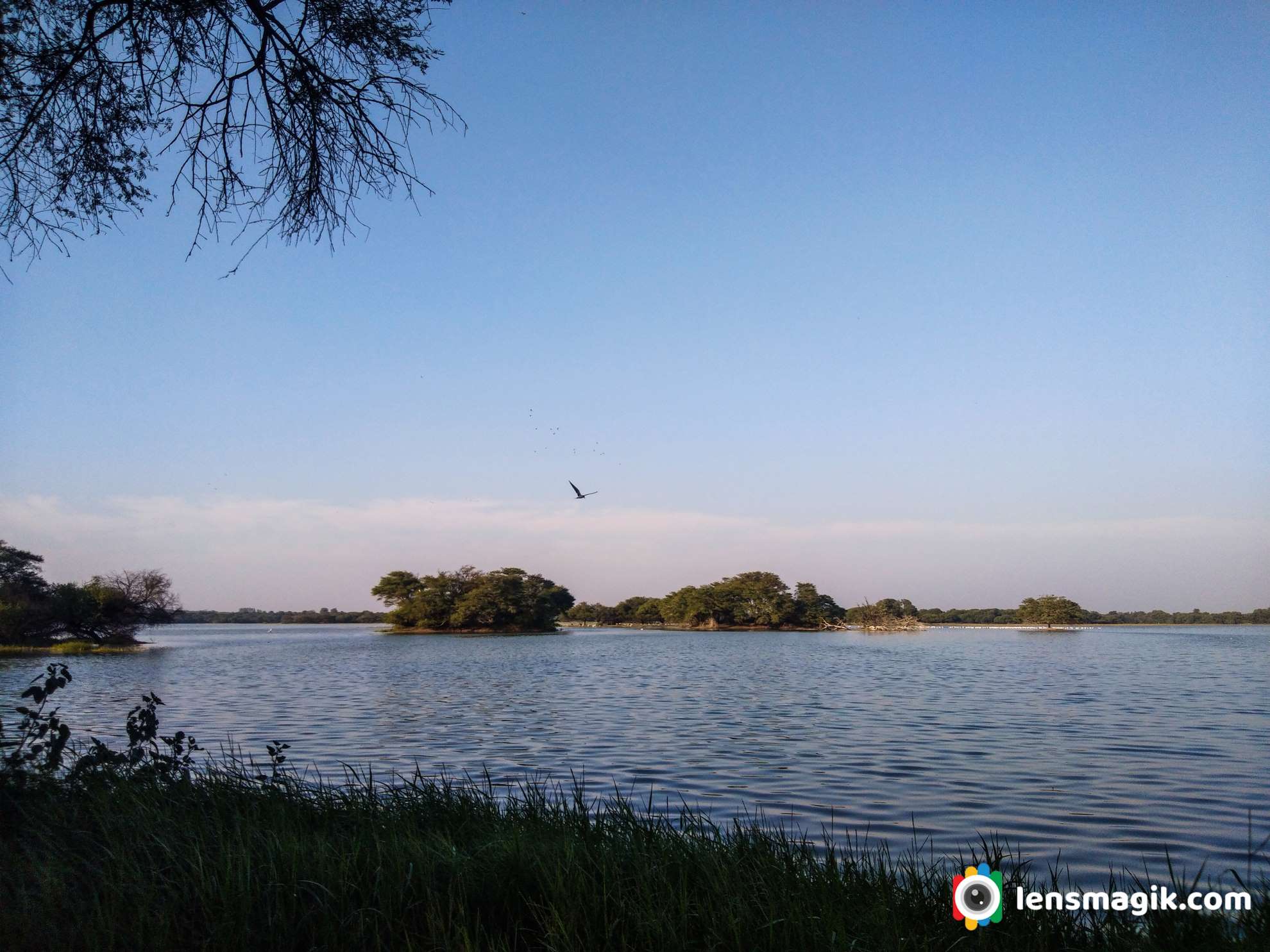


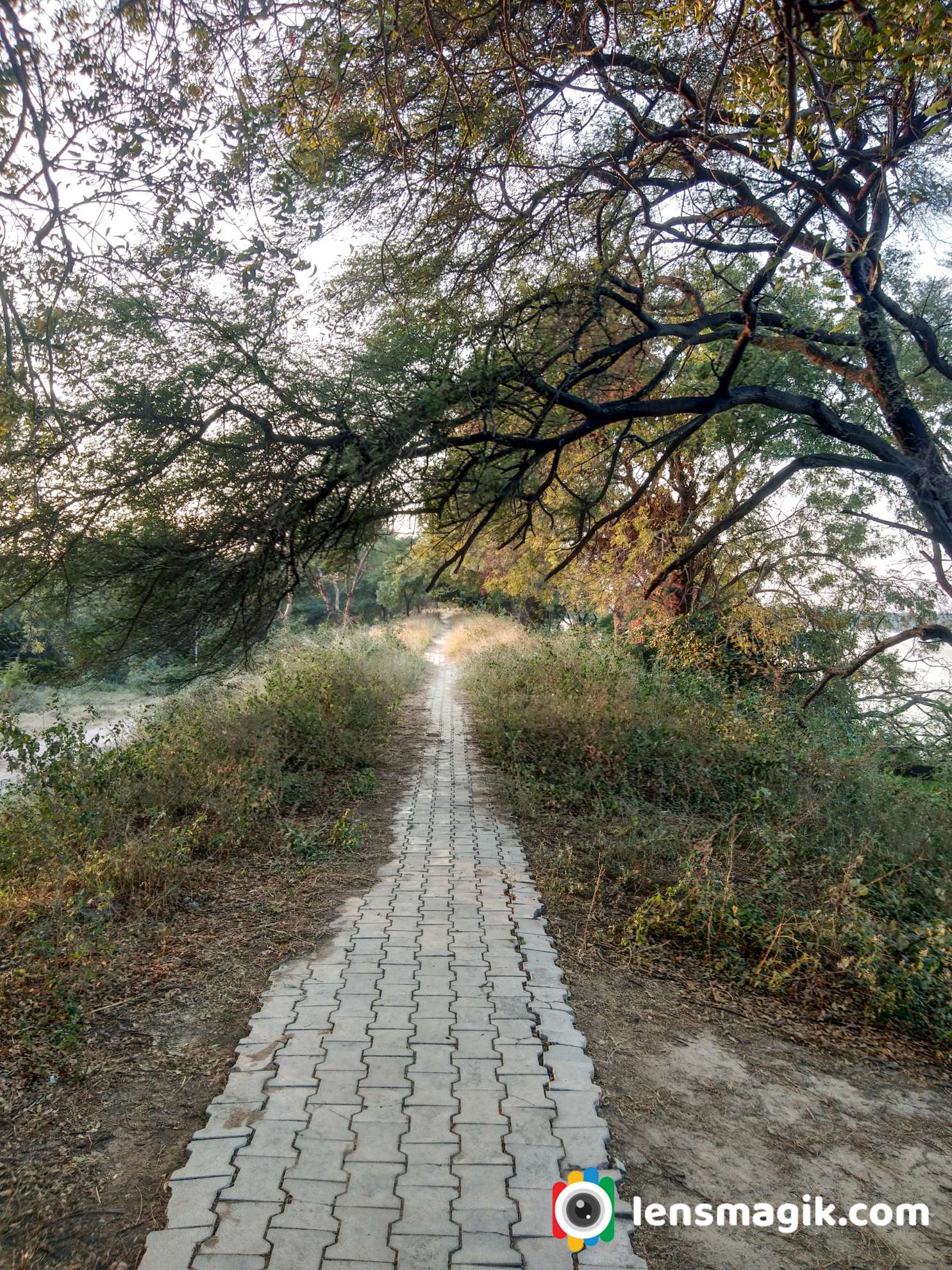
Places to Visit near Thol Lake :
If you are staying at Ahmedabad then go for Ahmedabad Darshan , Pol area of Ahmedabad and Adalaj Ni Vav ( Heritage places ) etc. Also go for fast food test at night at Manek Chauk and SindhuBhavan road there are lots of option for food lovers like Urban Chauk, Freezbee etc.
If you stay at Gandhinagar then visit Mahatma Mandir at Gandhinagar, Sarita udyan , Akshardham Temple etc.
I would suggest Modhera Sun Temple if you had some more time which is around 100km from Ahmedabad. For bird lovers and bird photographer I would suggest visit Little ran of Kutch (LRK) during Winter season, Pariej Lake, Indroda park Gandhinagar, Jessore Sanctuary Banaskantha etc.
How to Reach Thol Sanctuary :
Nearest airport is Ahmedabad and from Ahmedabad thol lake distance is around 30-40 km
Also for Railway station is Ahmedabad because you can get all frequency and destinations from Ahmedabad railway station.
Bahucharaji or Becharaji is located in Mehsana district Gujarat. It is a Hindu Temple of Hindu Goddess Bahuchara Mata.Bahucharaji Temple is in Bahucharaji town near shankhalpur village Mehsana. Bahucharaji Temple is in center of town. Bahucharaji temple managed by State Government. Ma Devi Bahucharaji is worshipped here as Goddess Bala Tripura Sundari.

Story of Bahucharaji temple
As per old people says Dandasur demon was stayed near Becharaji and won Patallok, Mrutyulok and Devloka all three lokas. The Devil has boon from Lord Shiva that a godeess appeared against him in small girl form. All 3 lokas Devas went to Goddess Parambaa to save them from demon. The Bahuchar mata appeared in form of small girl for fist time at Varakhadi tree . So bahuchar mata known as Bala Bahuchara Mata. Goddess killed demon with Trishul and bought peace for people of earth.
- Main vehicle of Bahuchar Mata is cock.
- Bala Yantra of Crystle and encased In gold is worshipped at temple.
- Bahuchar Mata carries sward on top right hand, Abhay mudra on bottom right, a text of scriptures on top left and trident on bottom left.
- In my family we believed that new born male child first time hair removed ( Mundan ) after 1 year in temple.
- It is also believed that any new child don’t speak properly then bought here and on his behalf cock donated to Mata and in few days child can speak properly.
- All over from India devotee came here and pray for blessing of Goddess. On purnima ( full moon ) day is special for devotees. On Chaitri Poonam 5 days fair arranged near the Temple and in city.
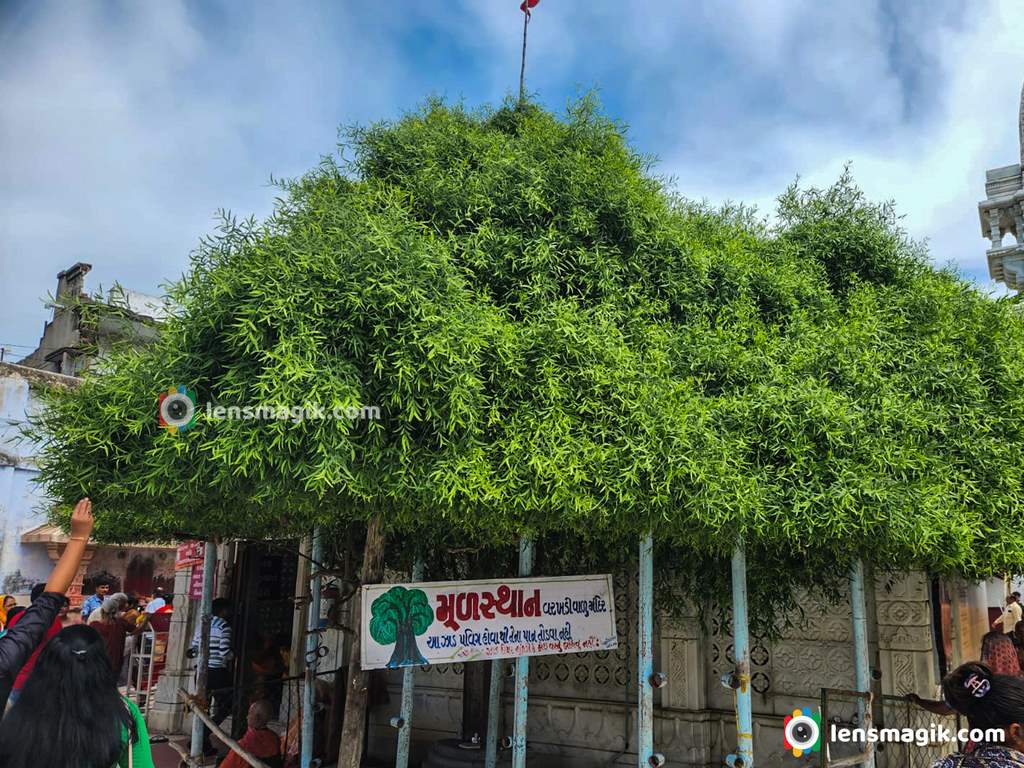

Where to Stay in Bahucharaji or Bechraji :
There are lots of Dharamshala , Hotels, Guest Houses in Bahucharaji. All places are in good rate available. People can also go to Mehsana , Shankhalpur for stay . Also people can go to Modhera Sun Temple for visit.
Bahucharaji Mata Temple Darshan Timing :
Bahucharaji Mata temple darshan timing is from 5.30 AM to 10 PM .
Nearest Airport : Ahmedabad
District : Mehsana
Pincode of Bechraji : 384213